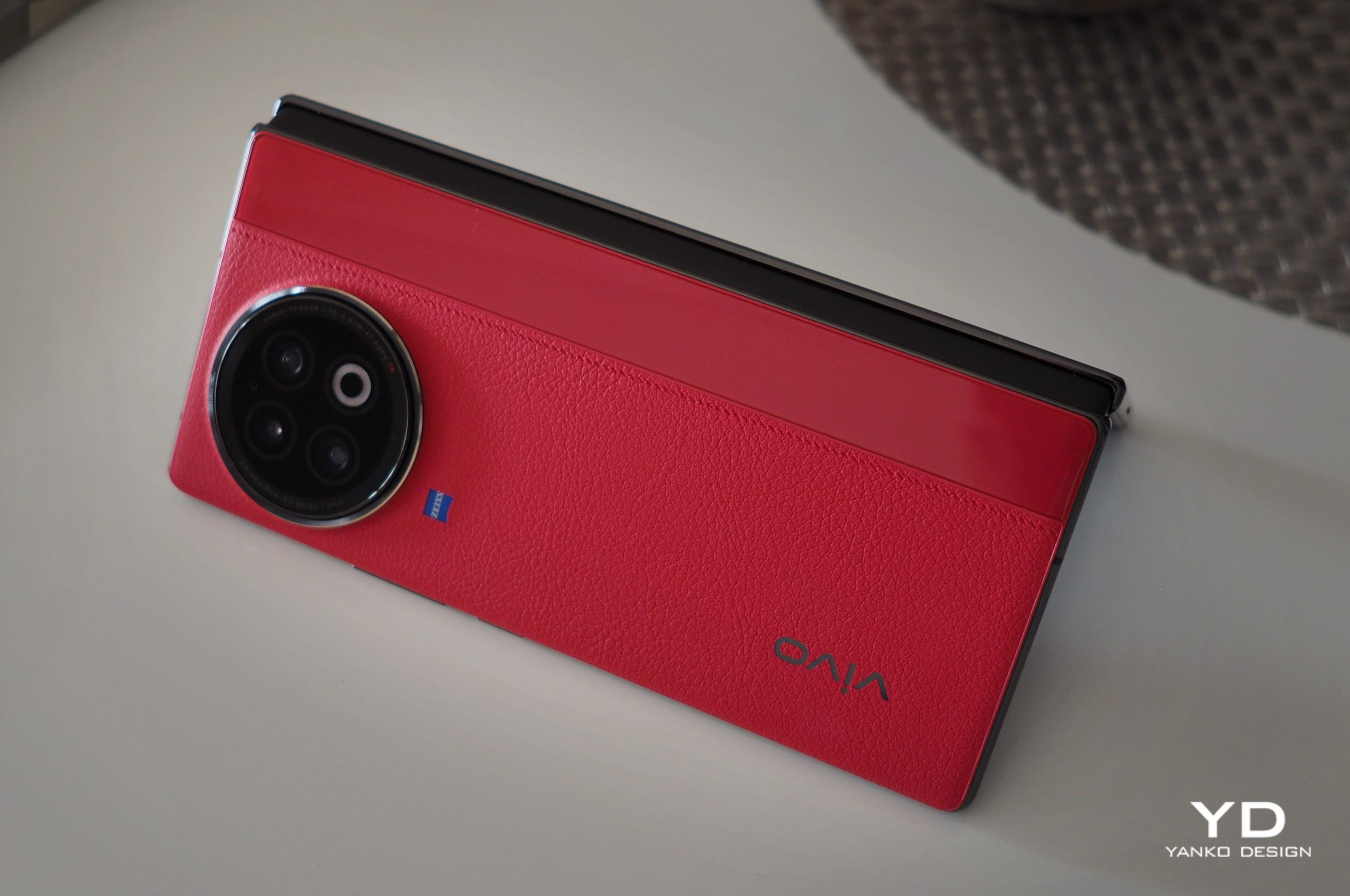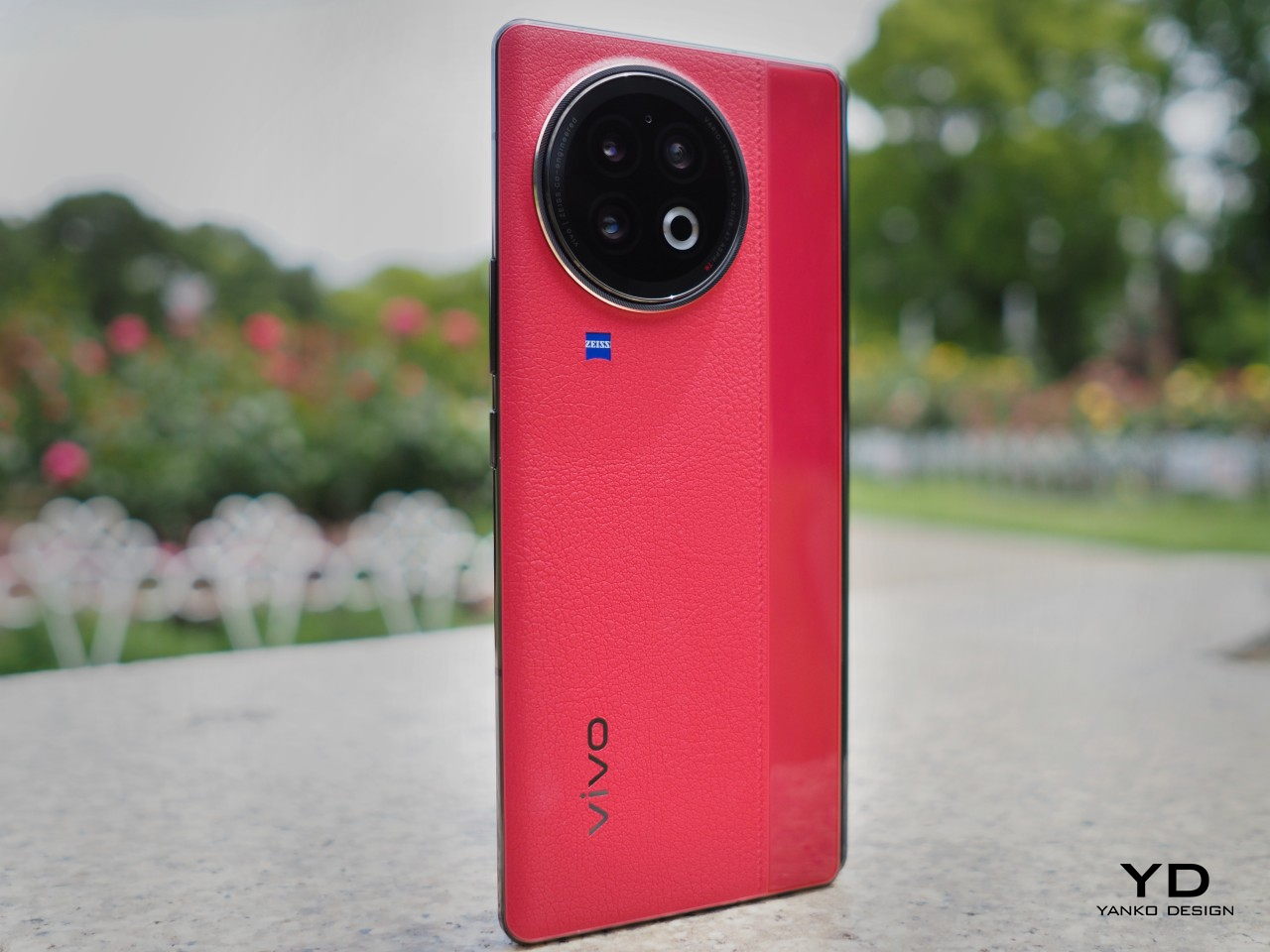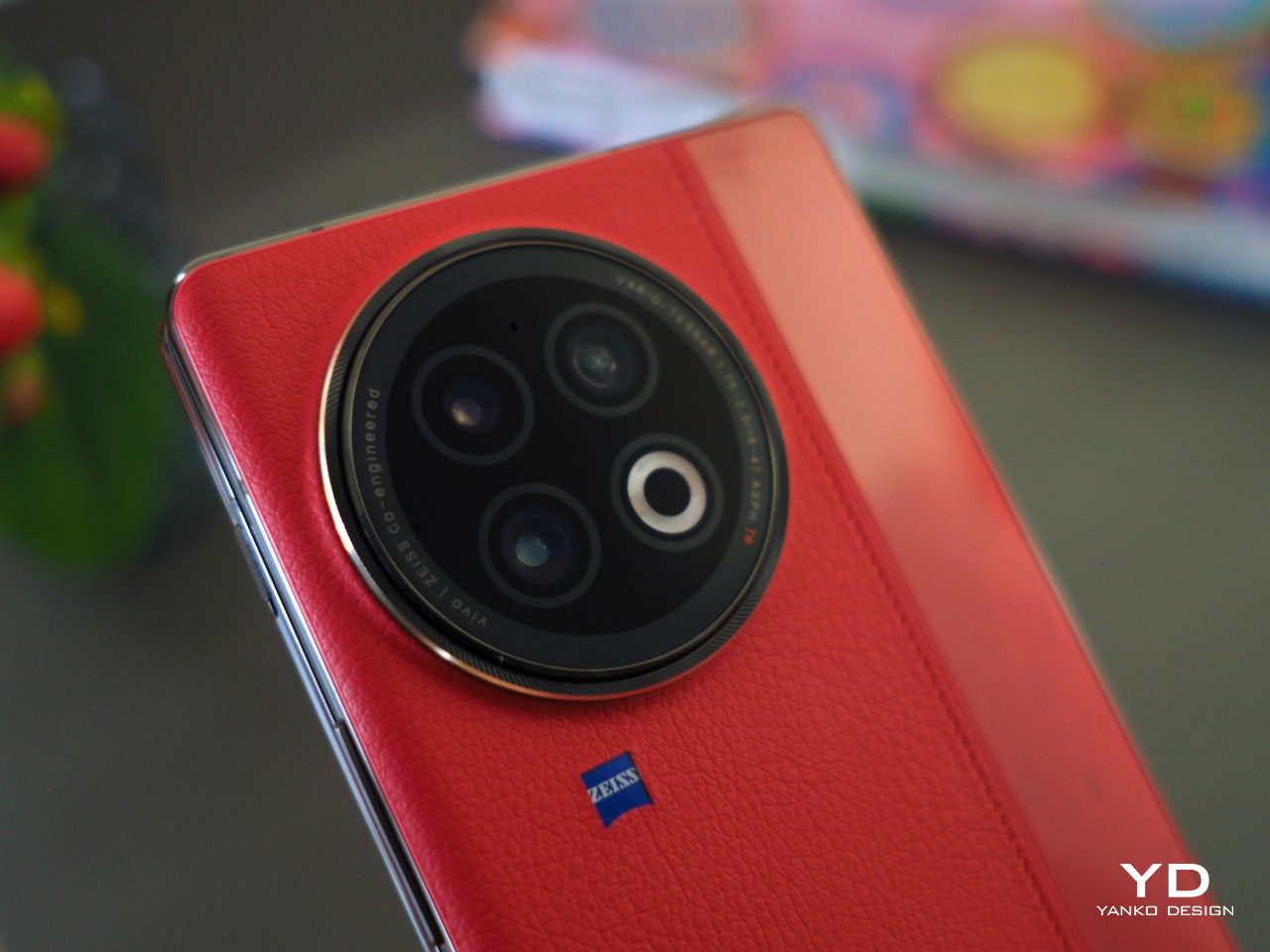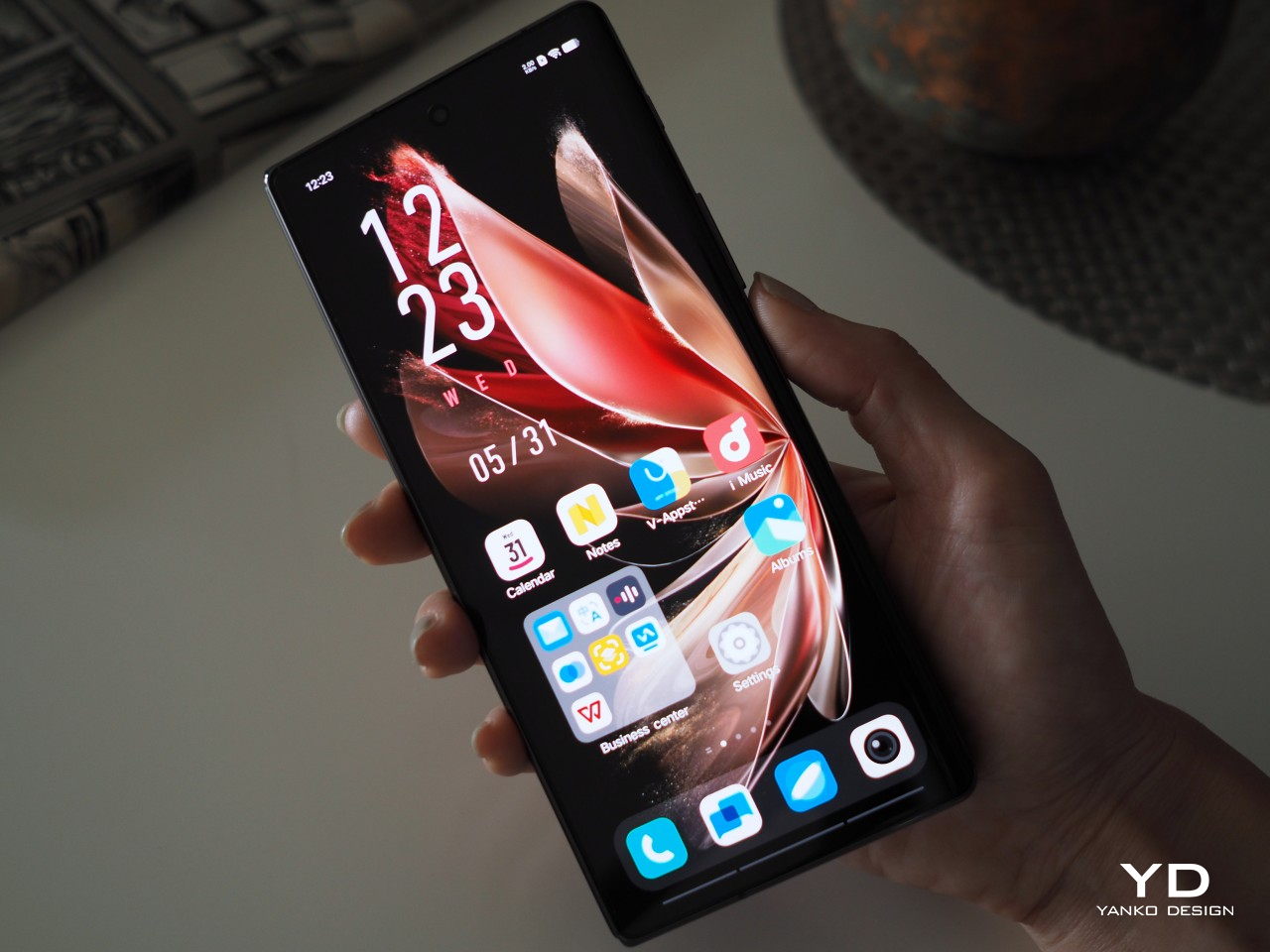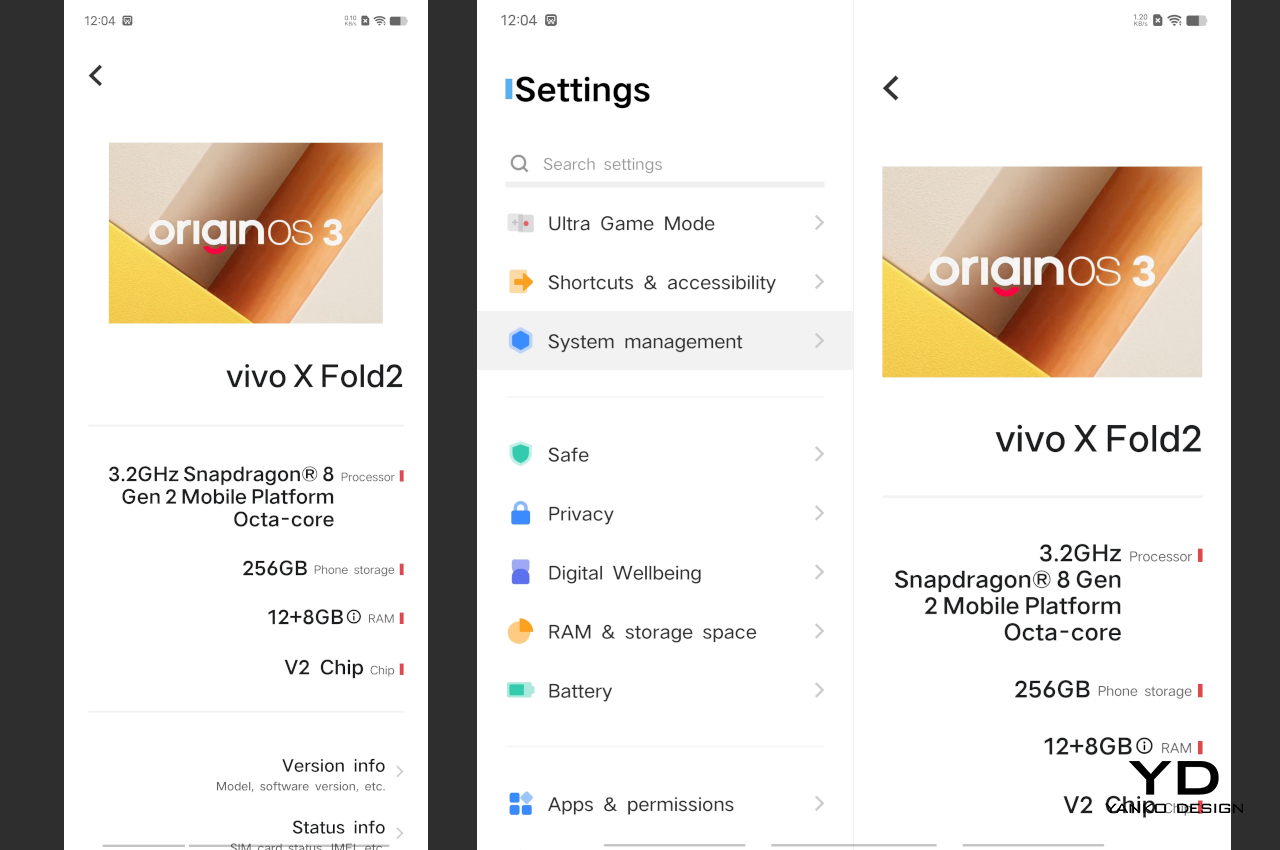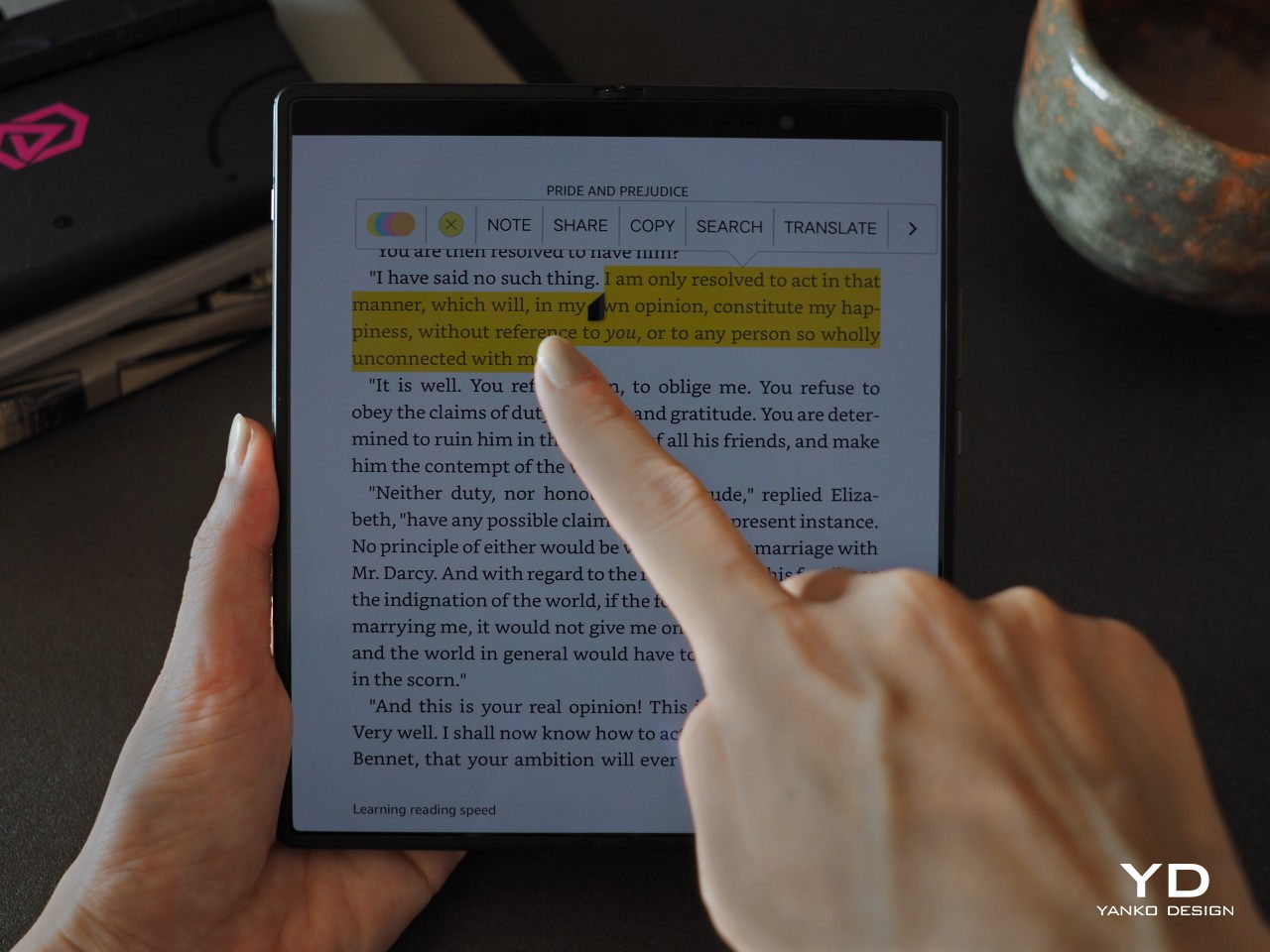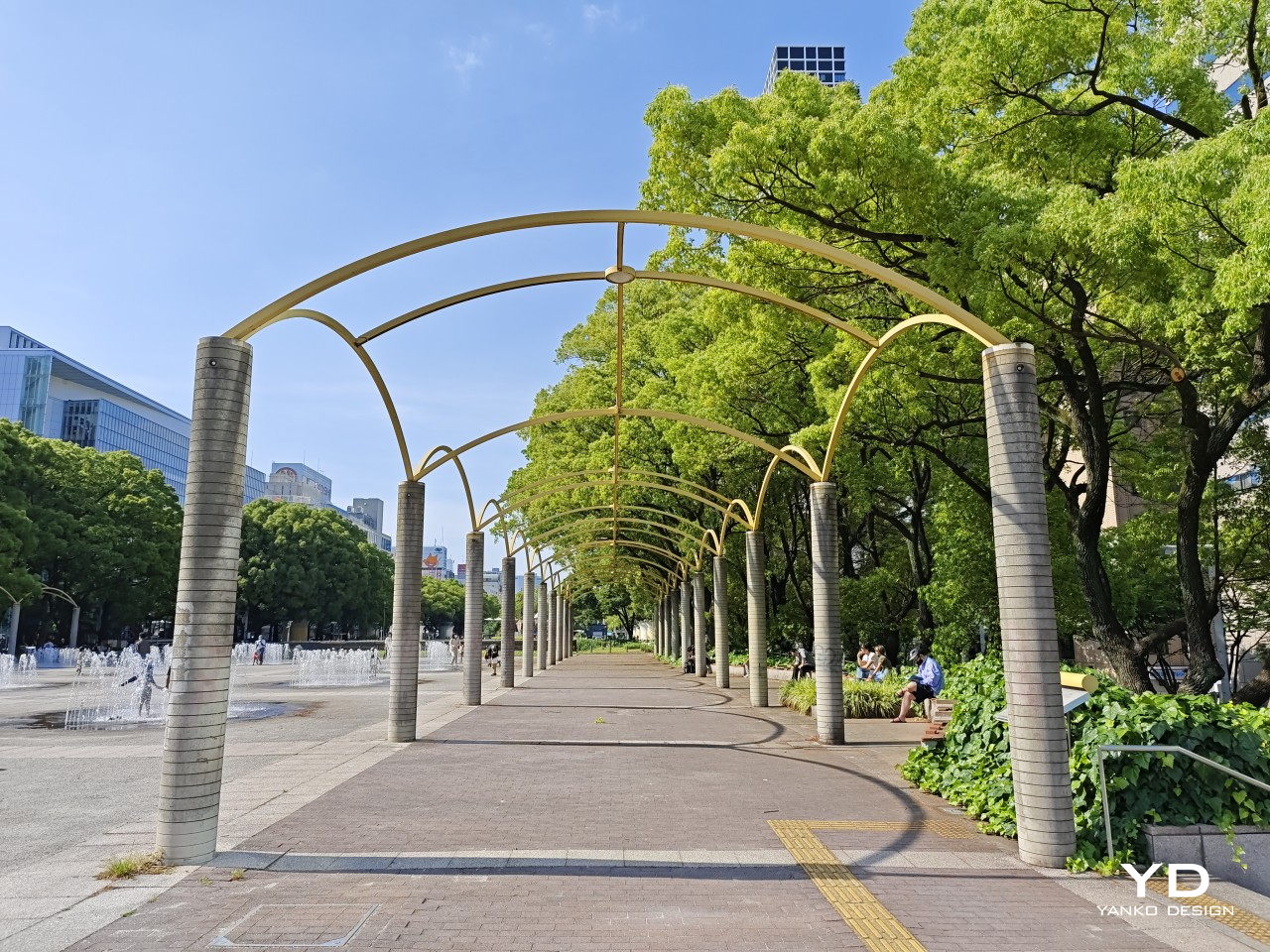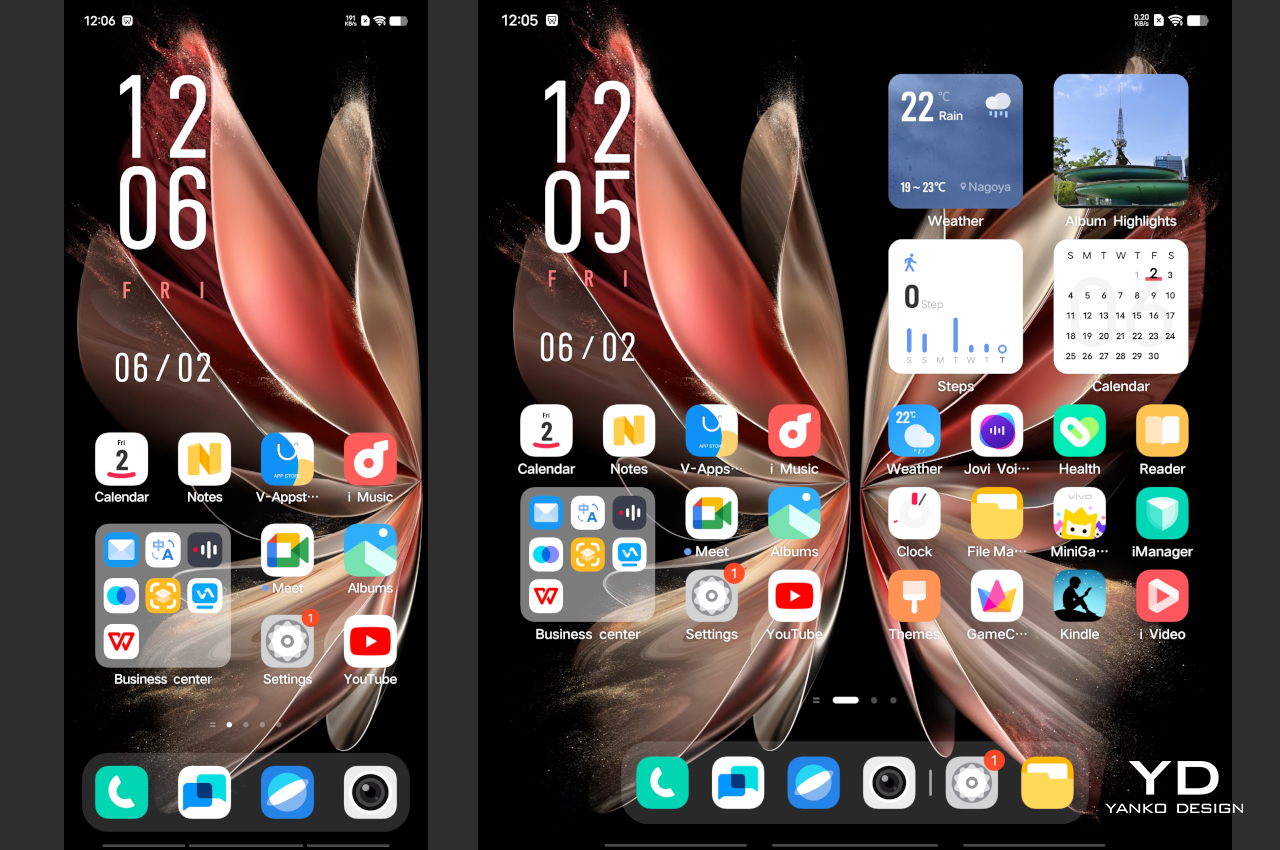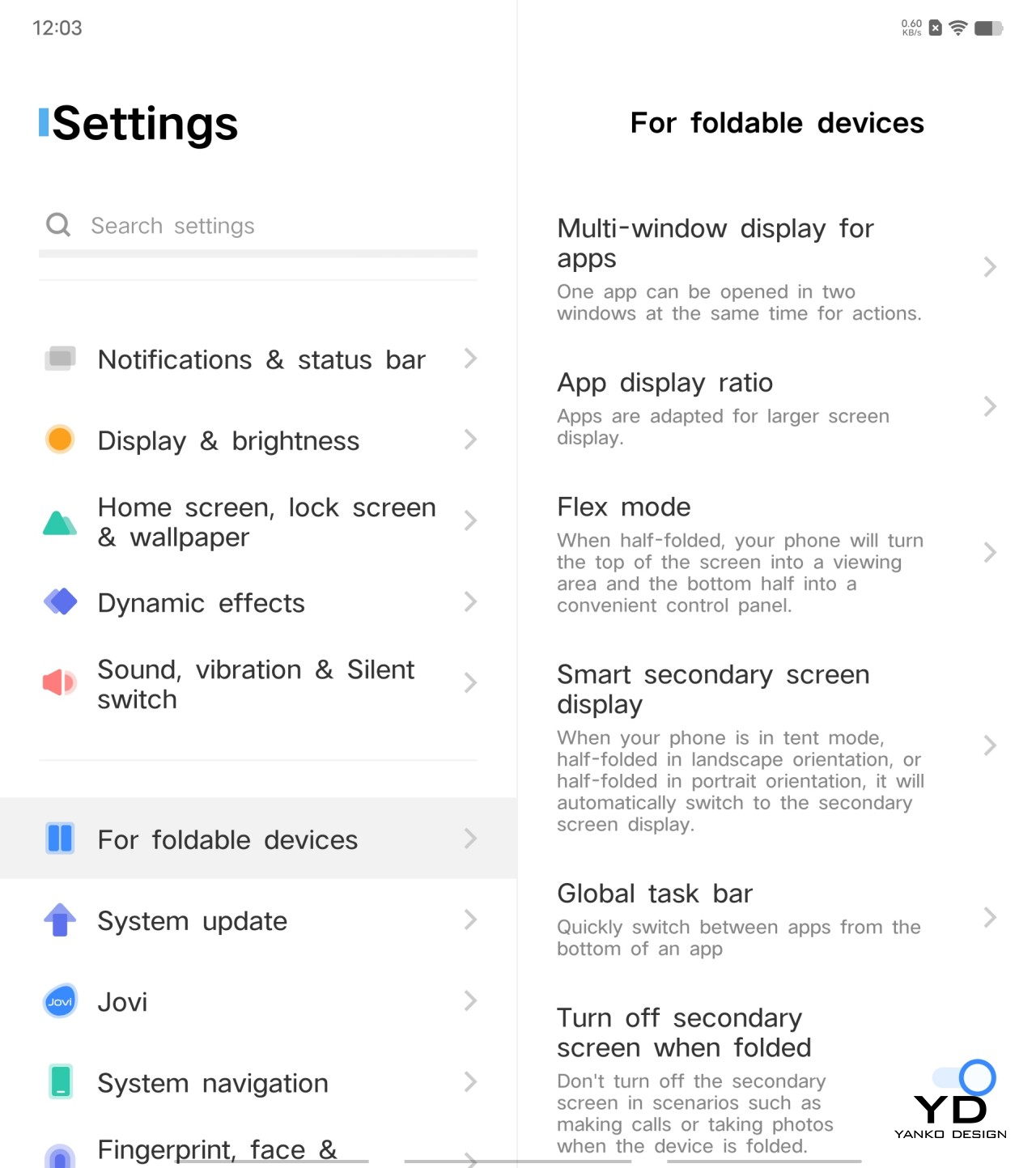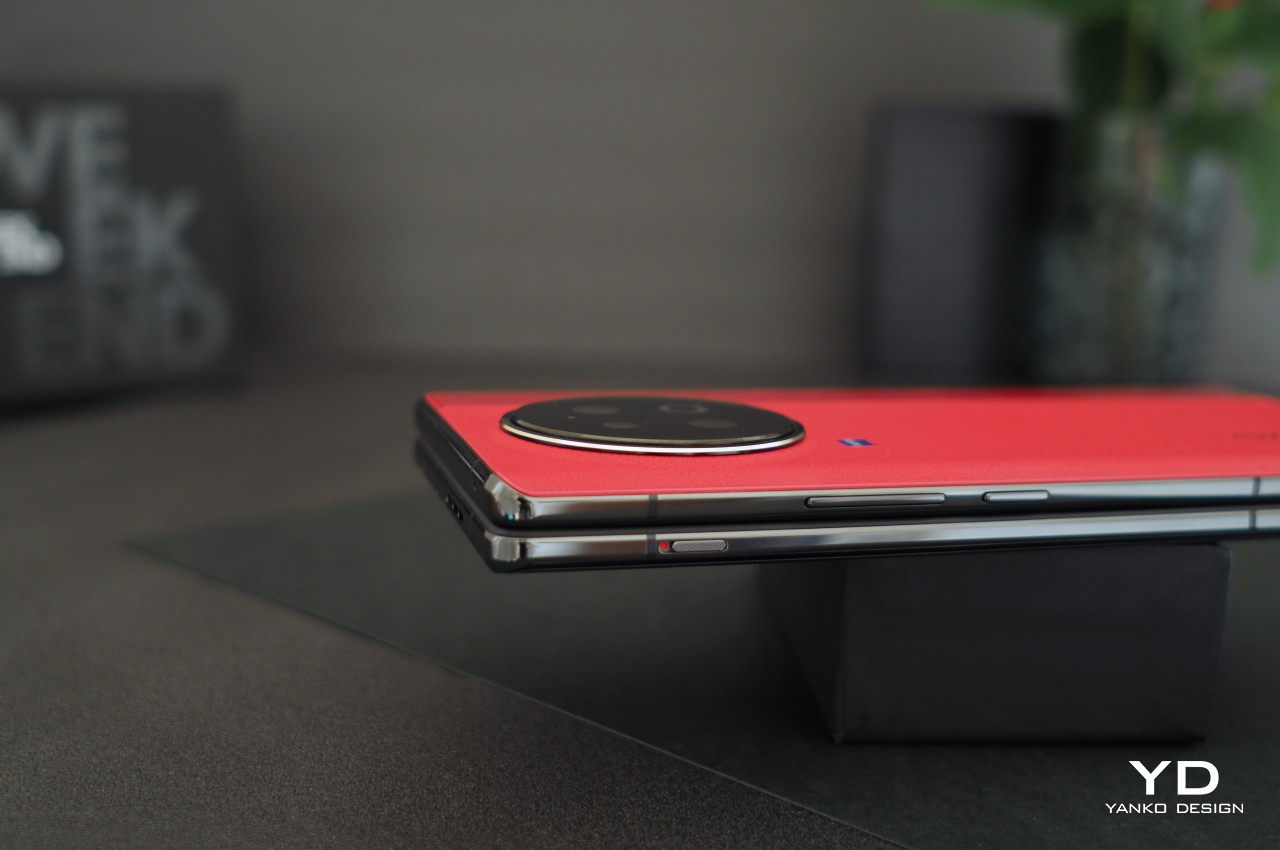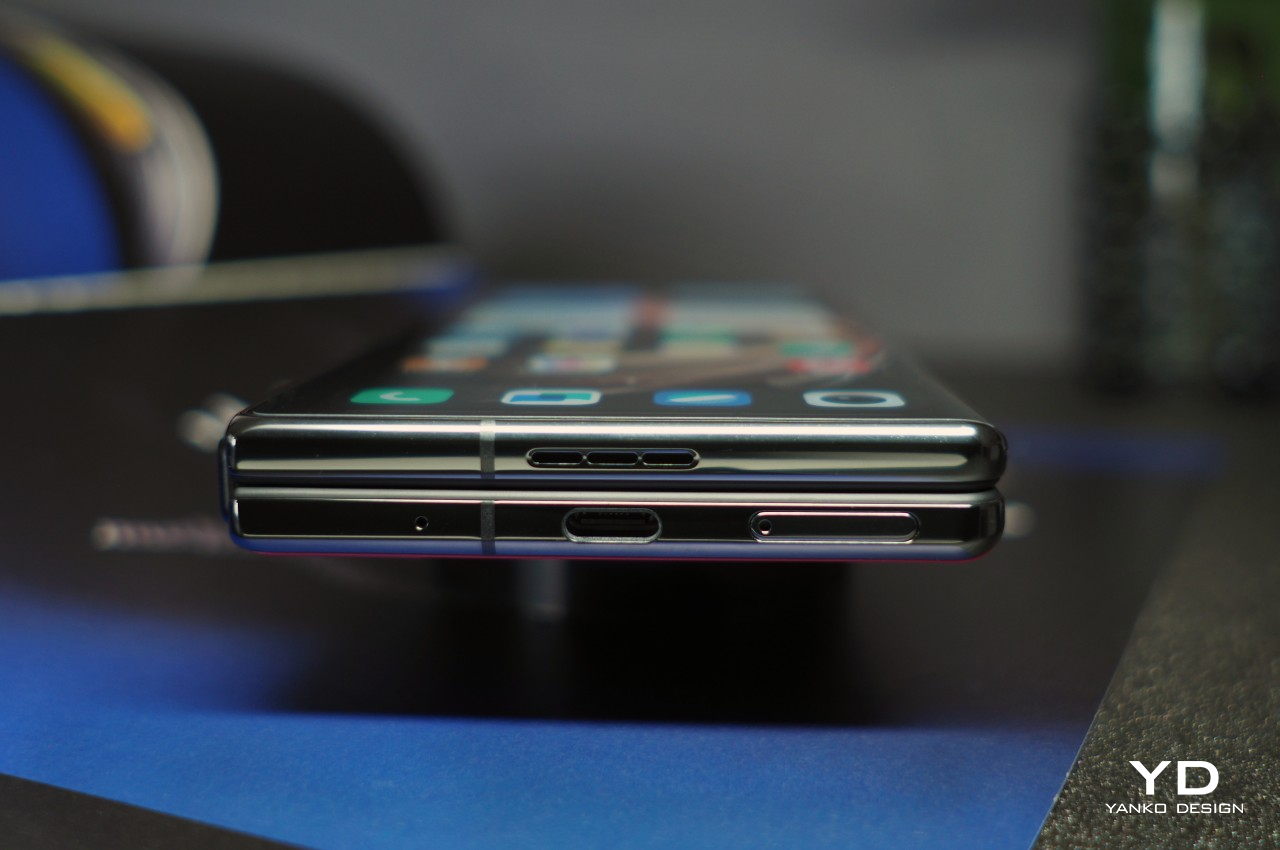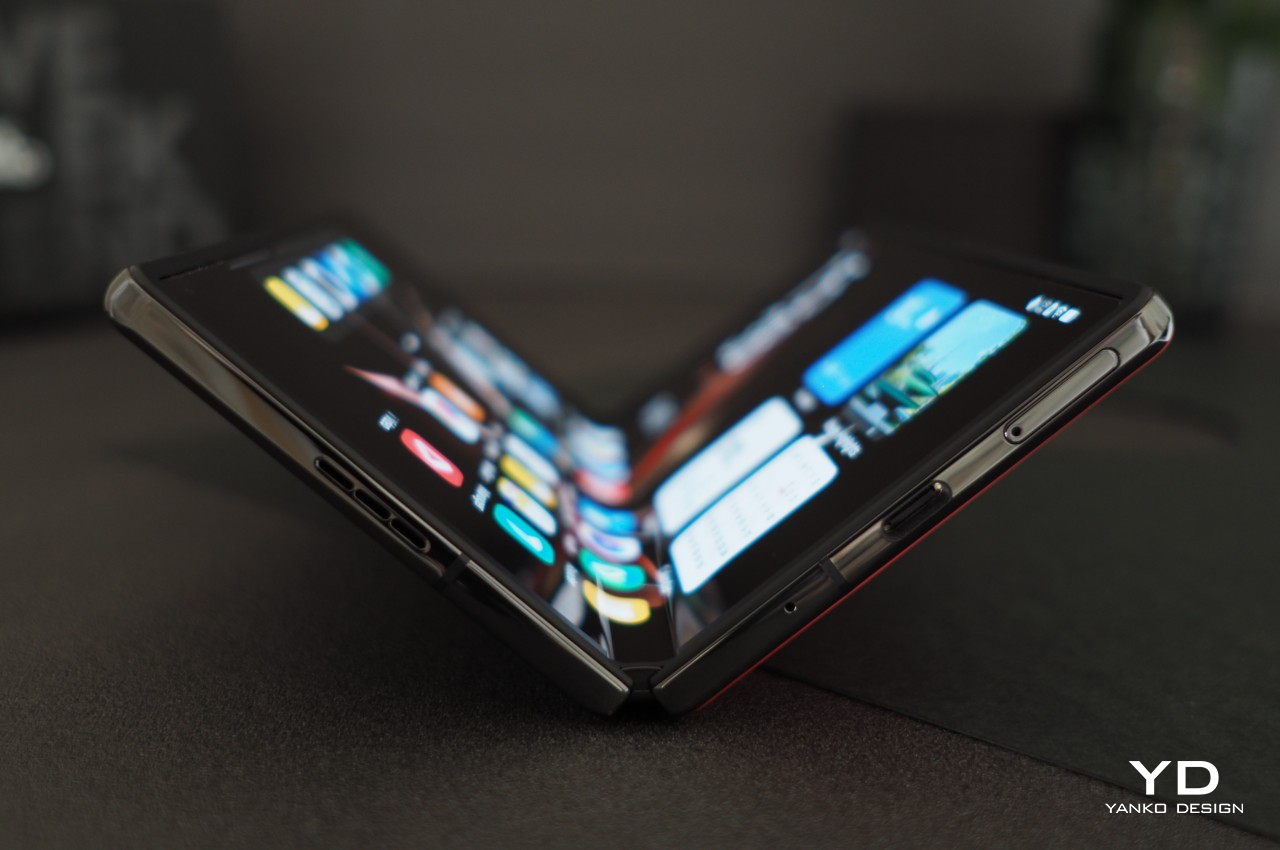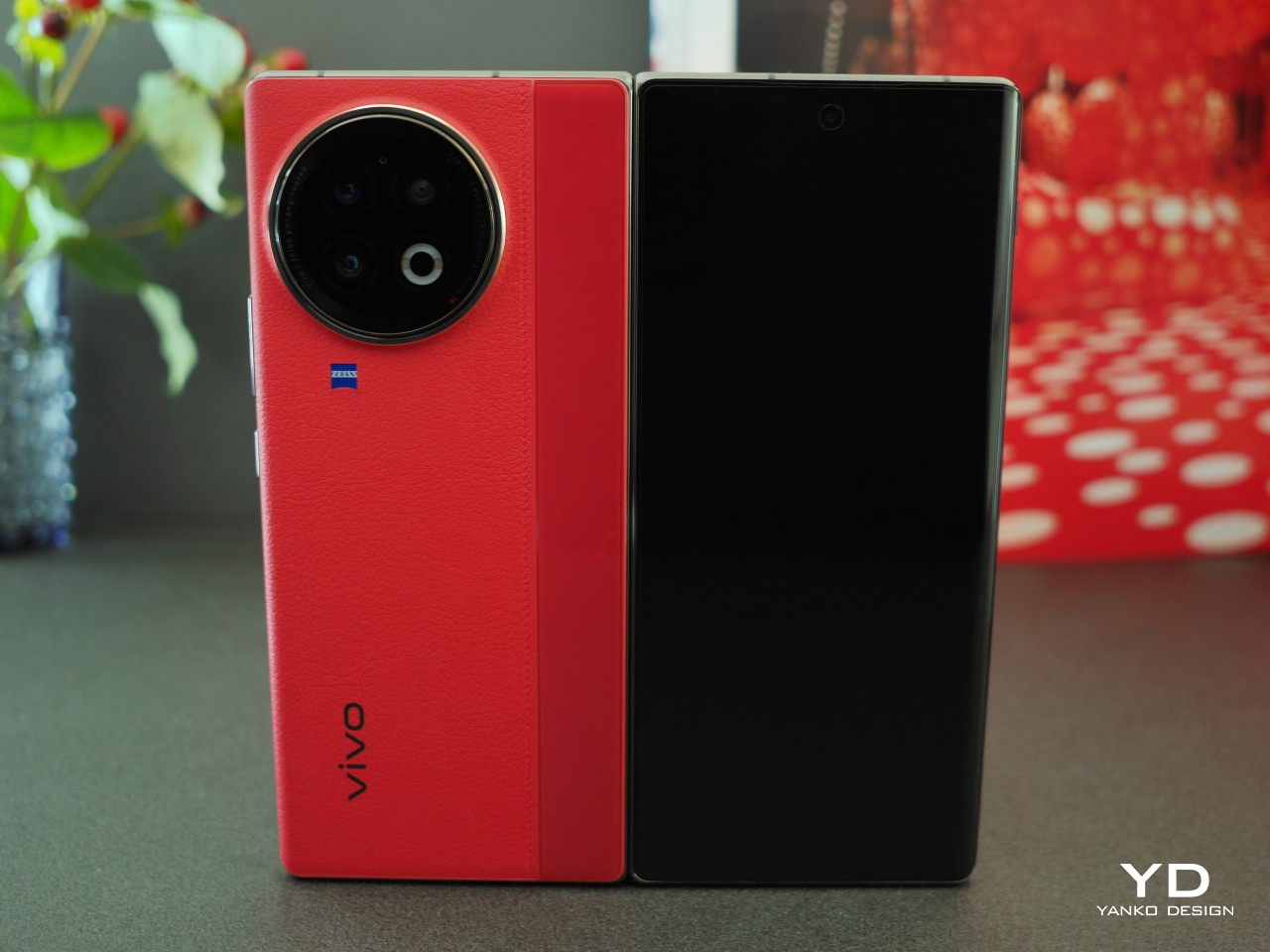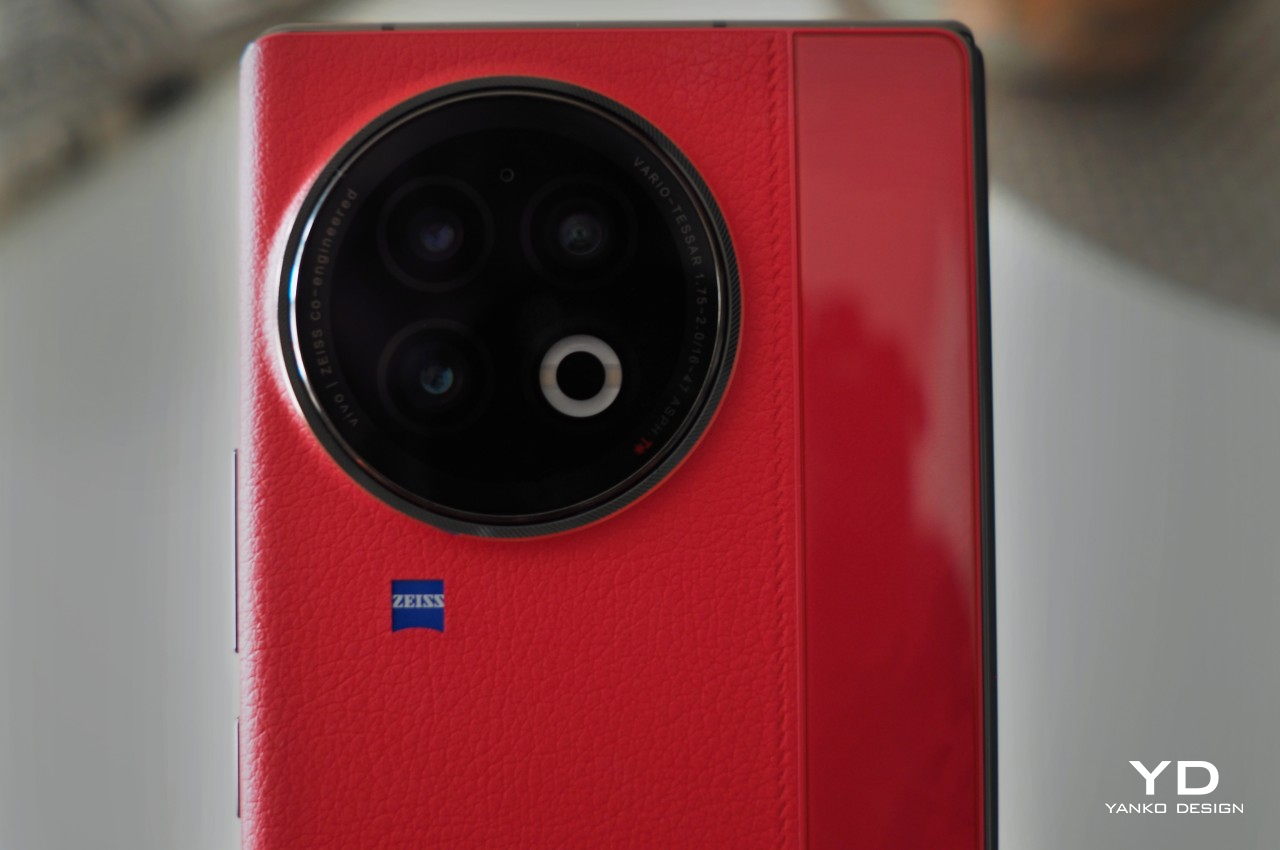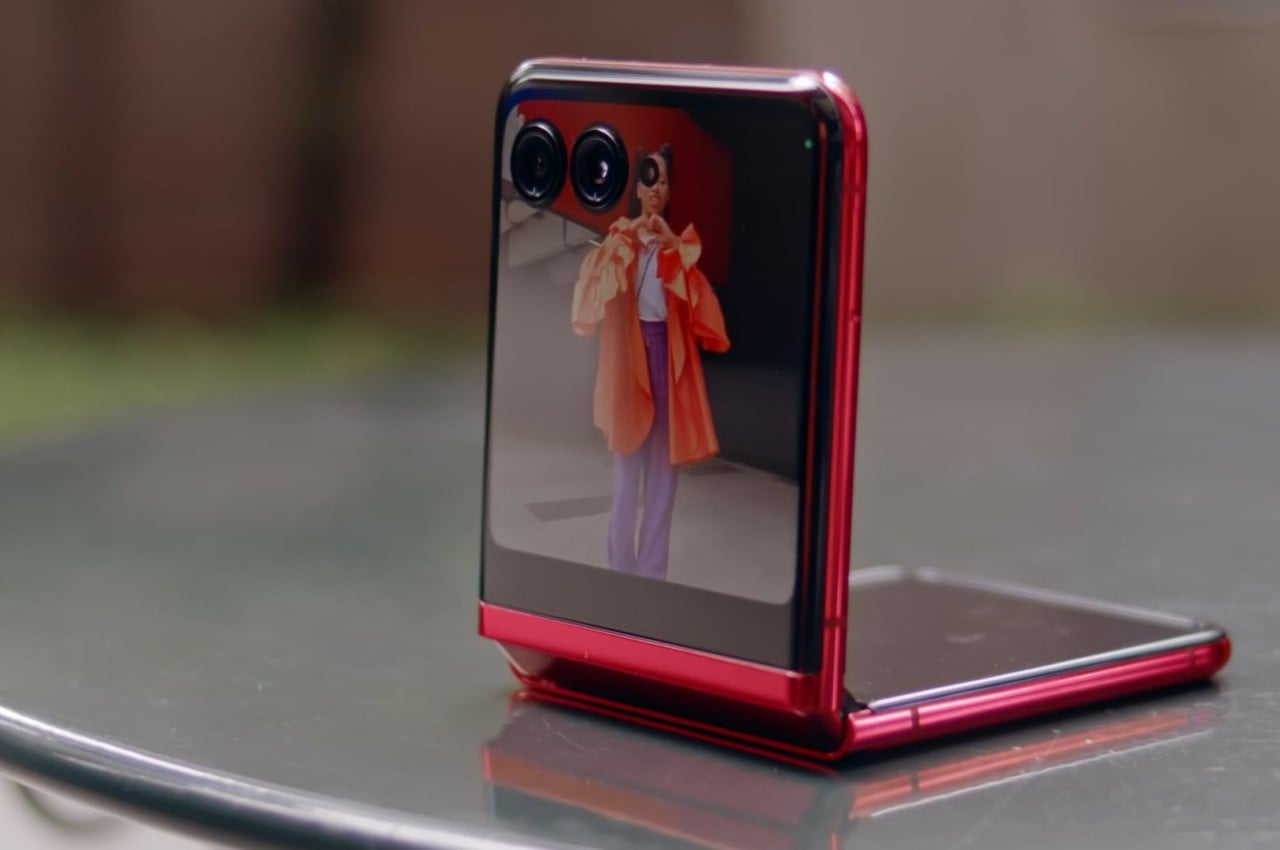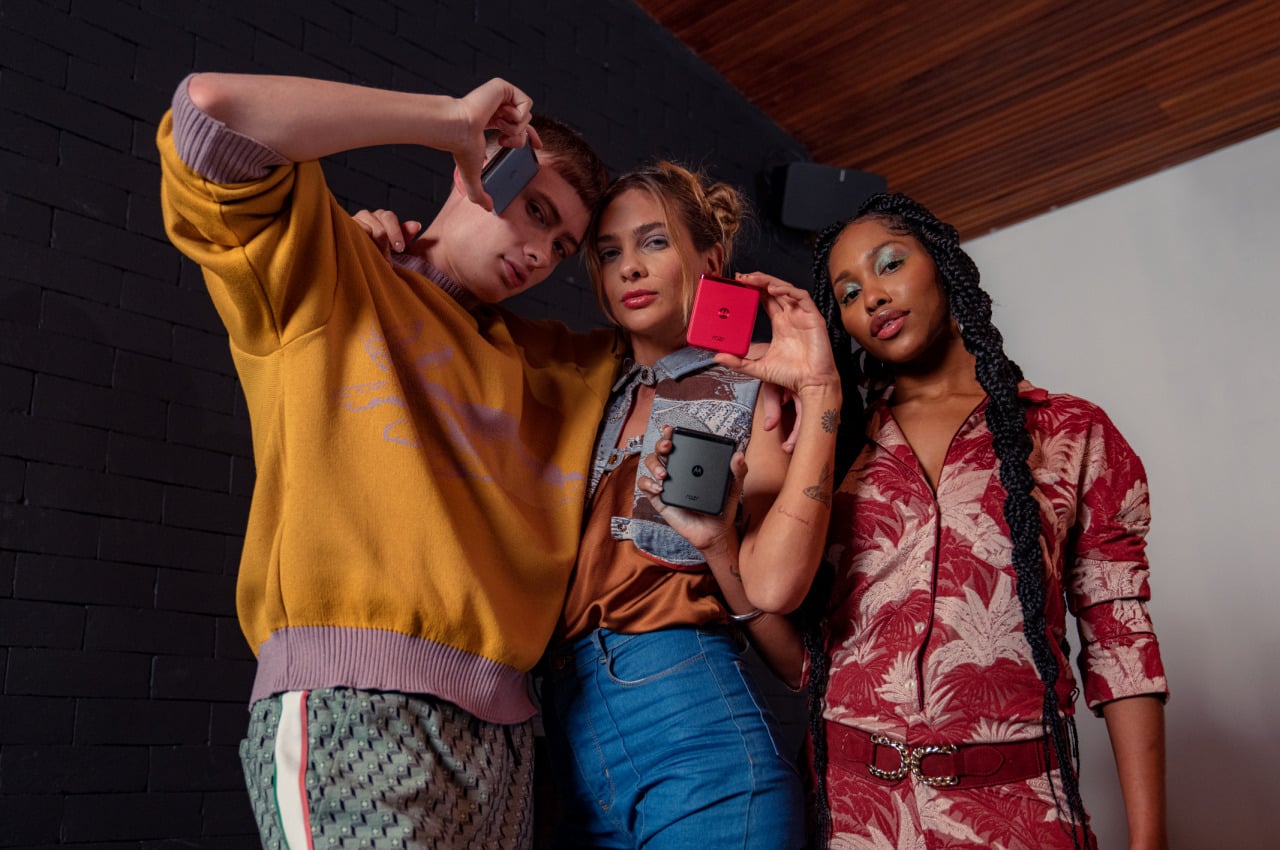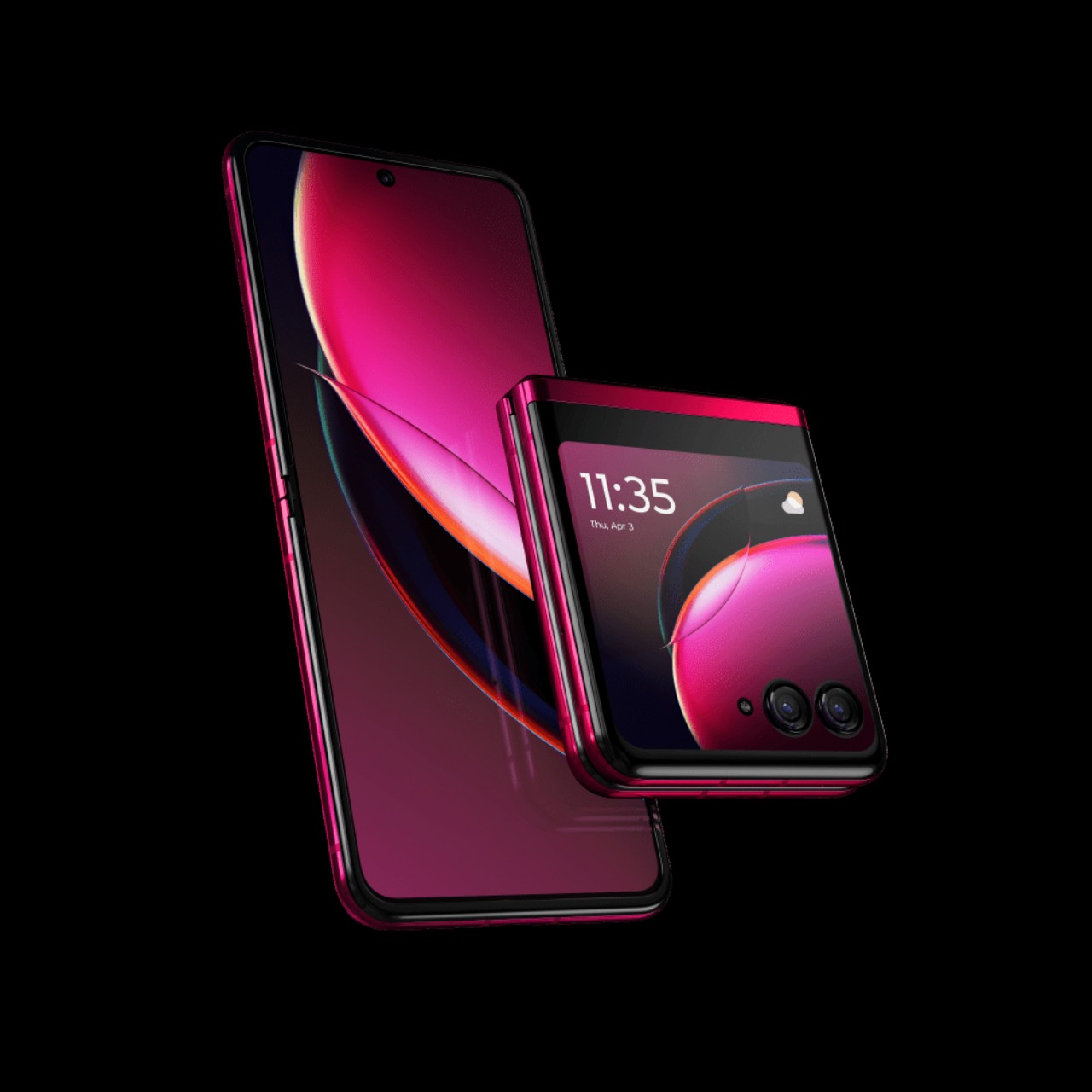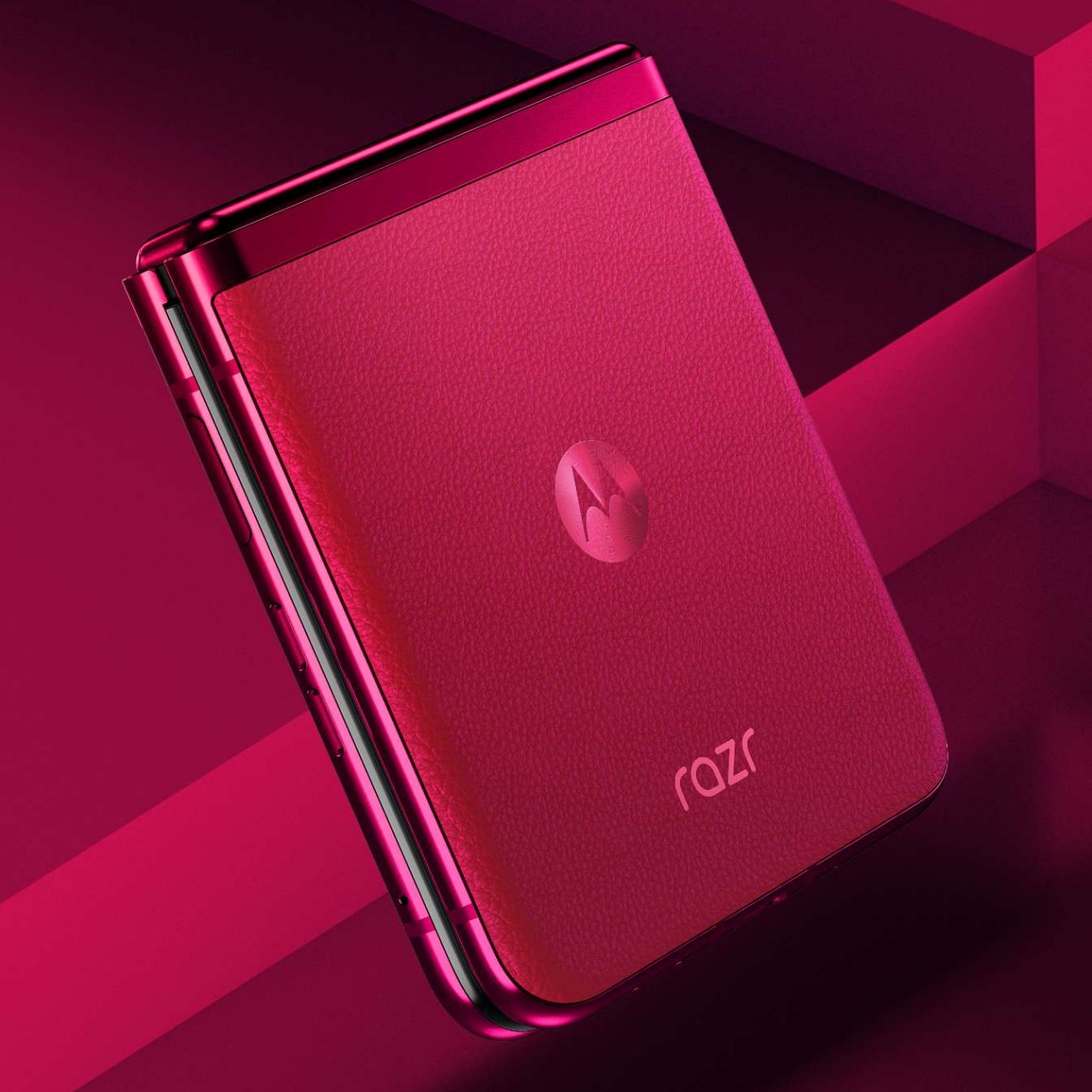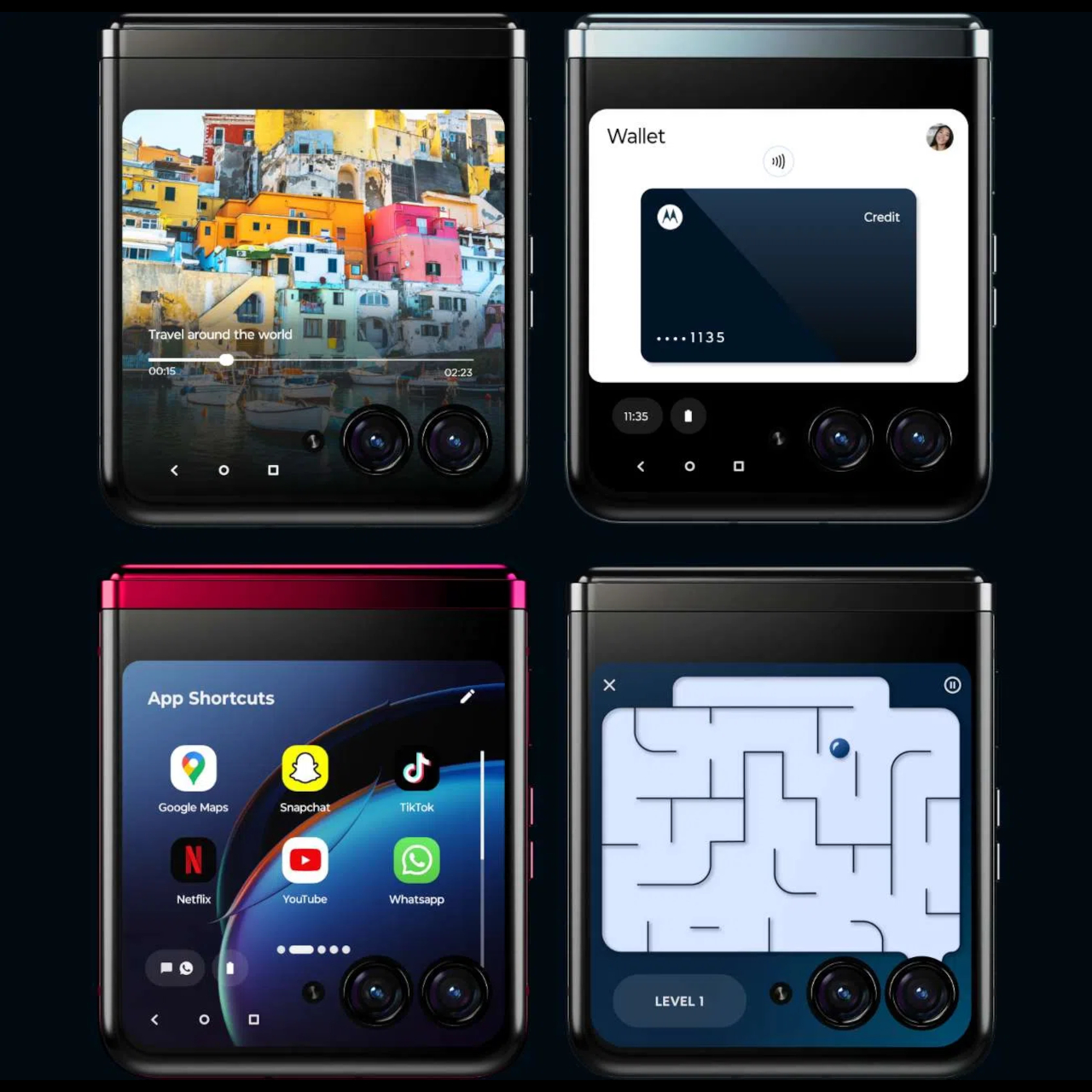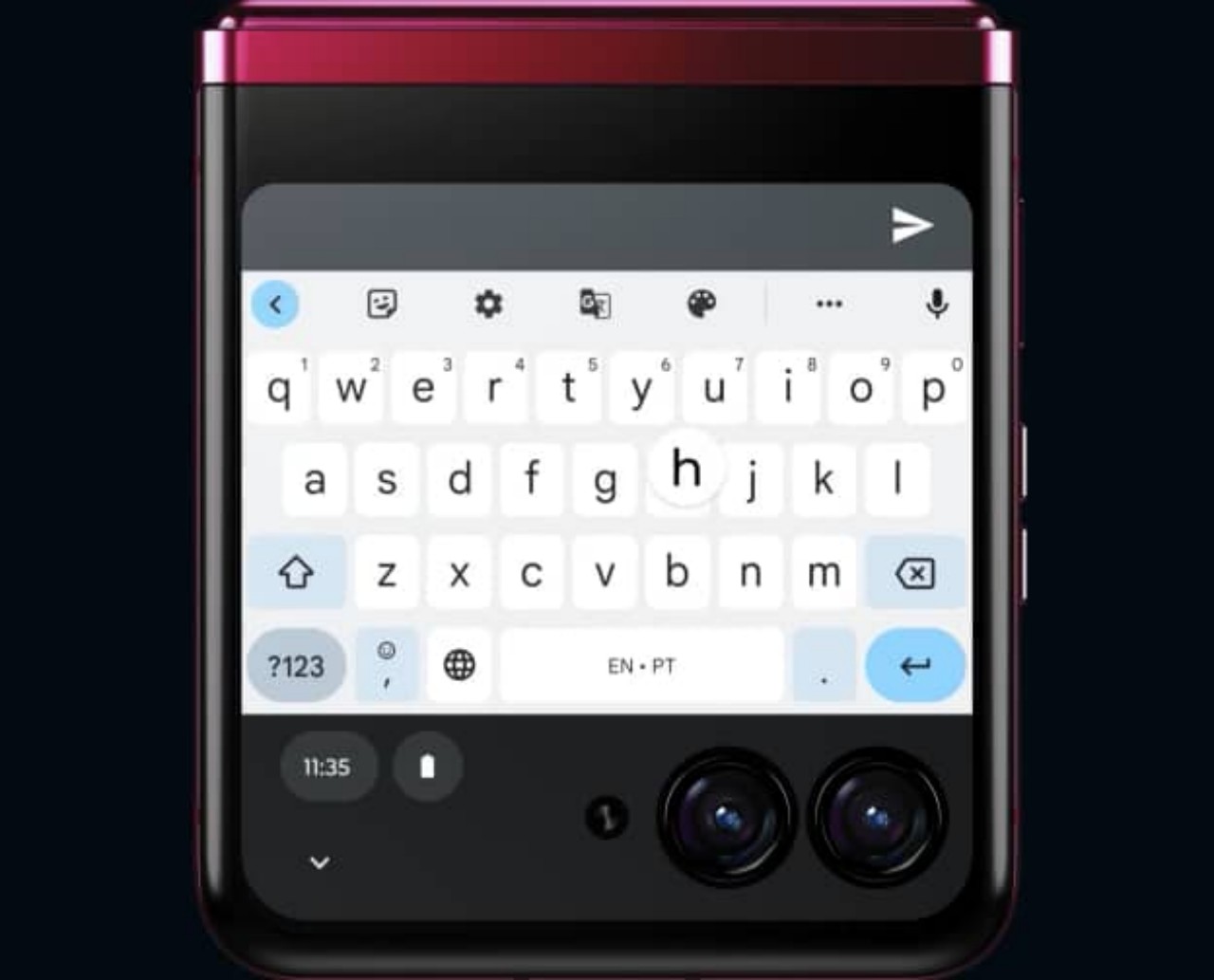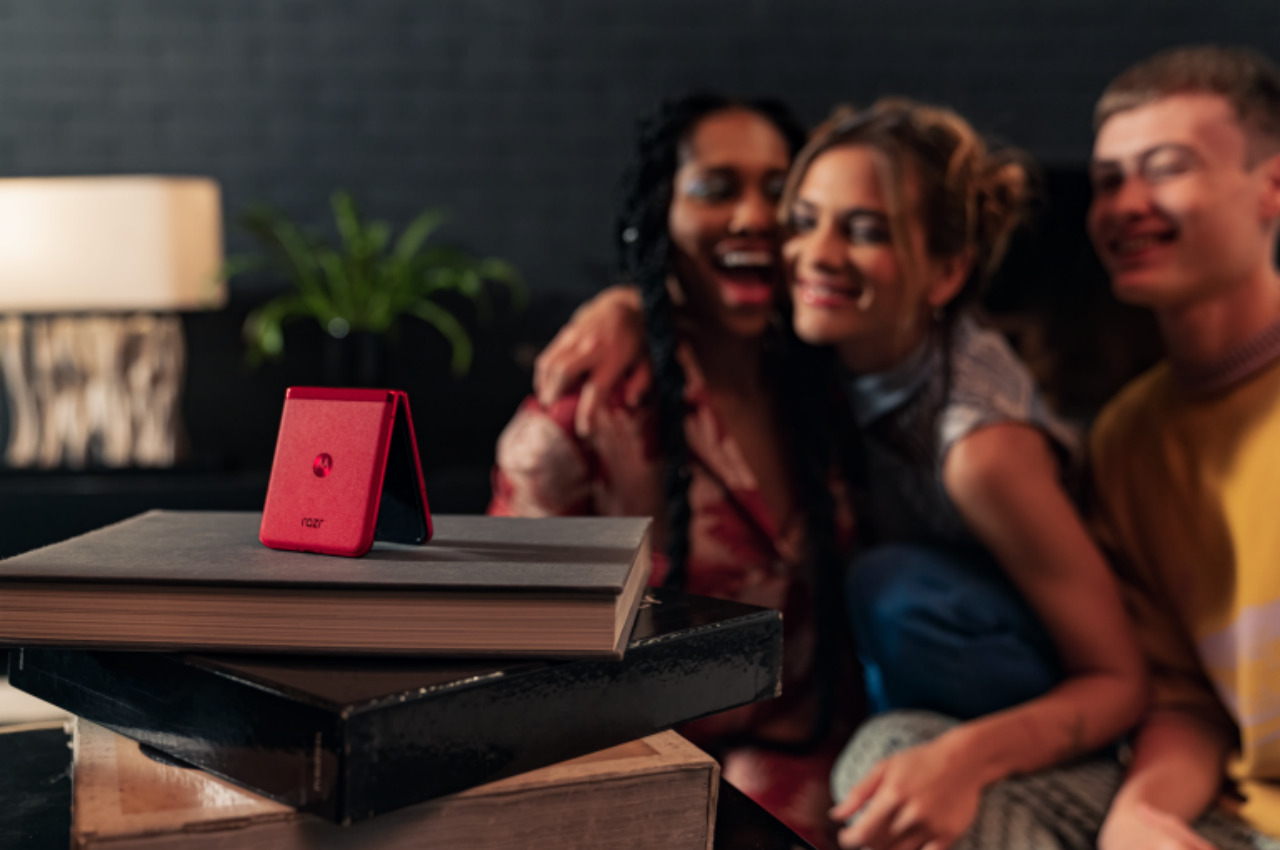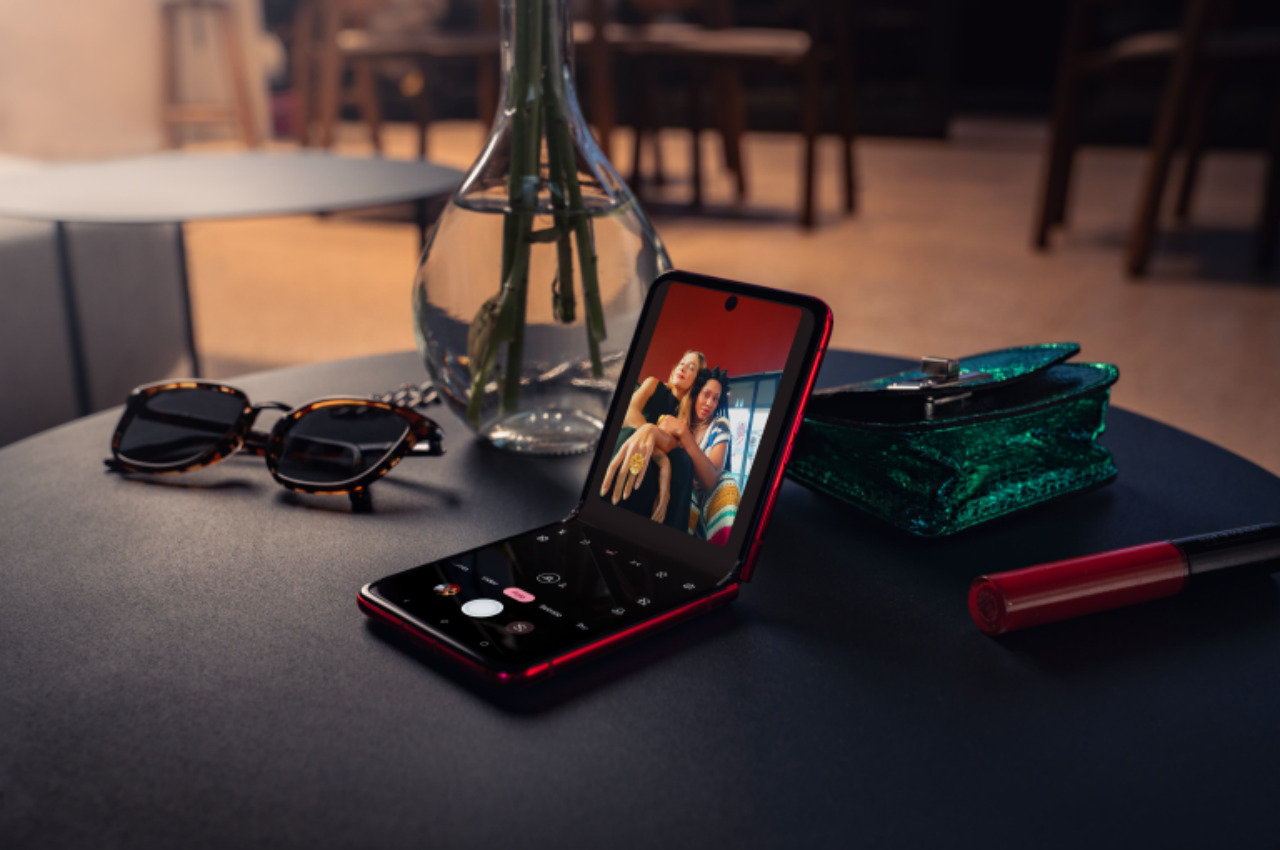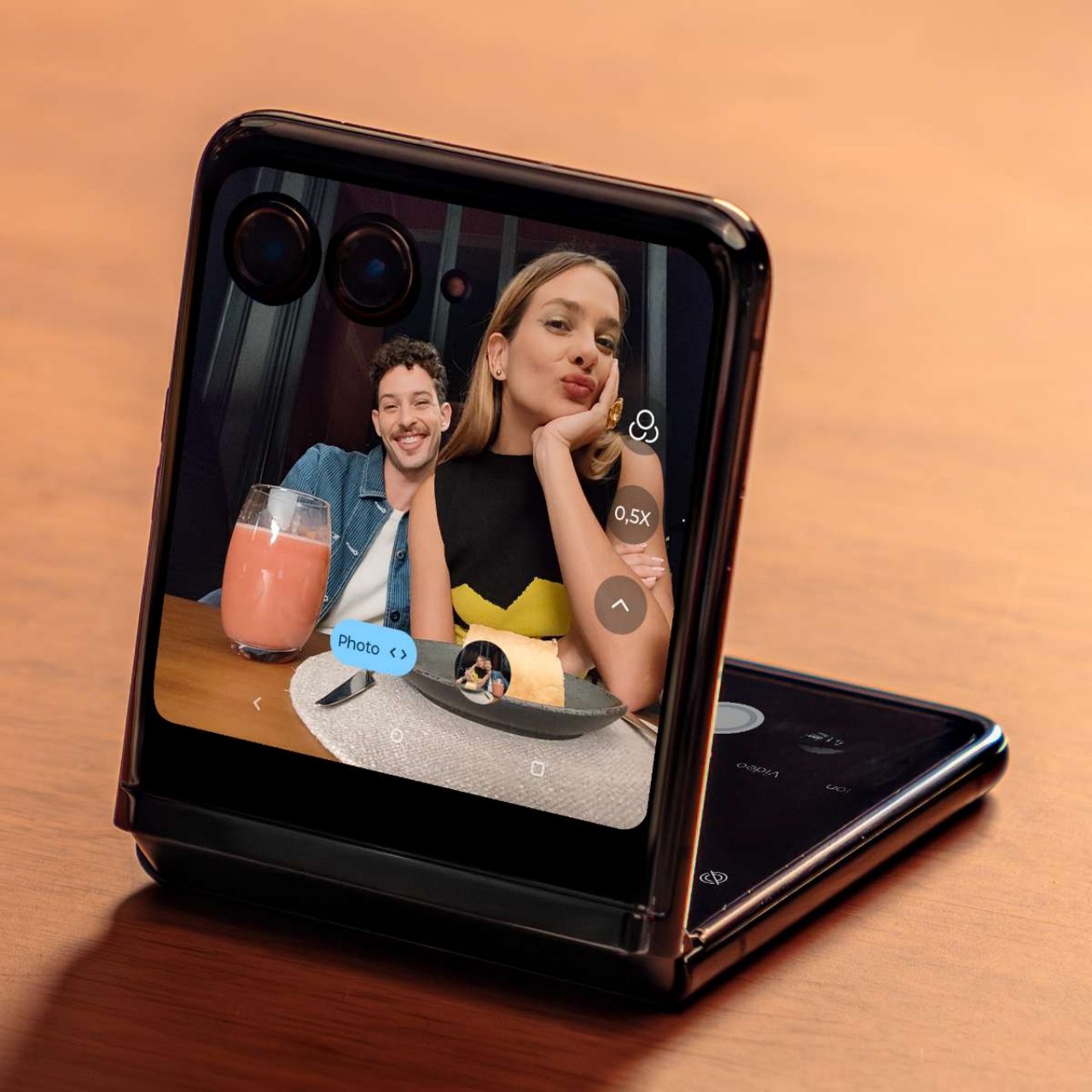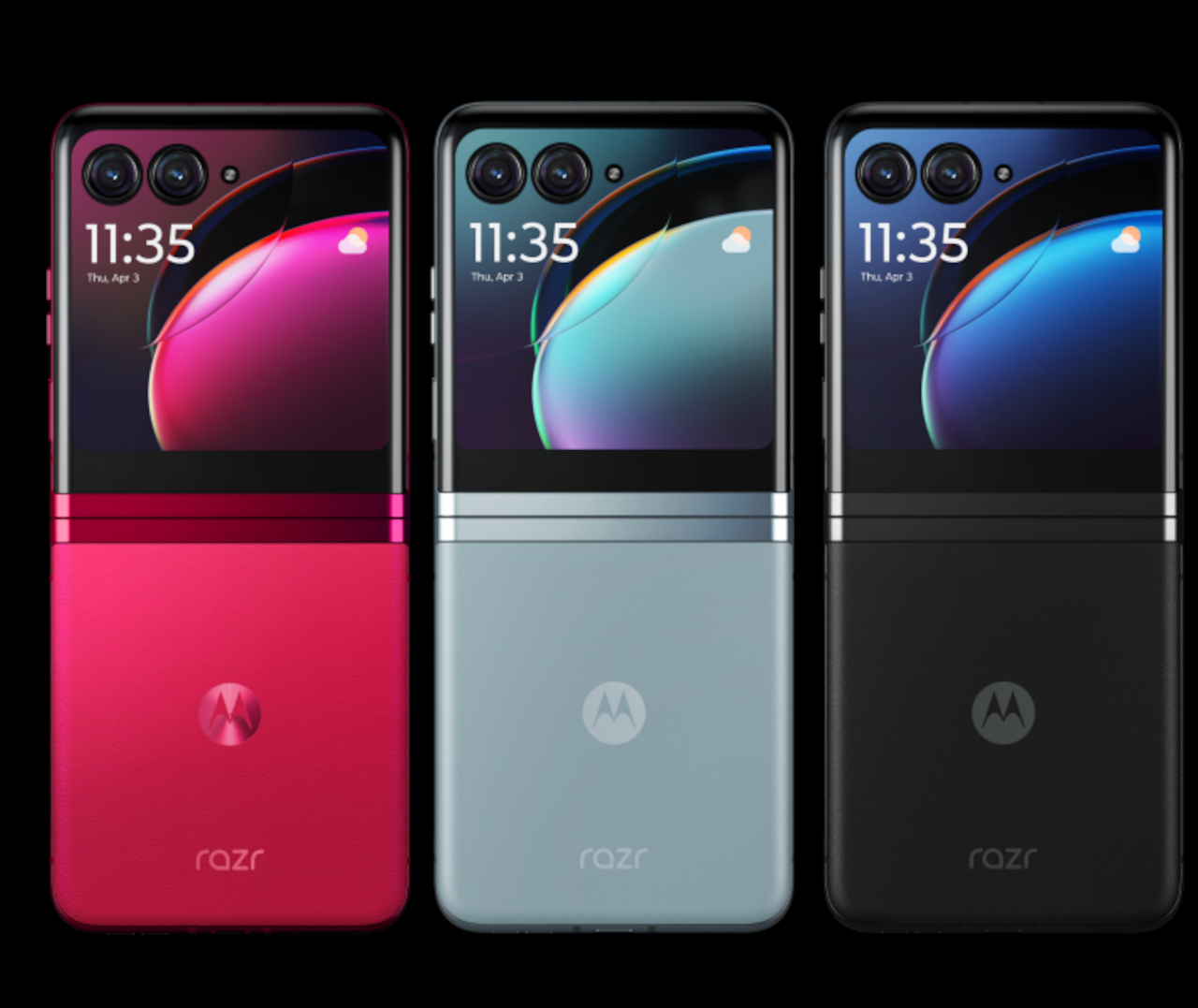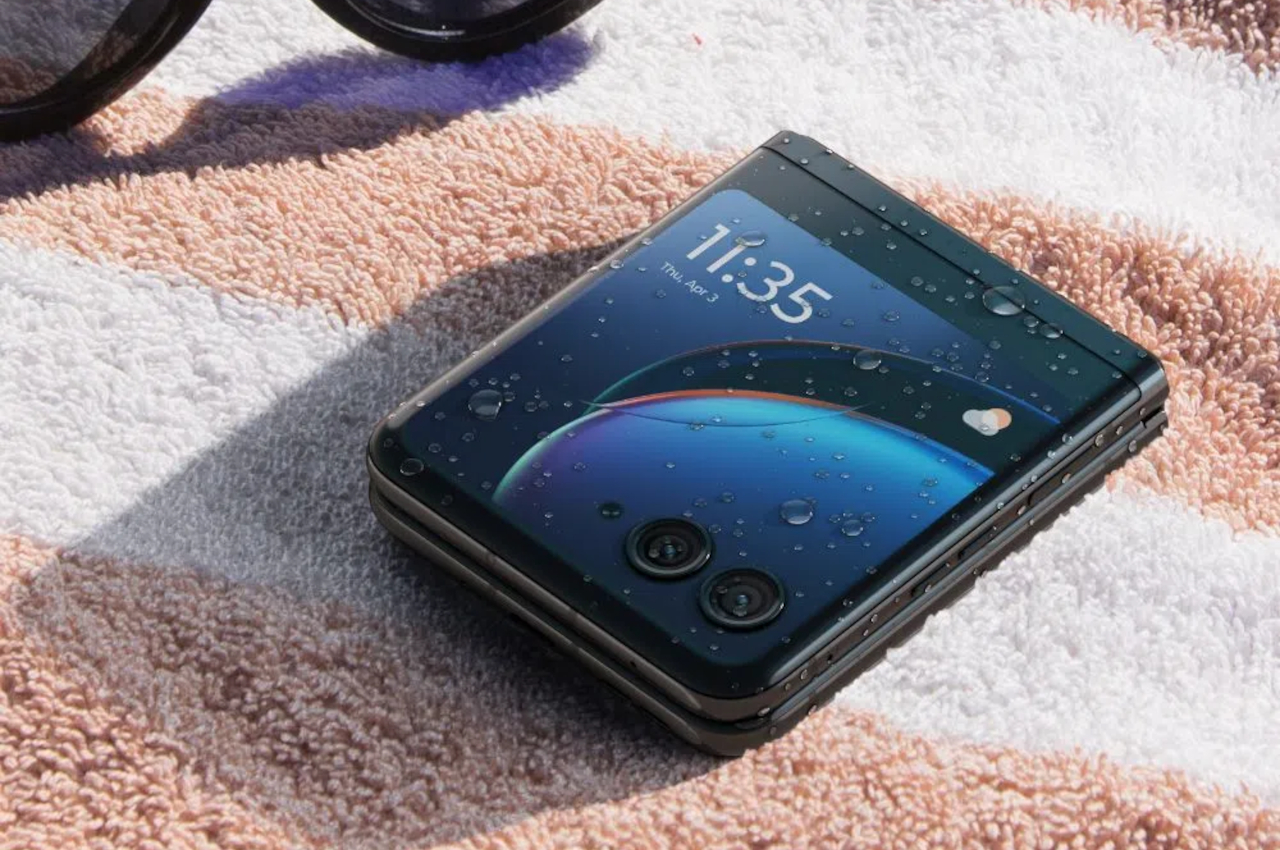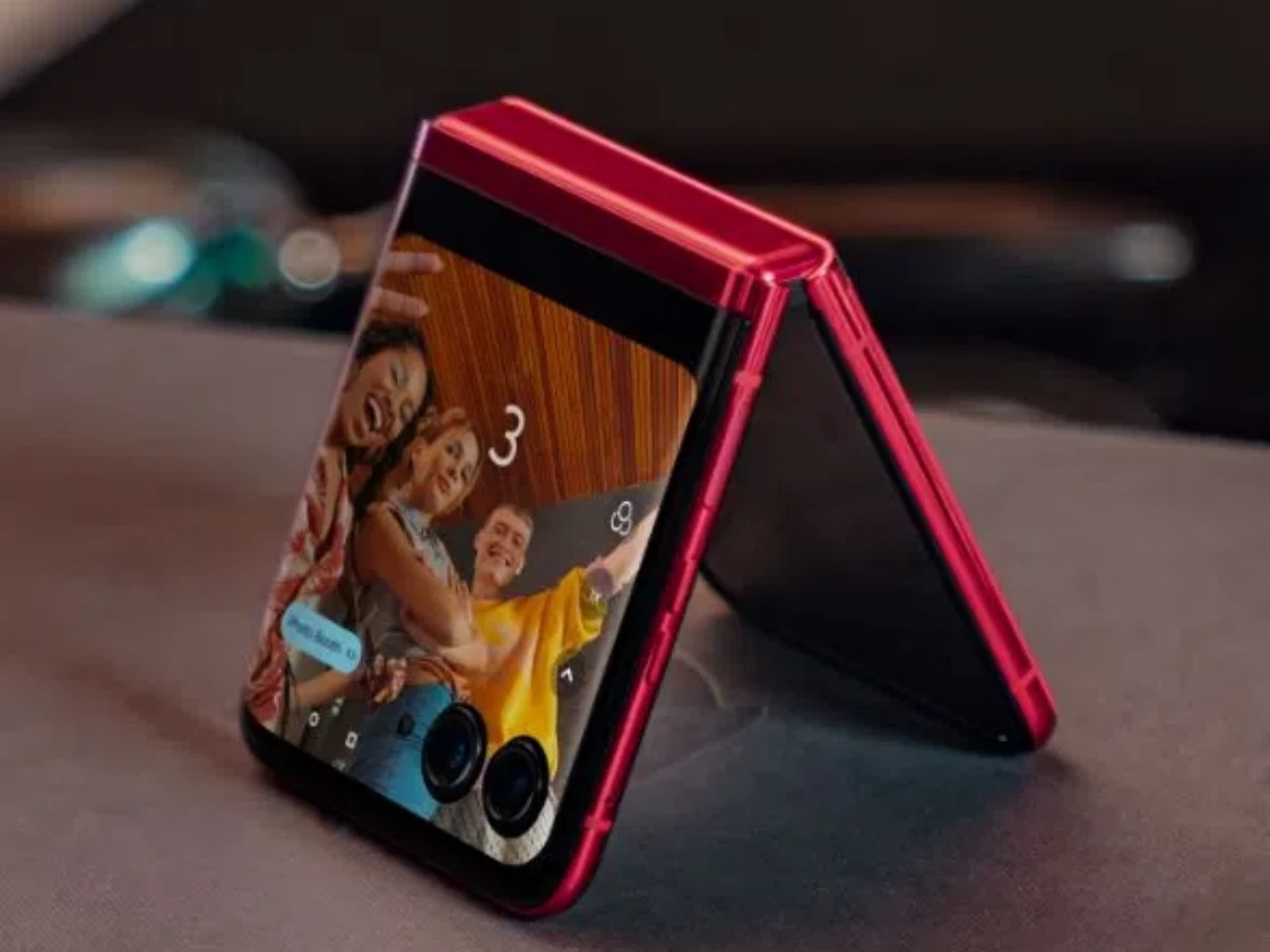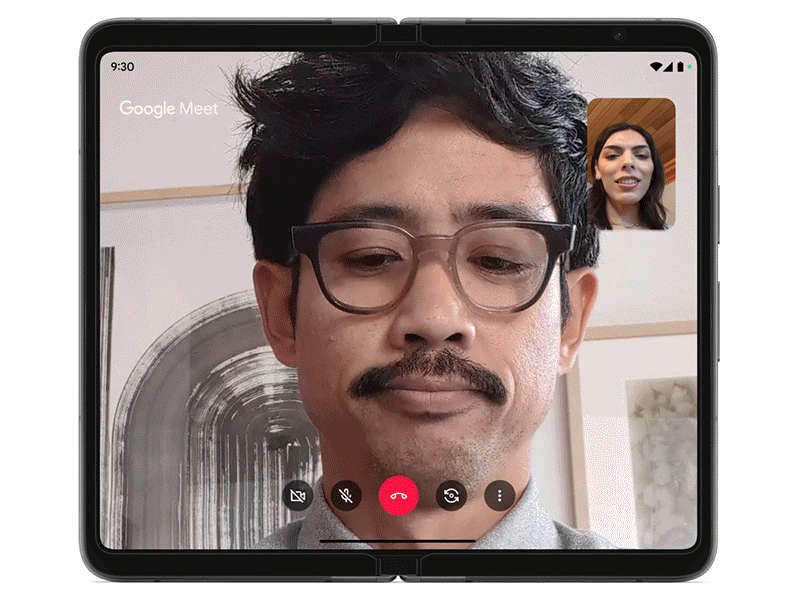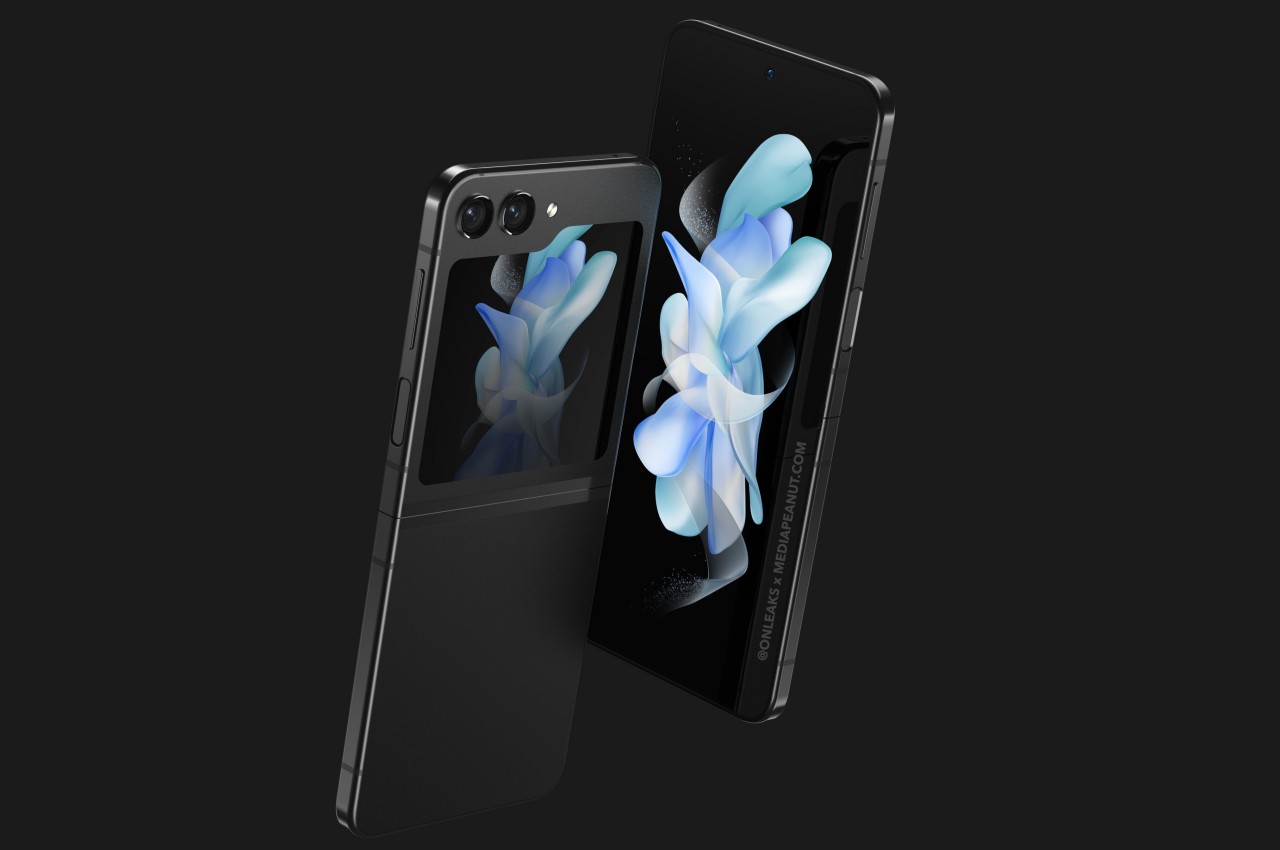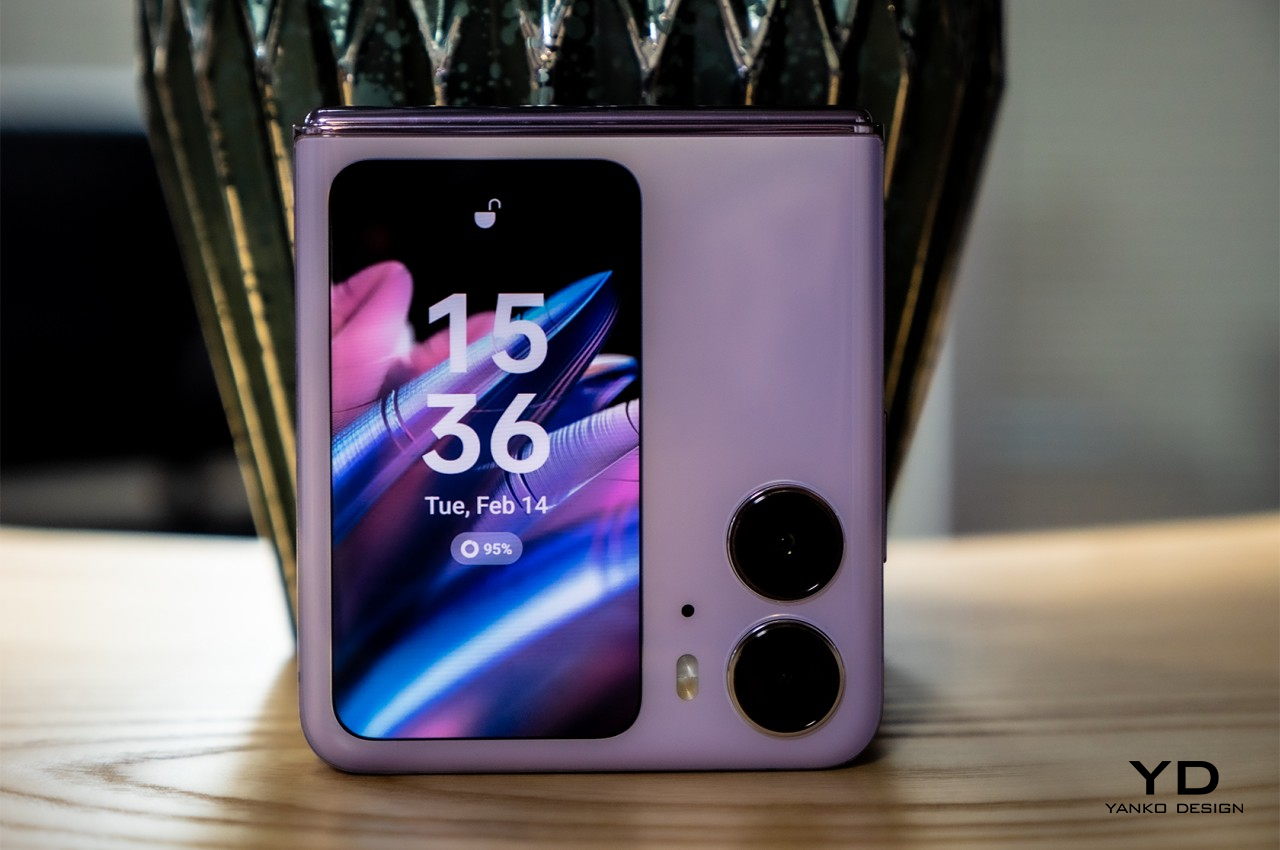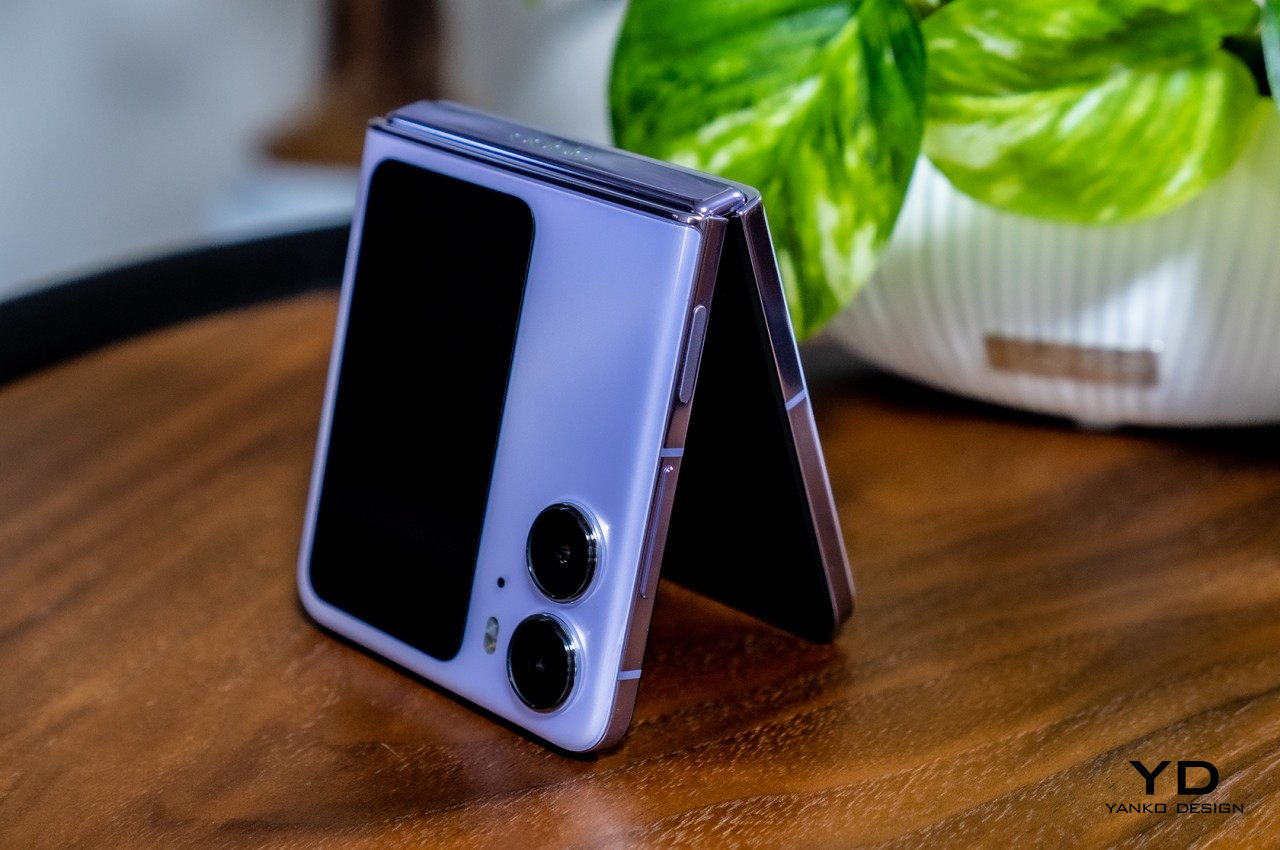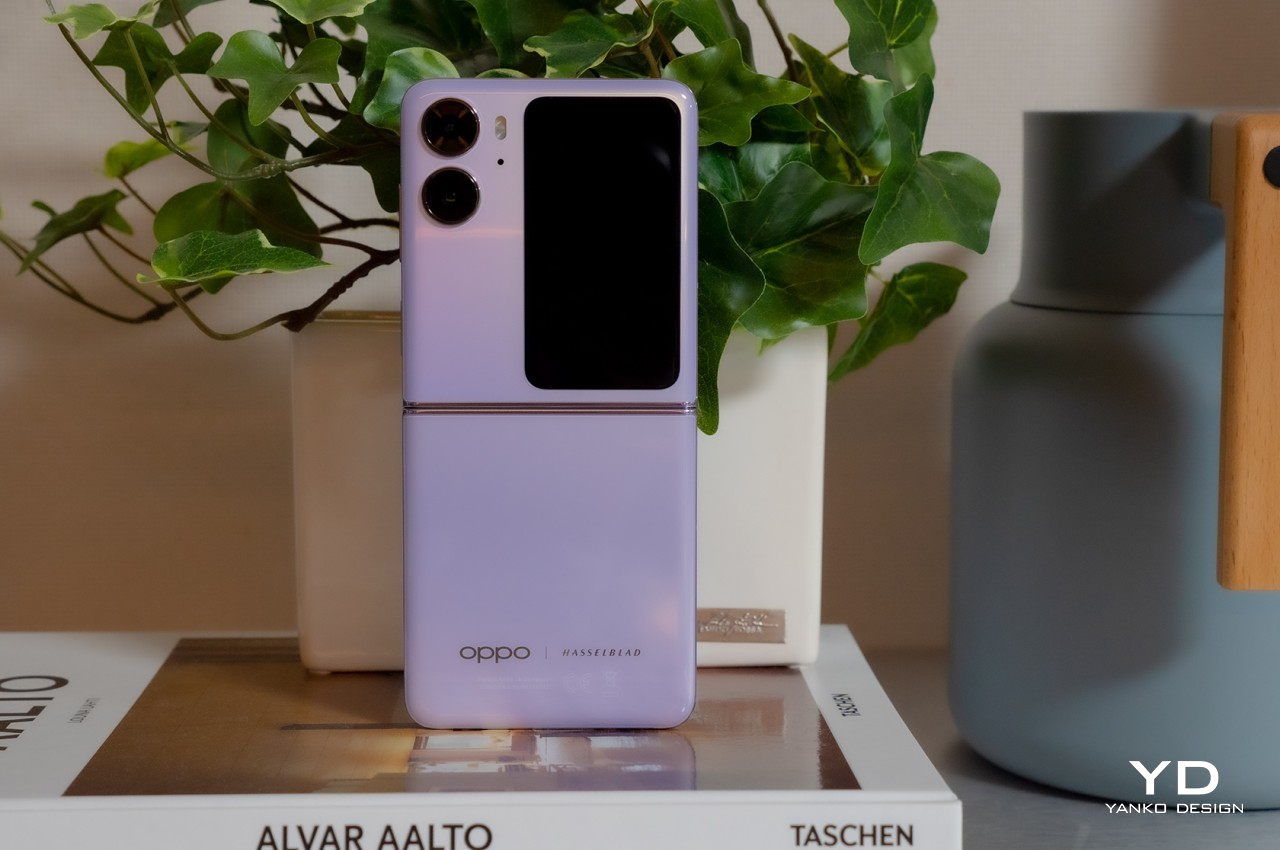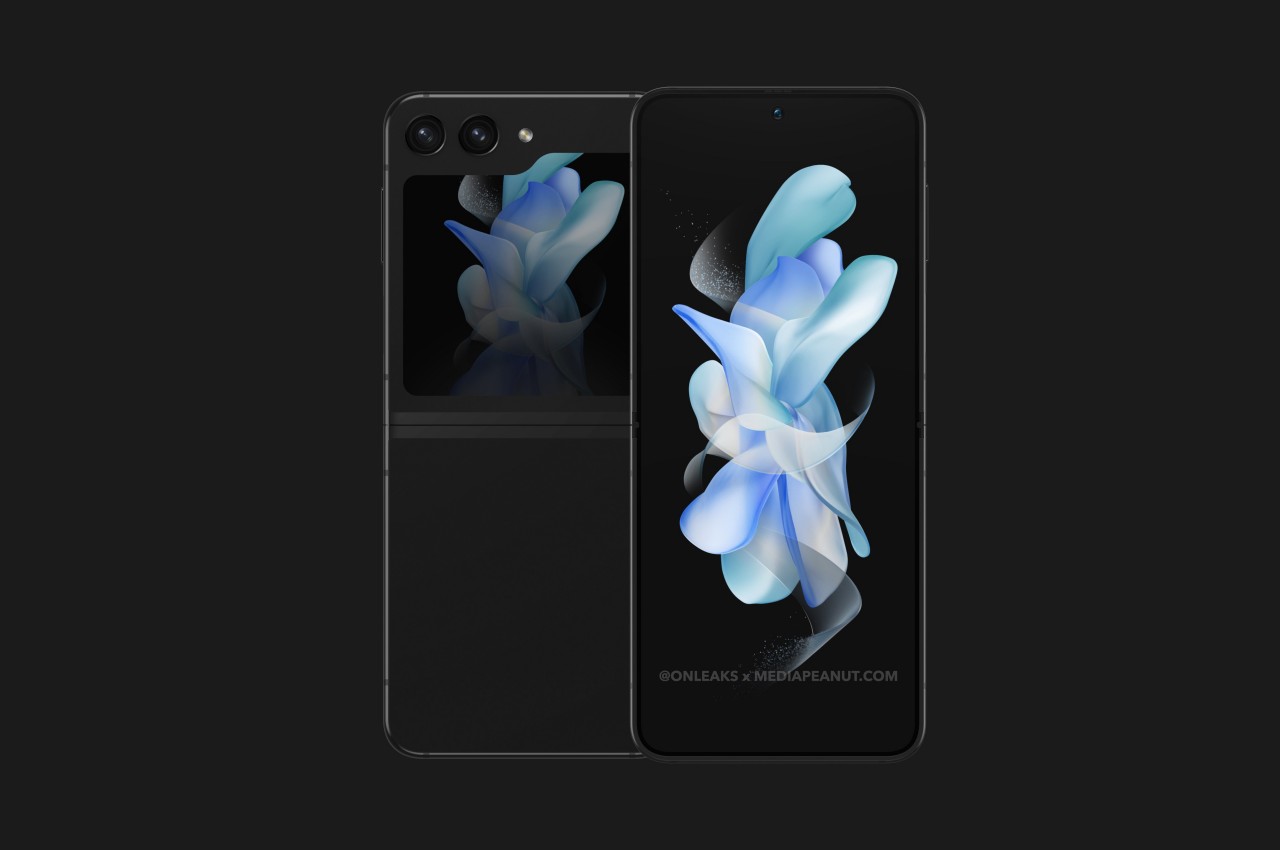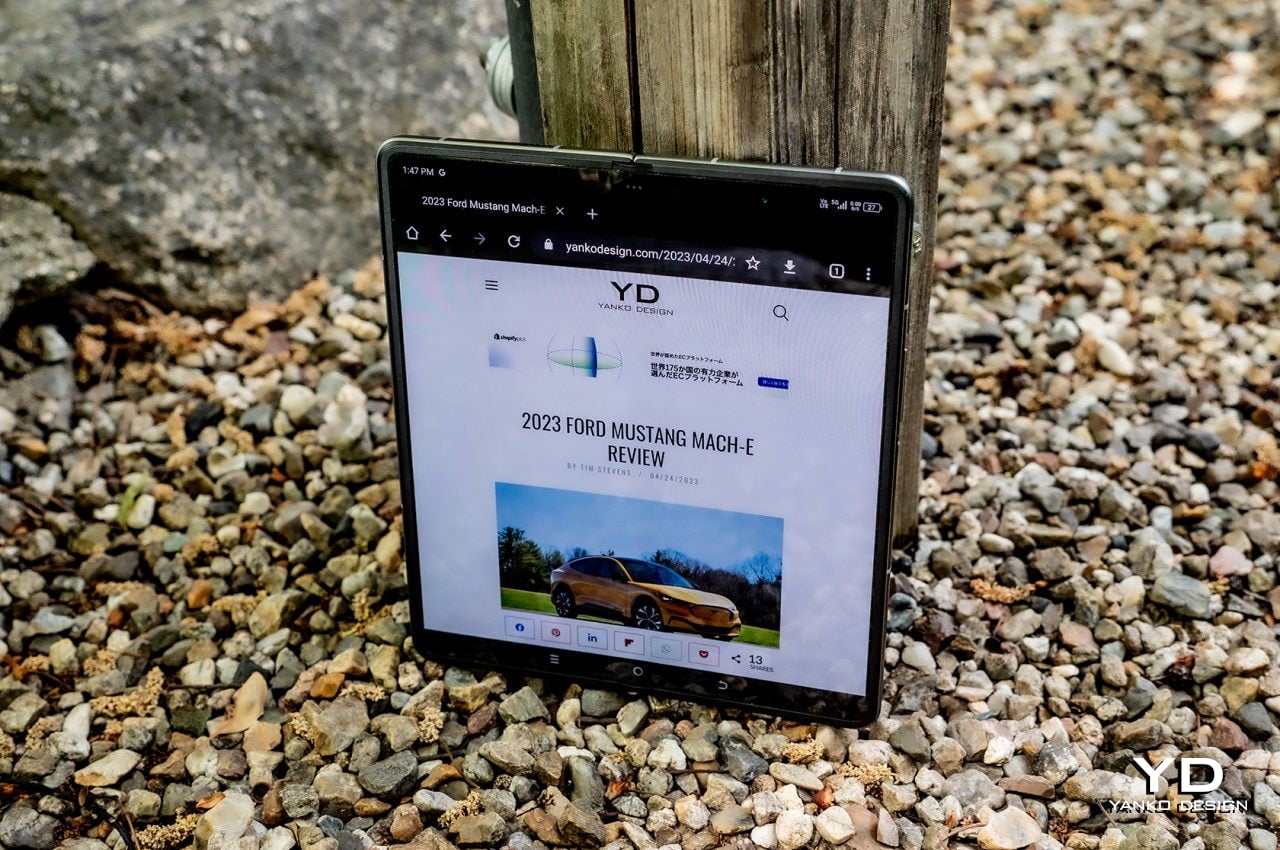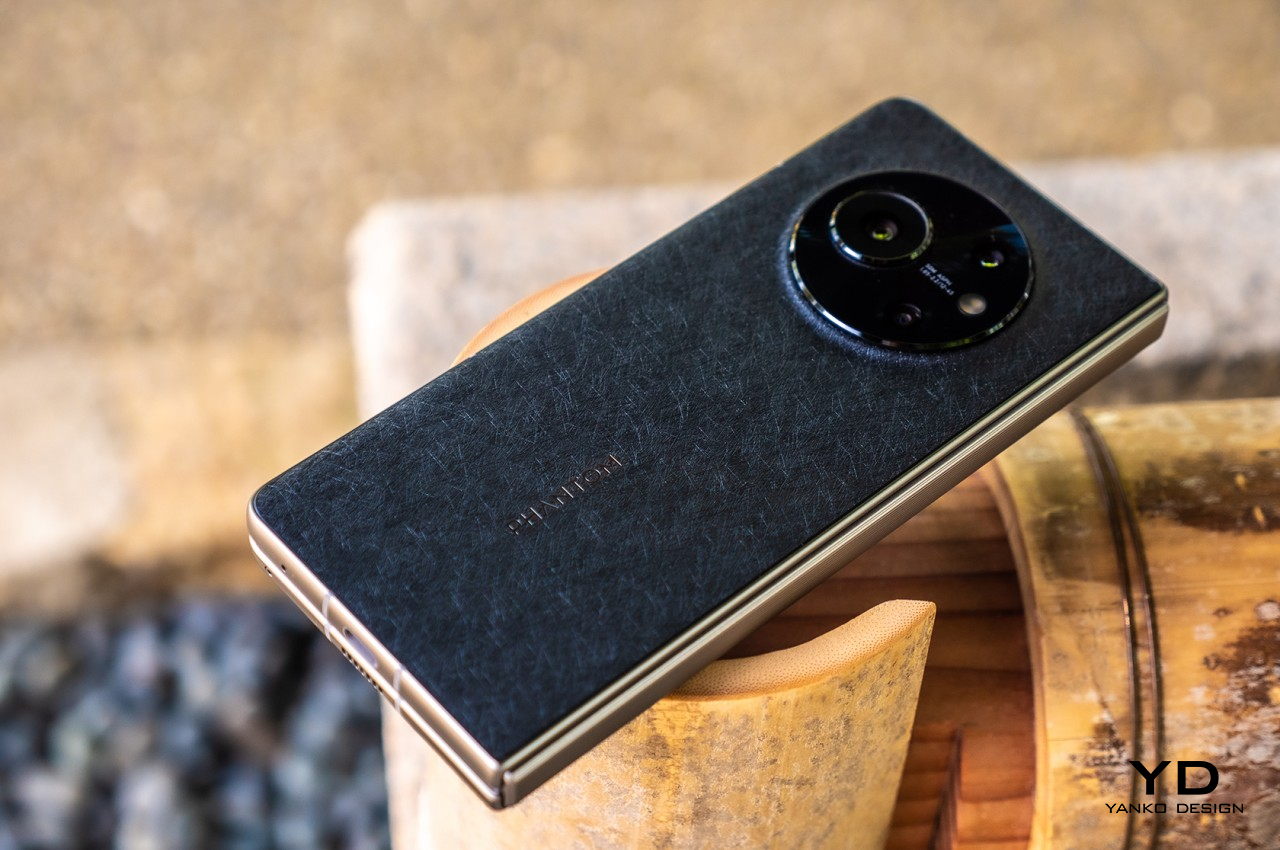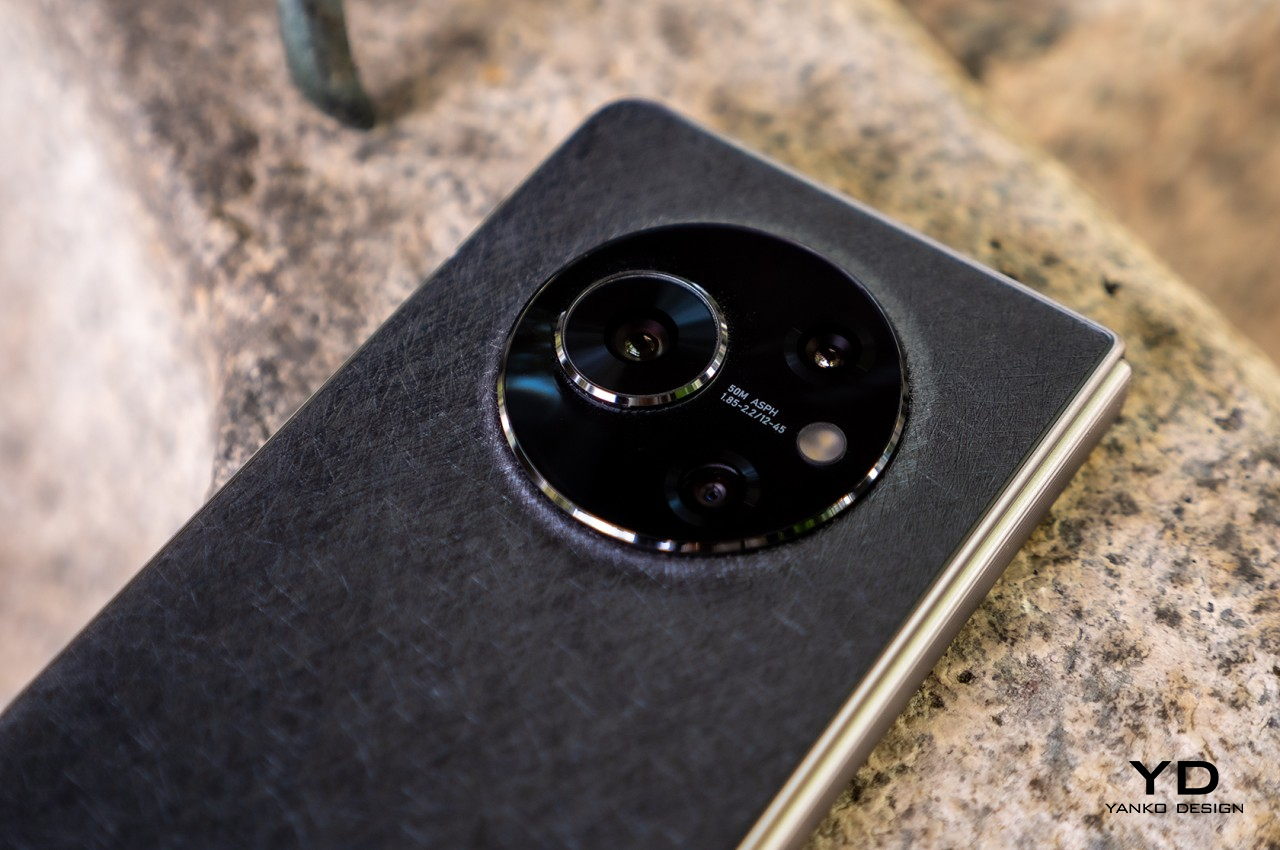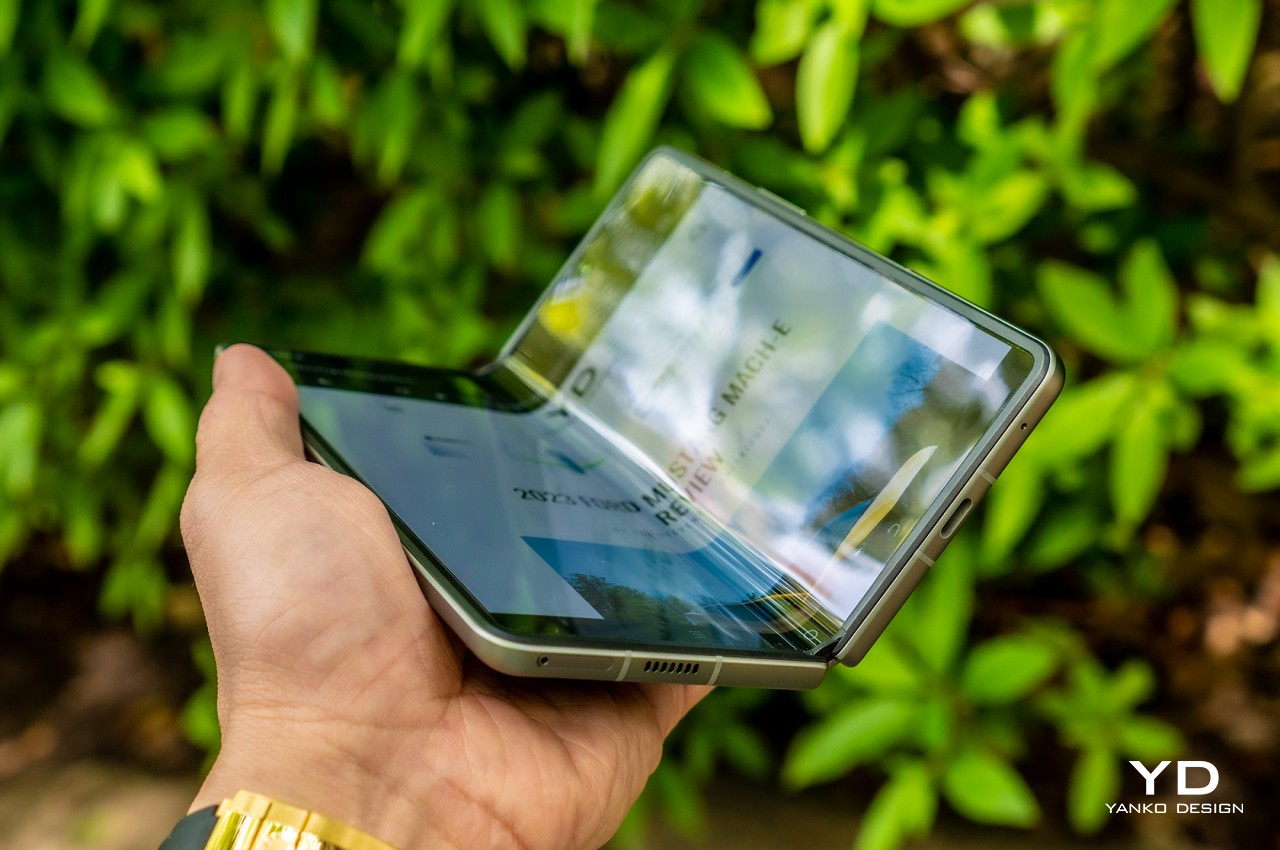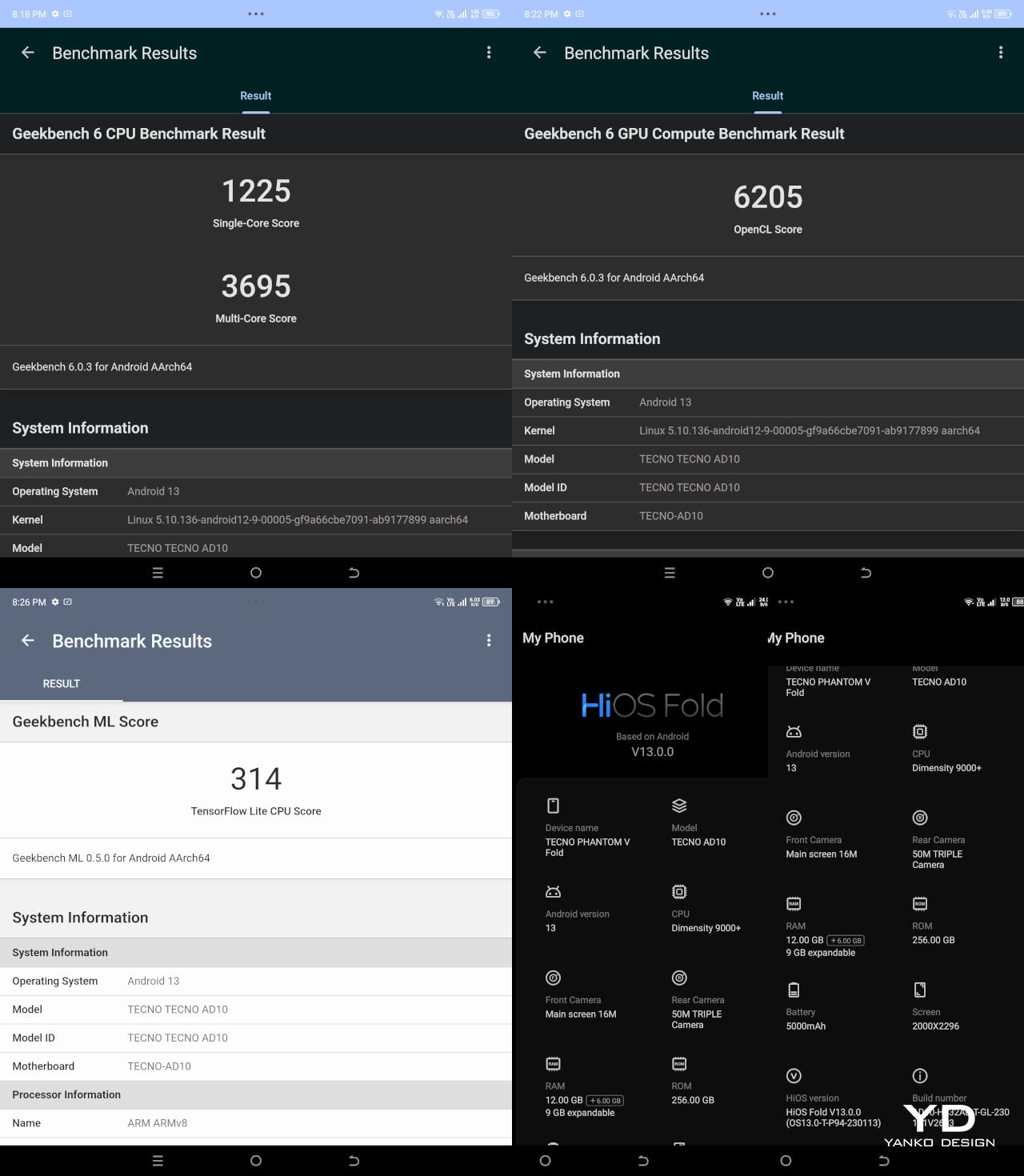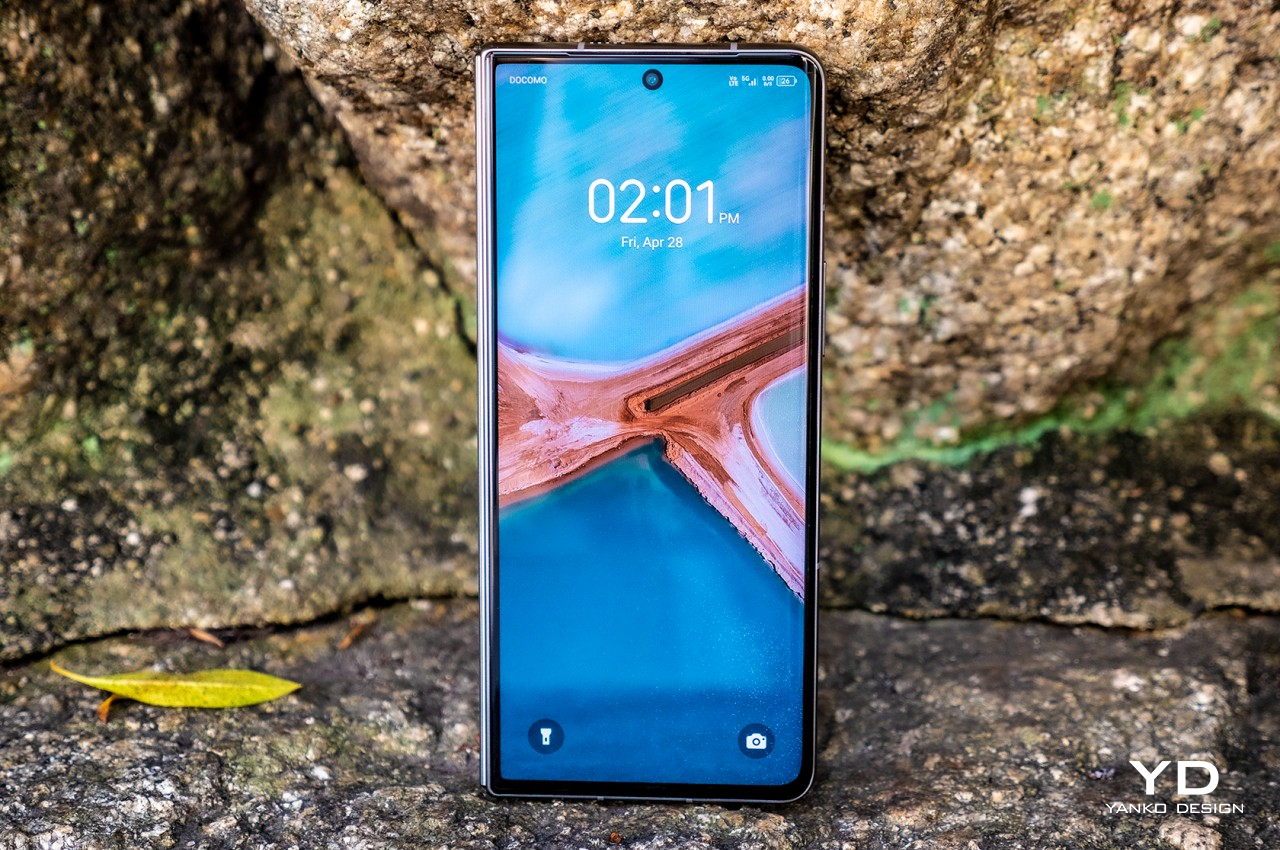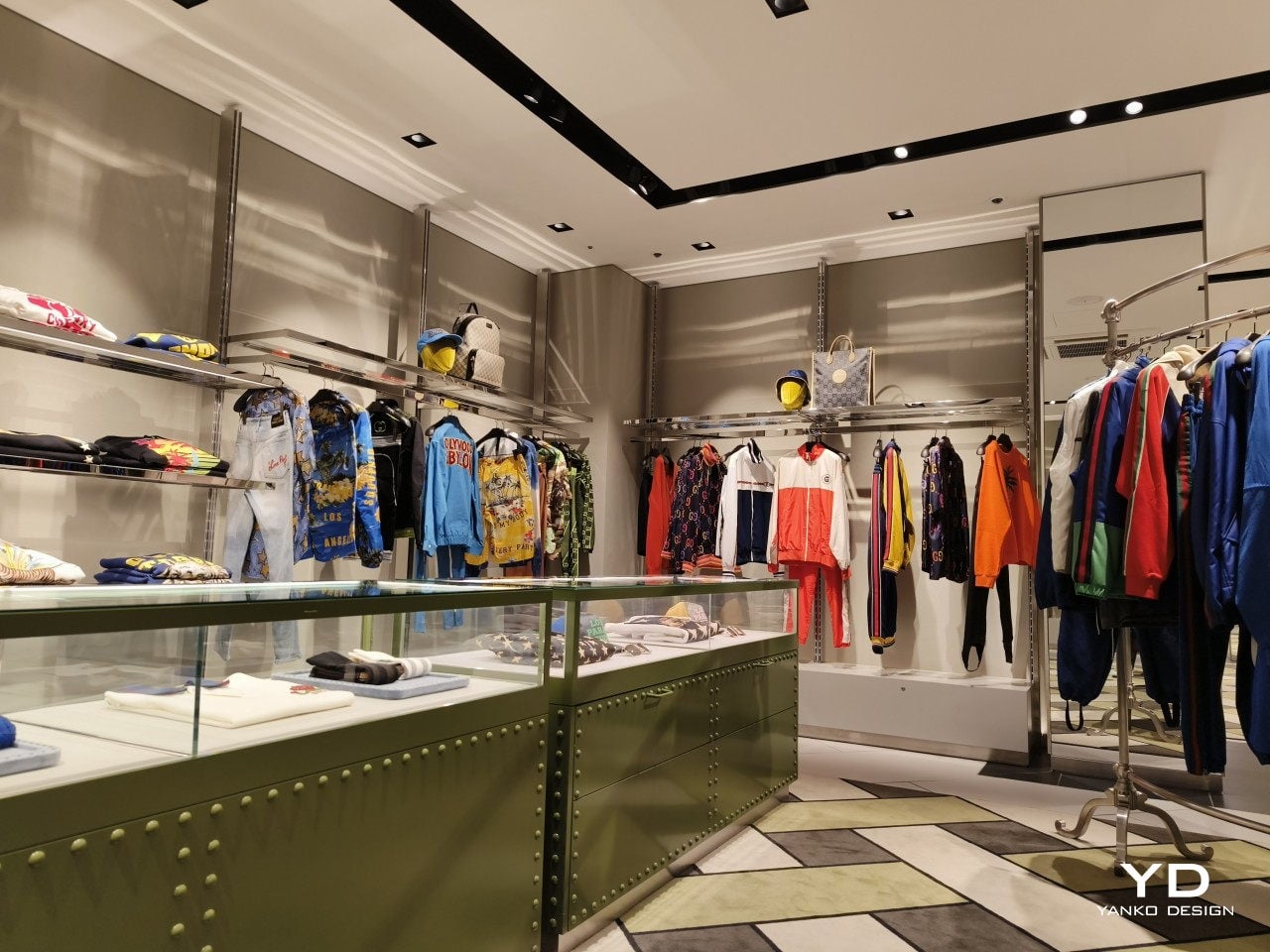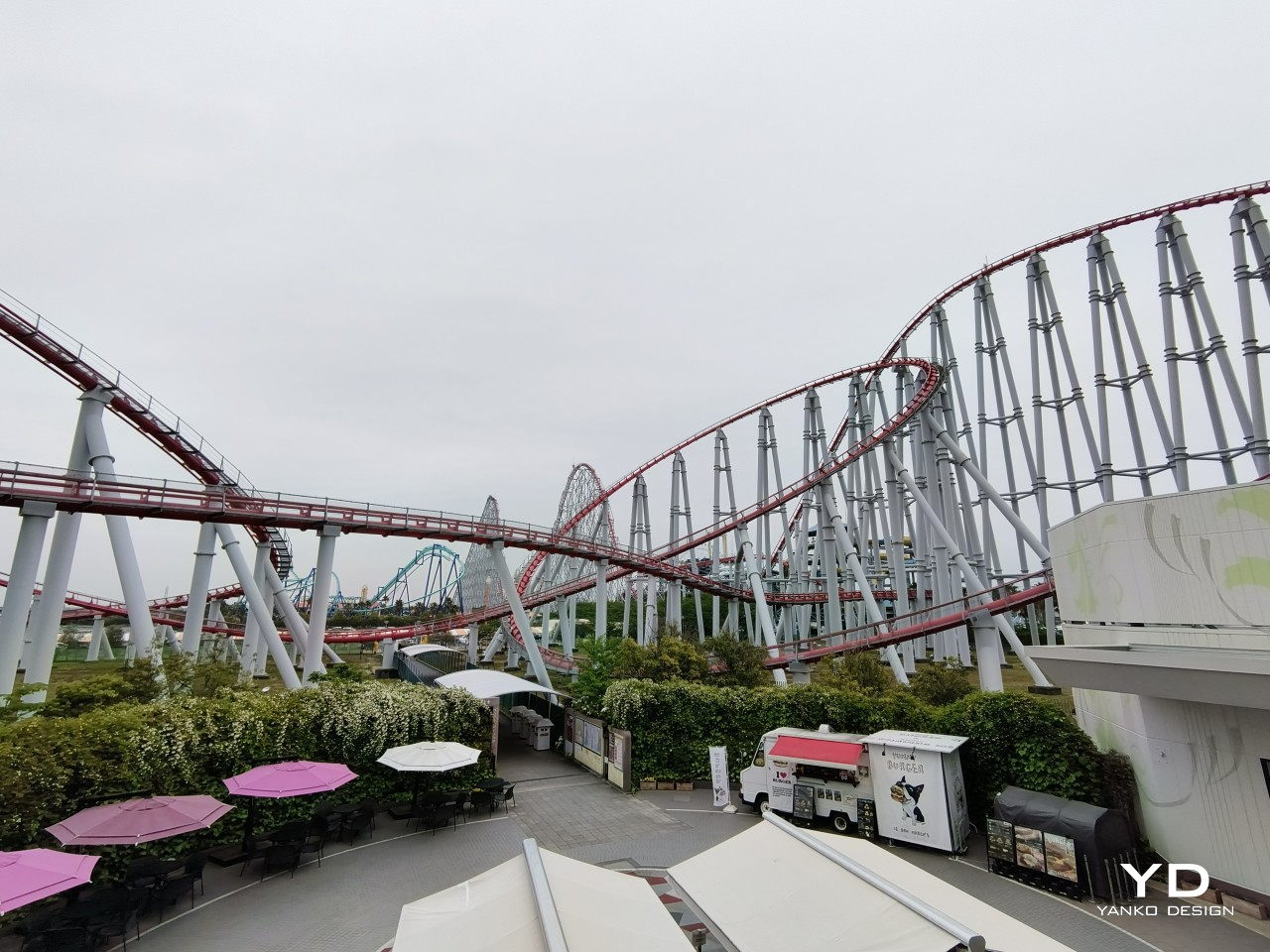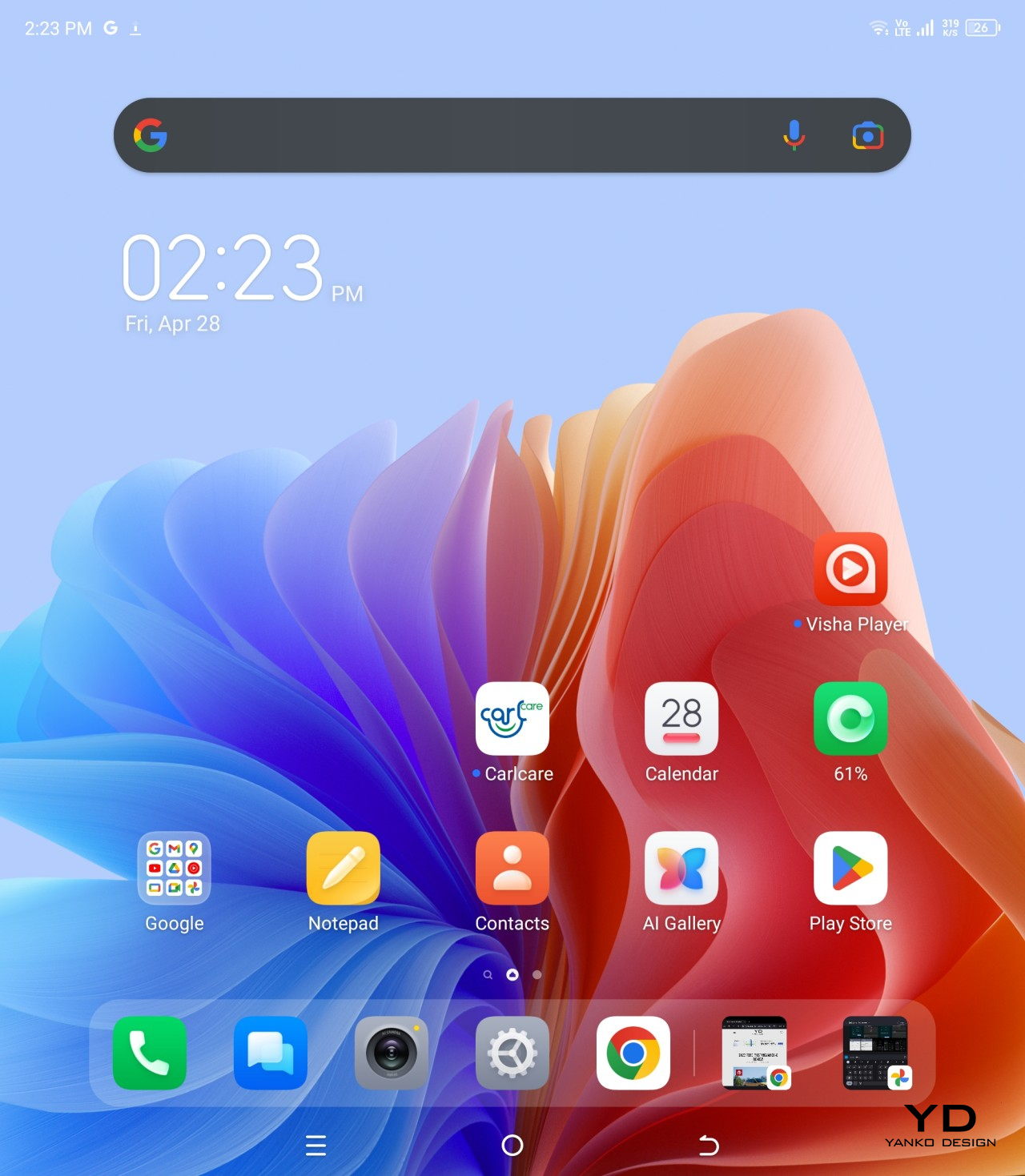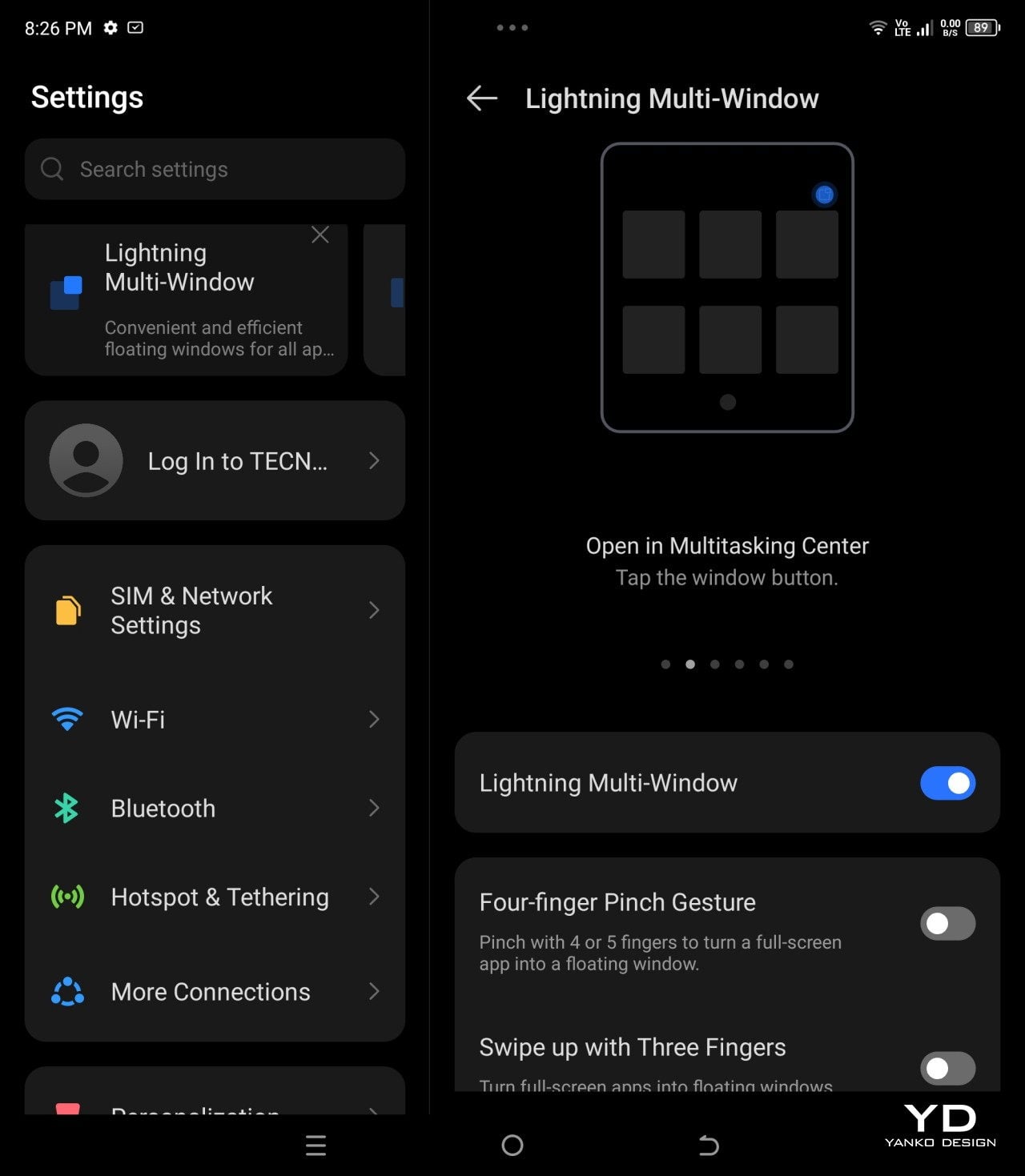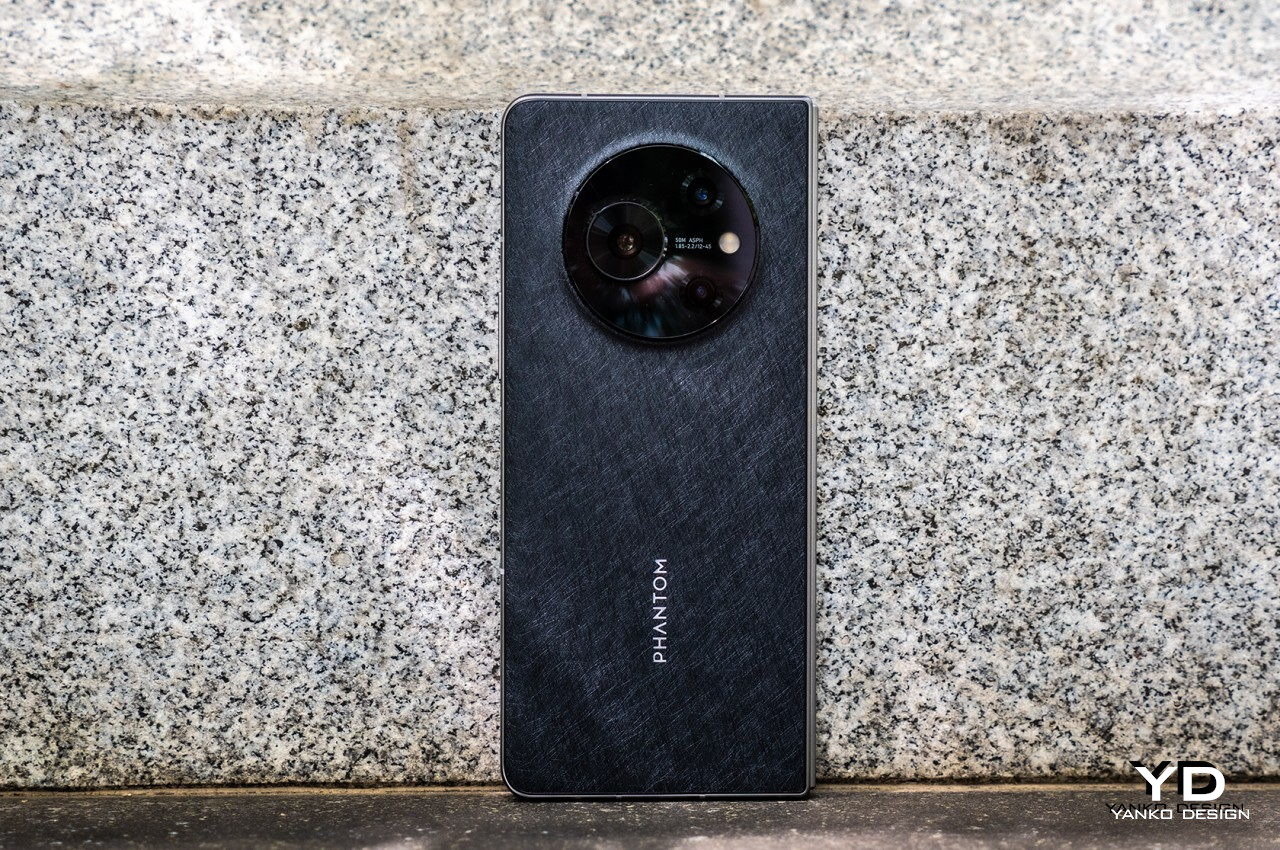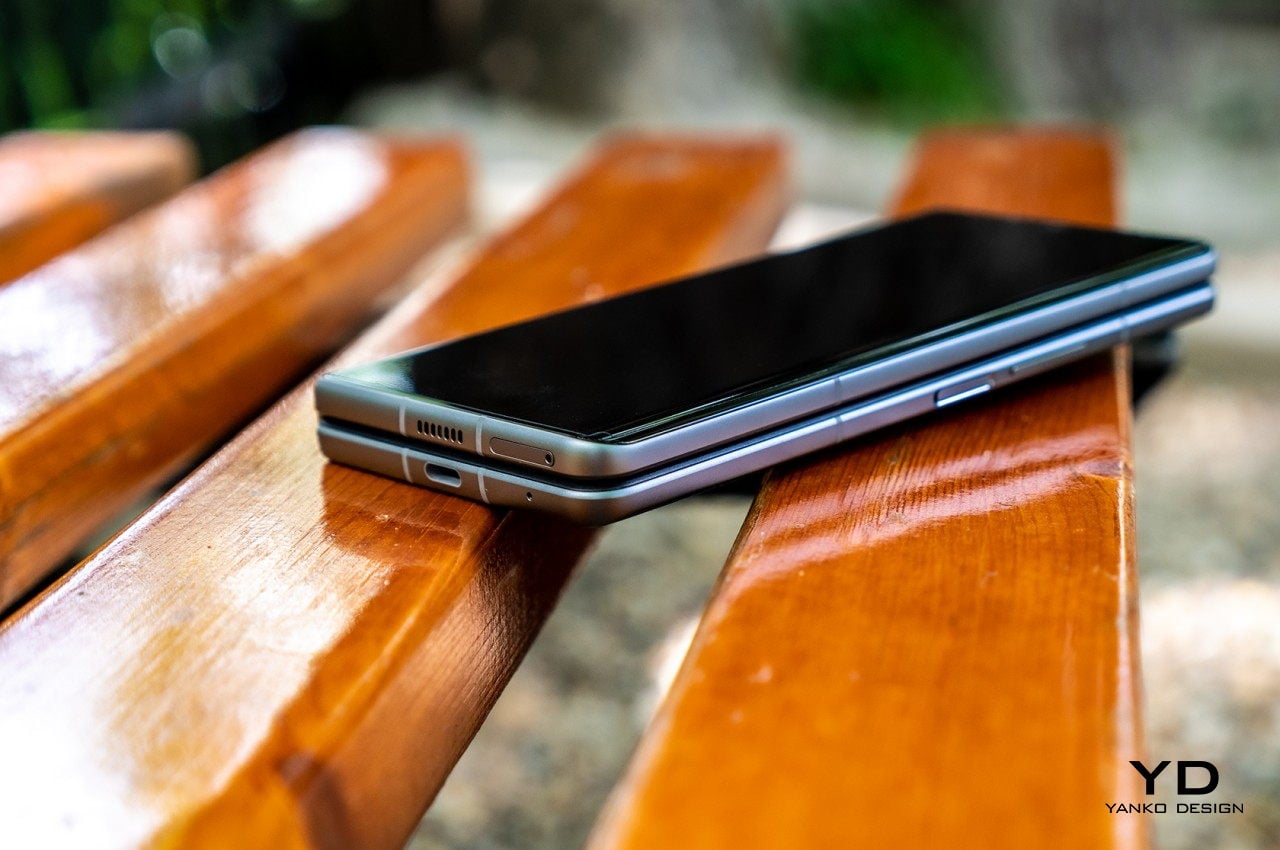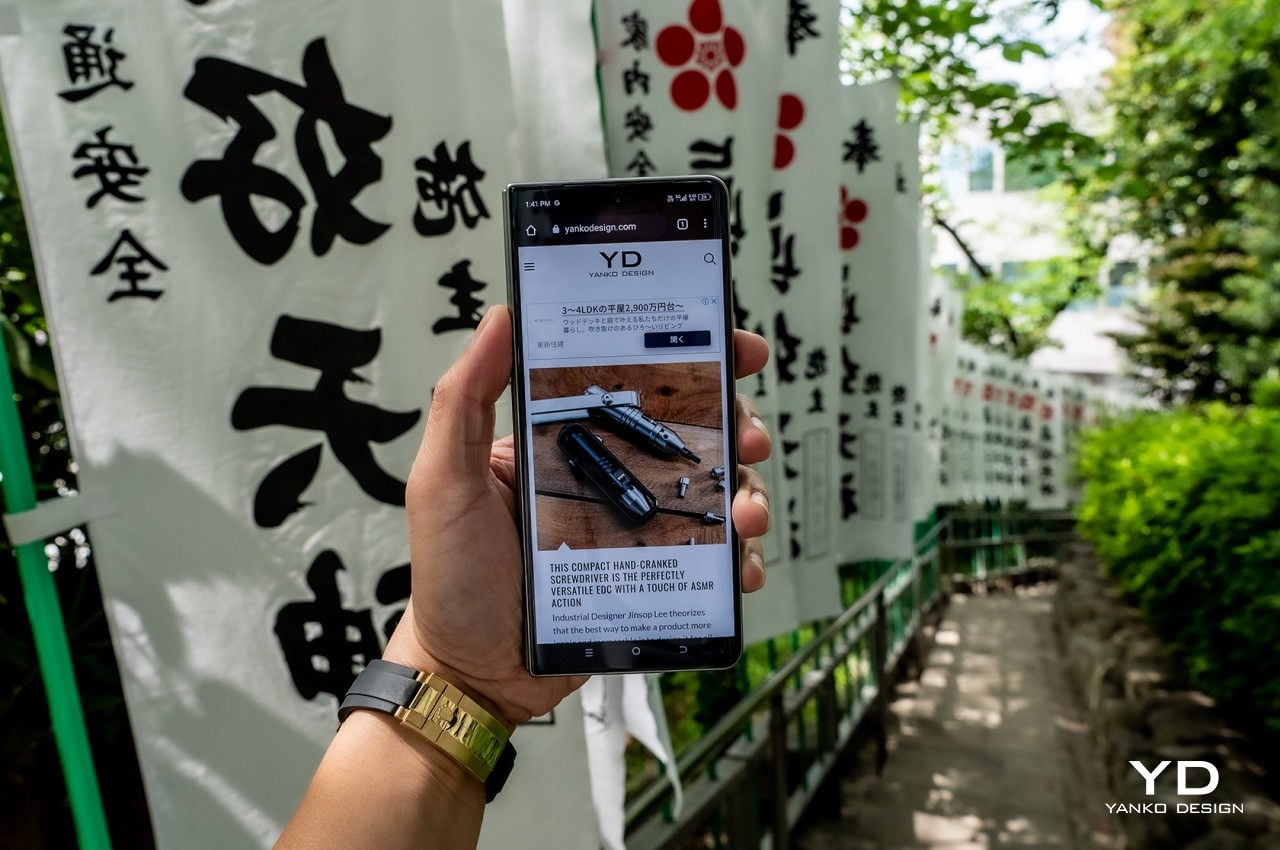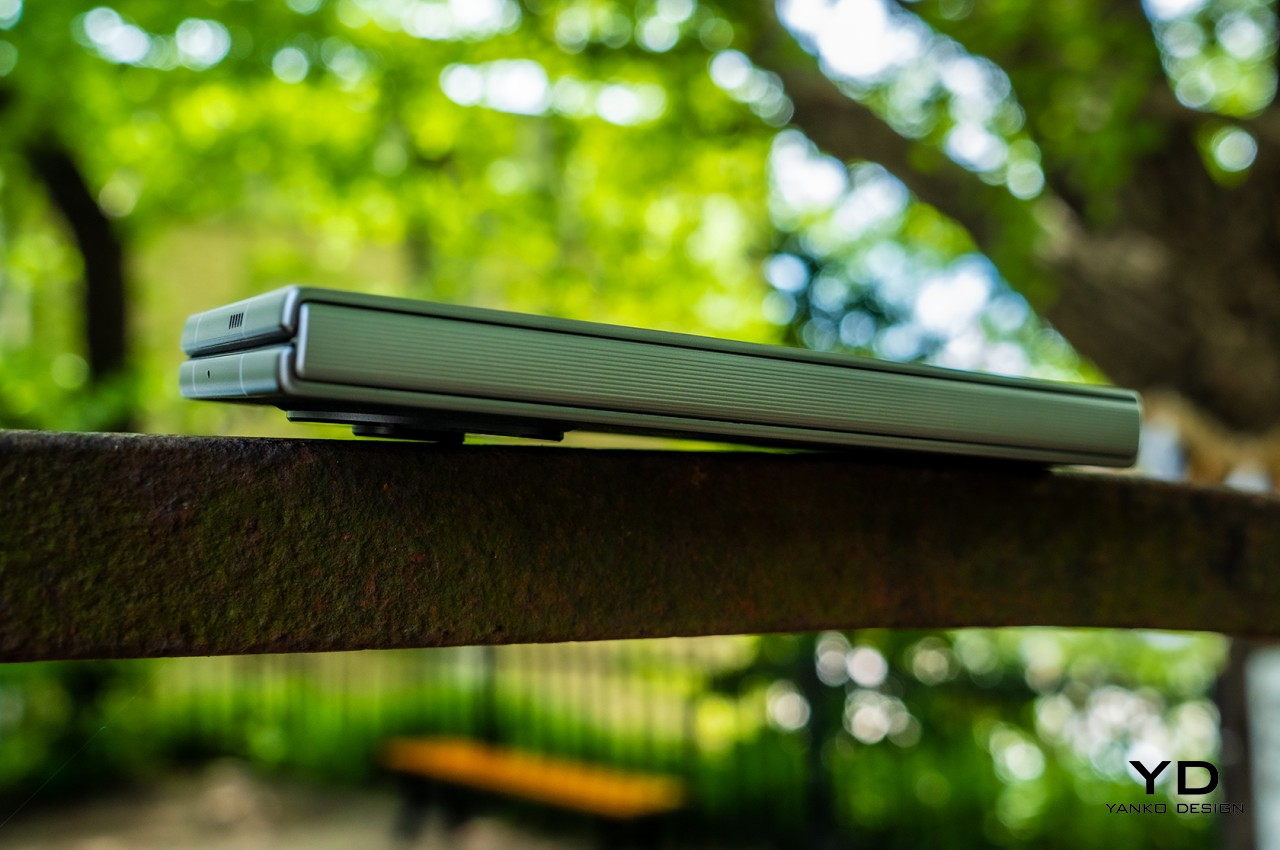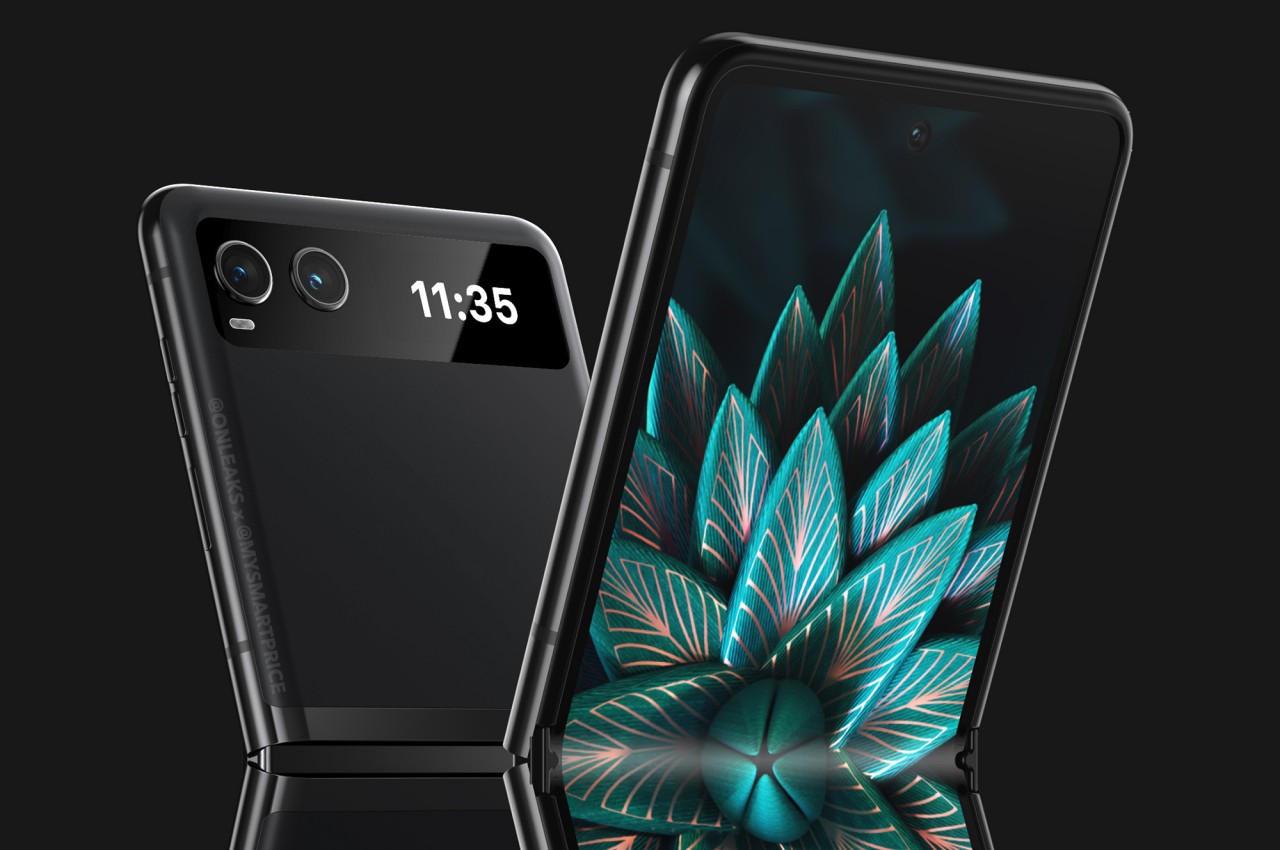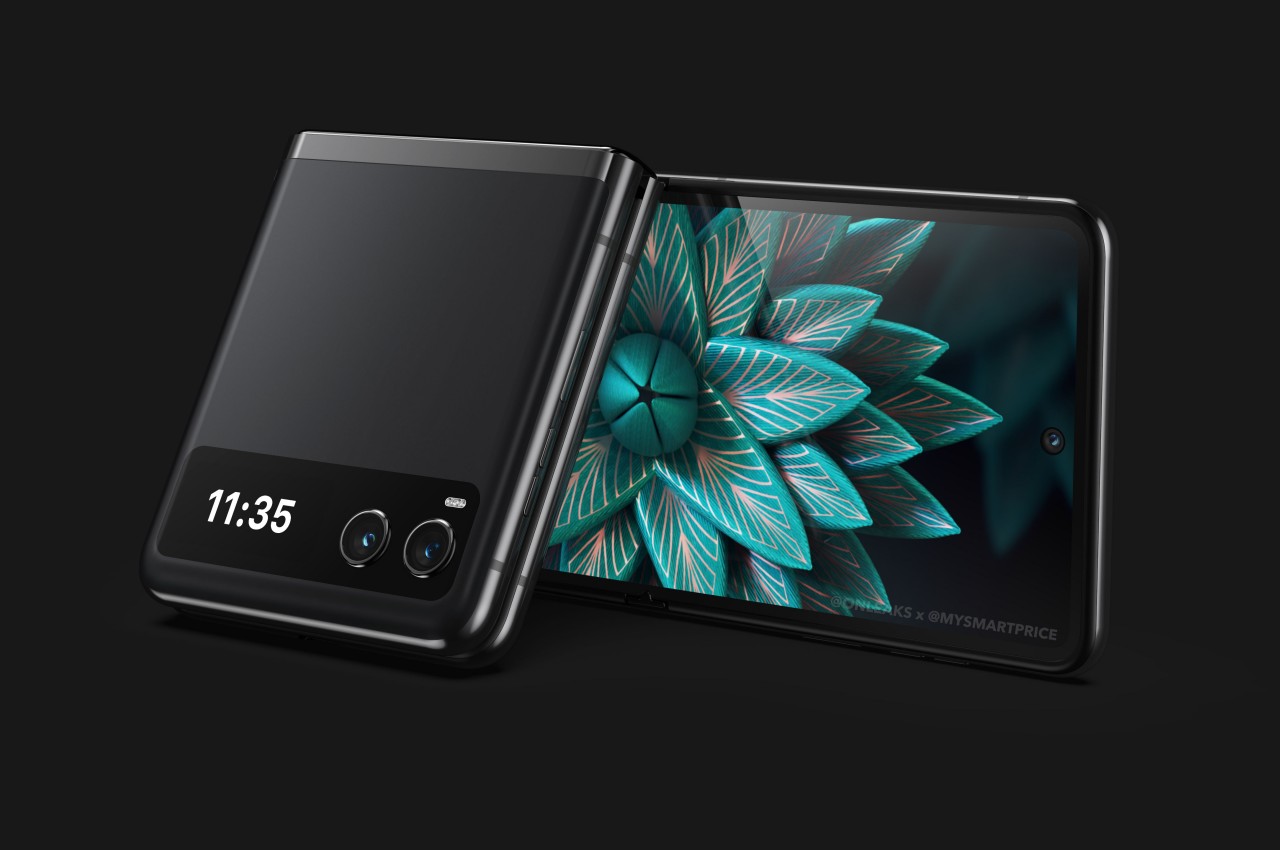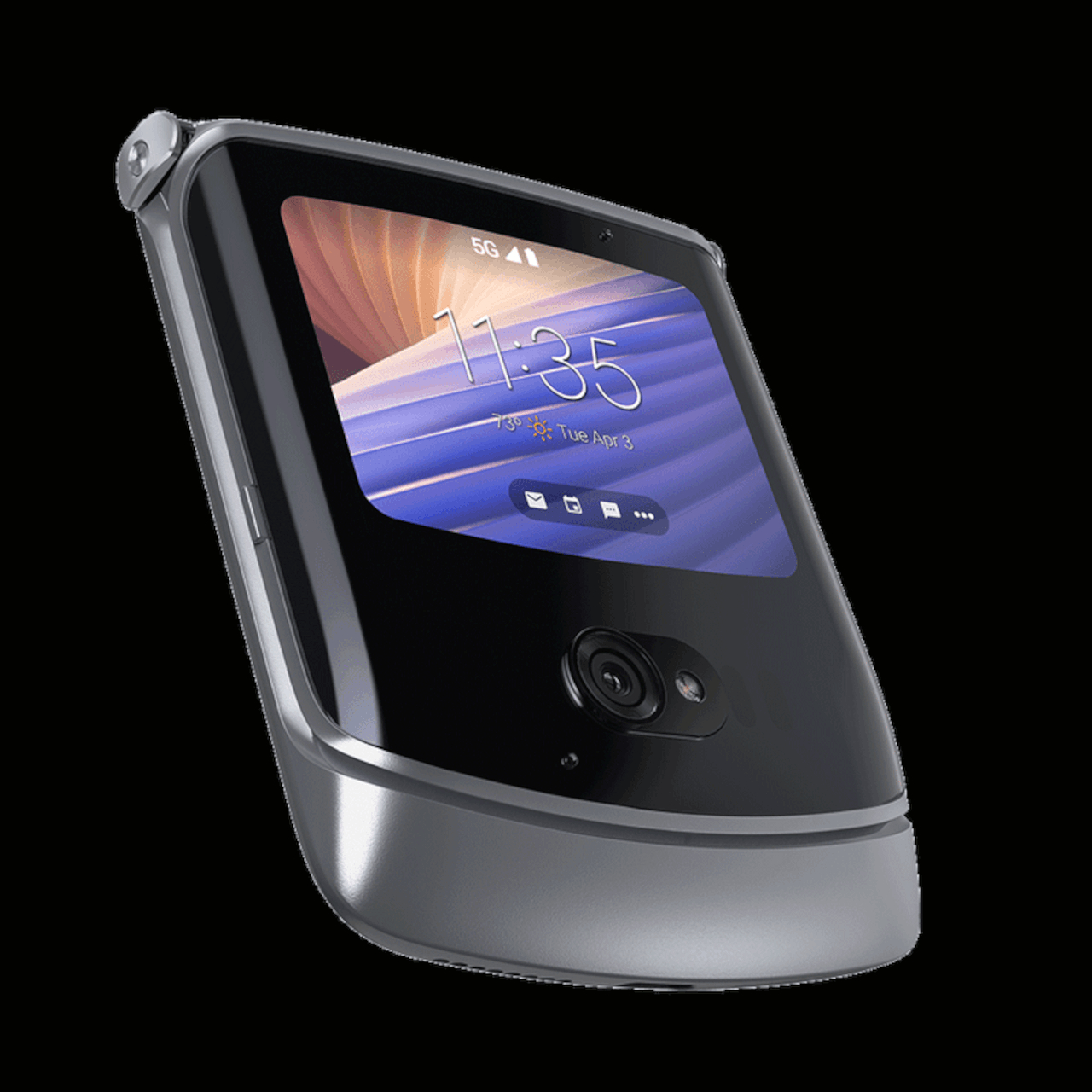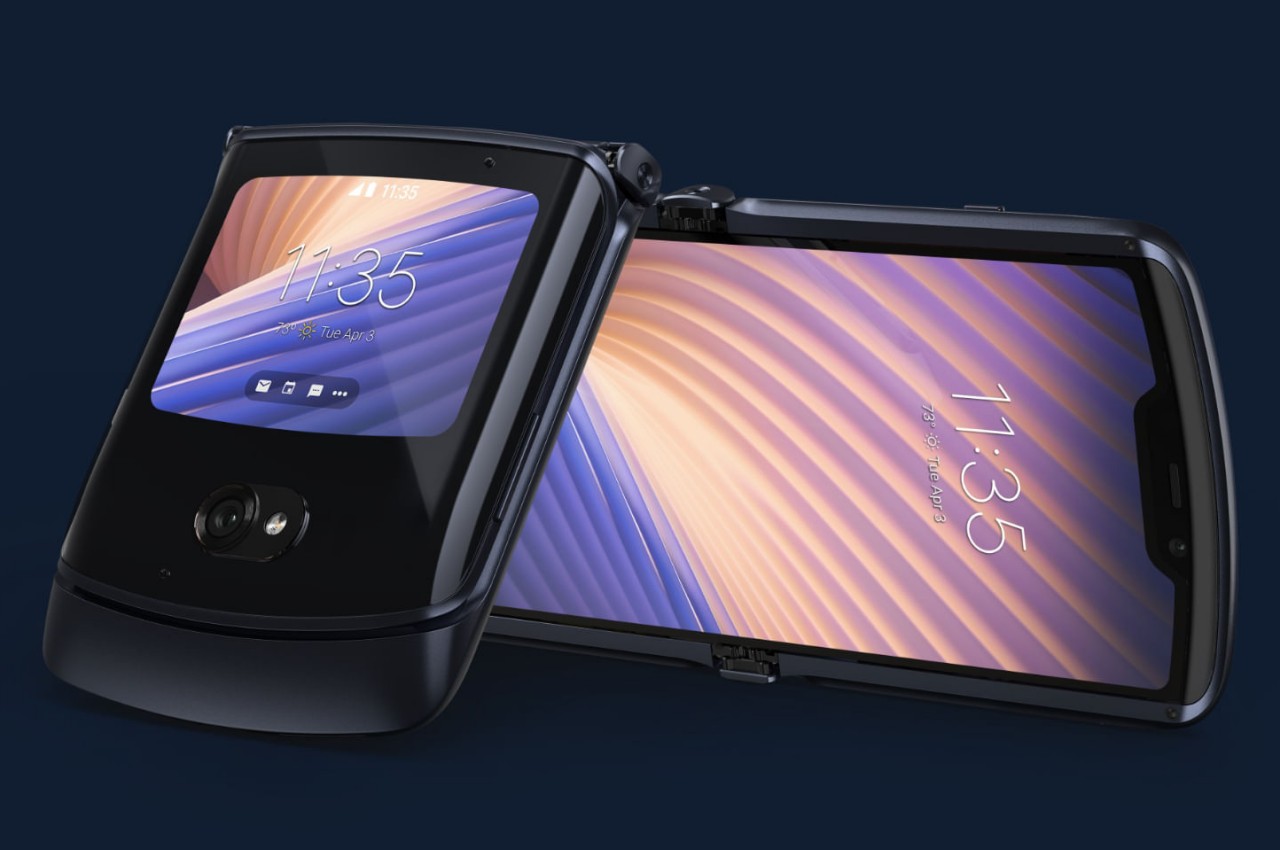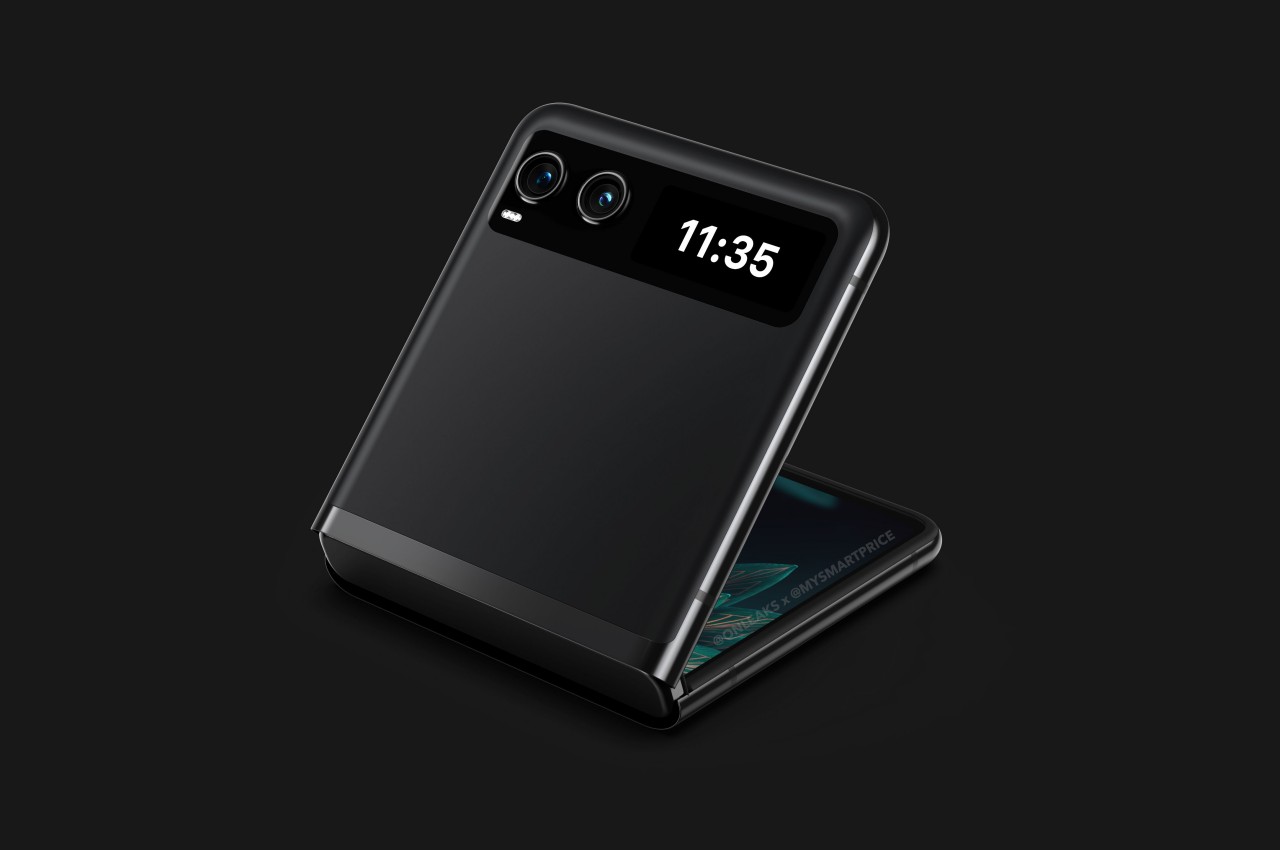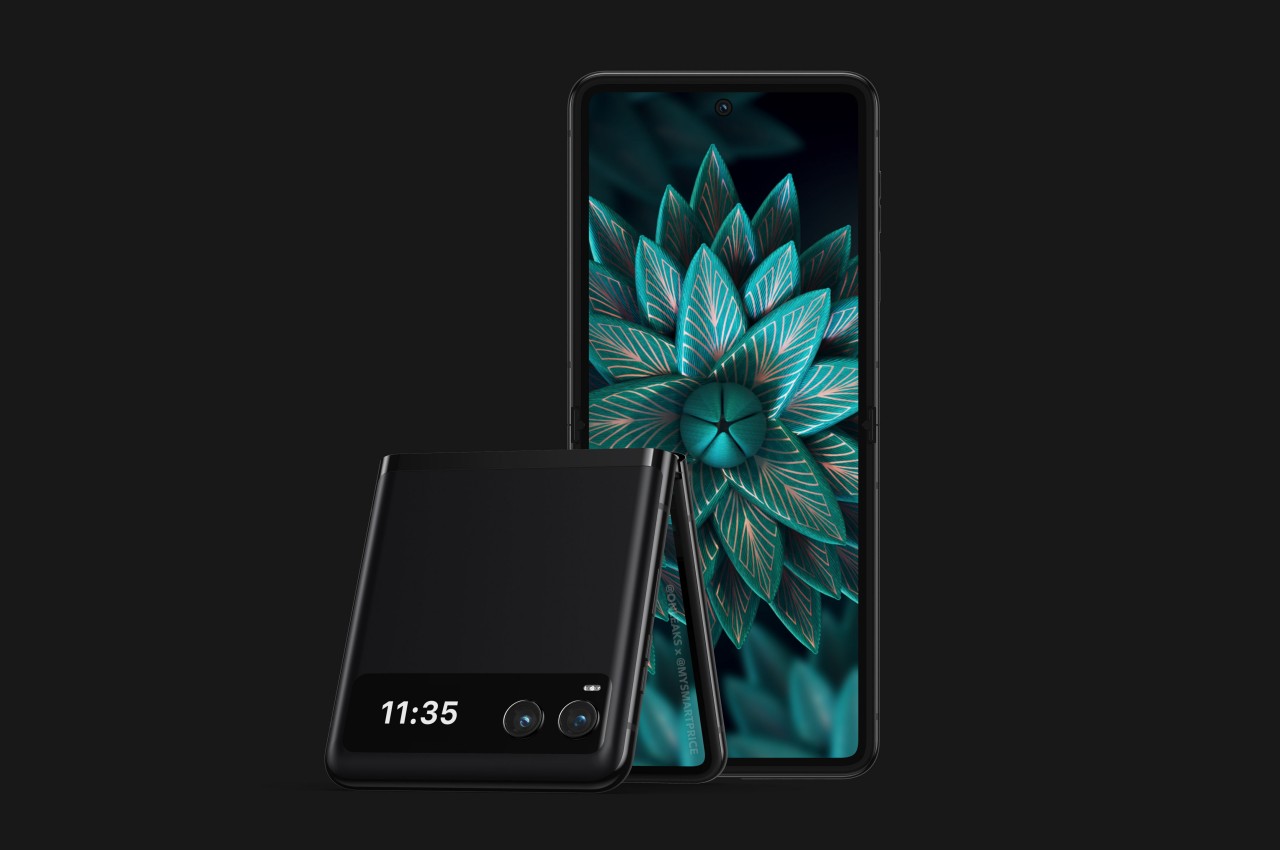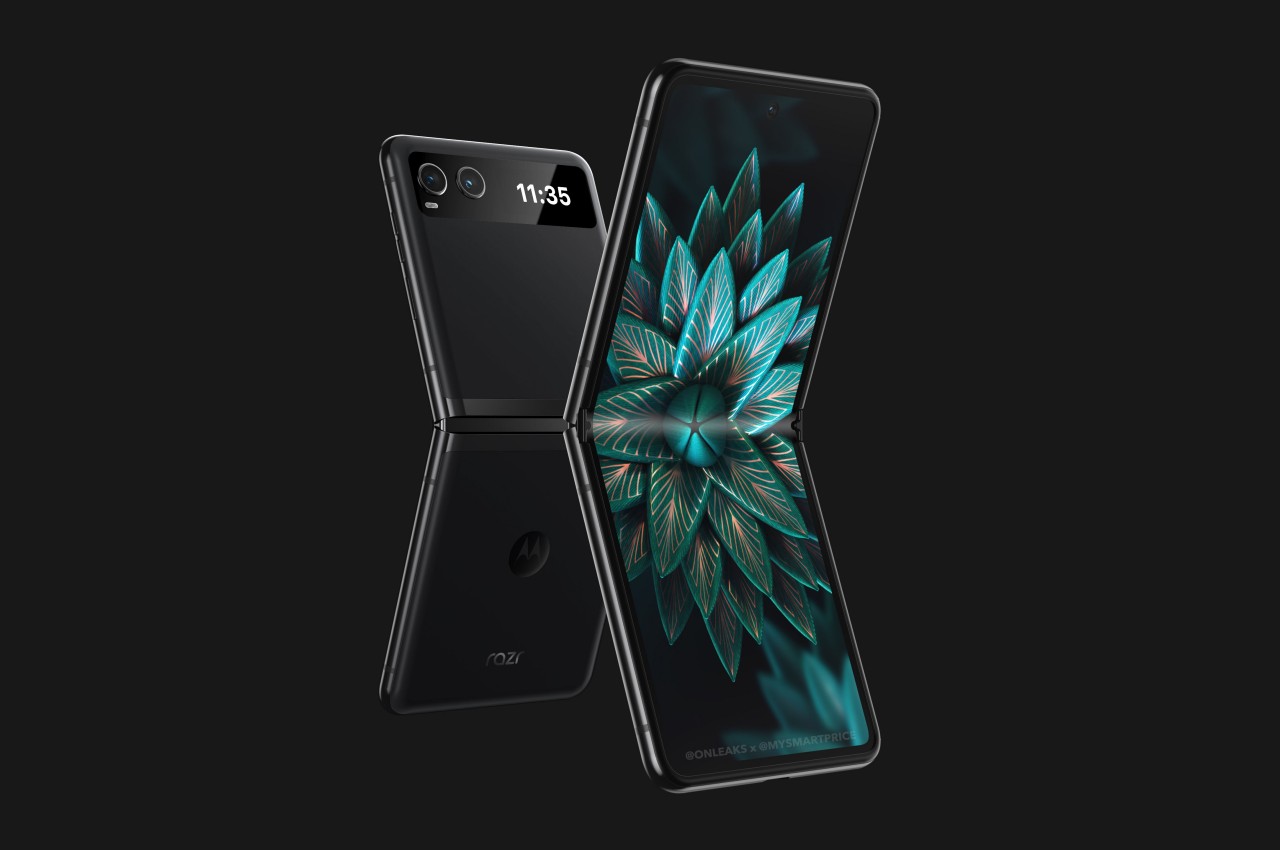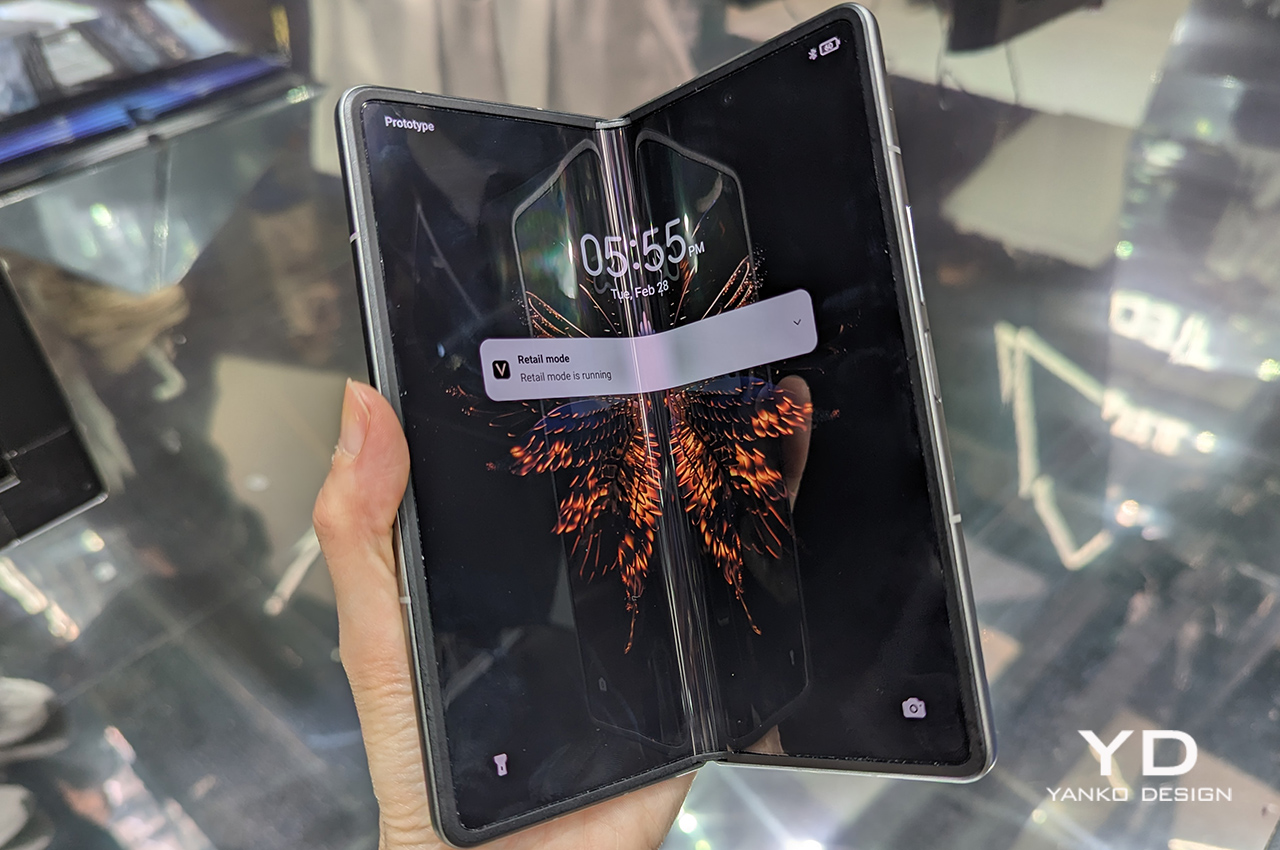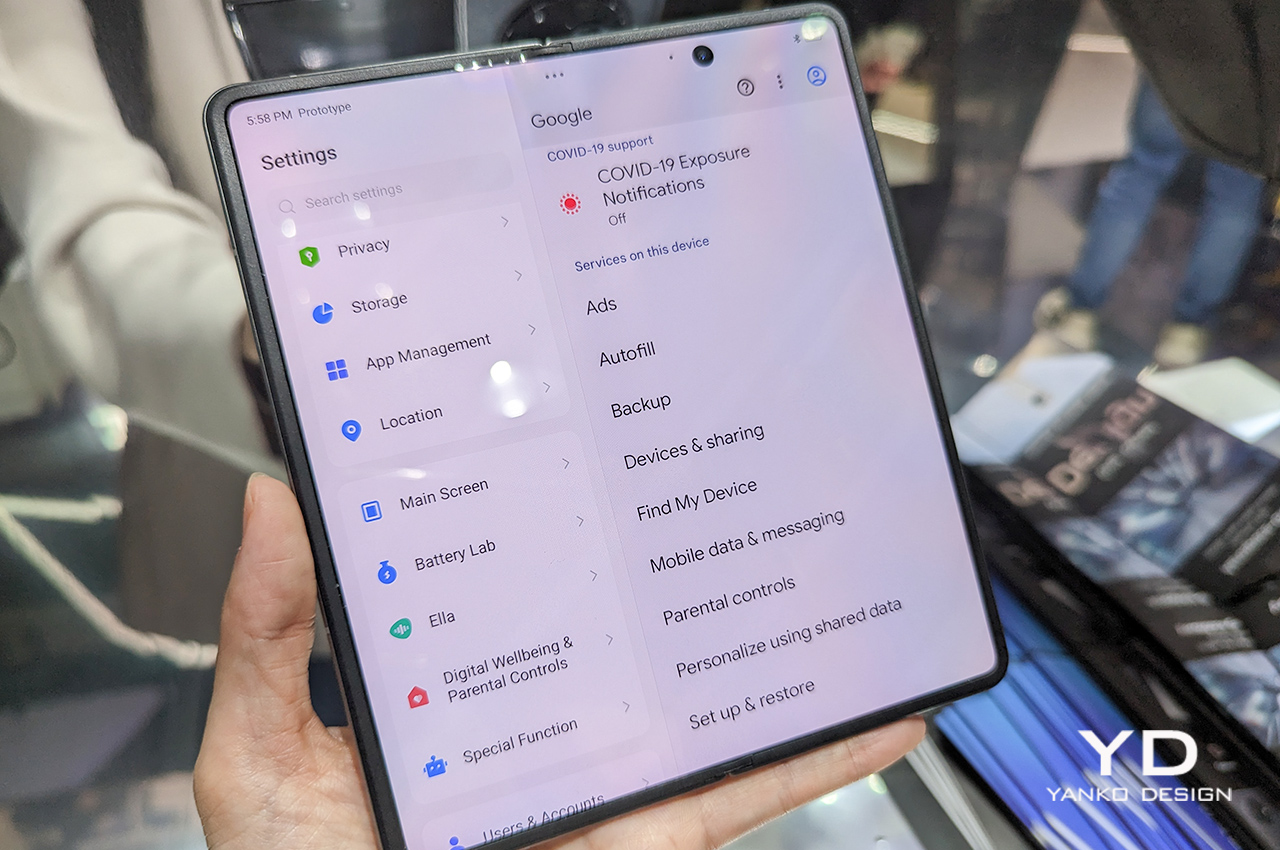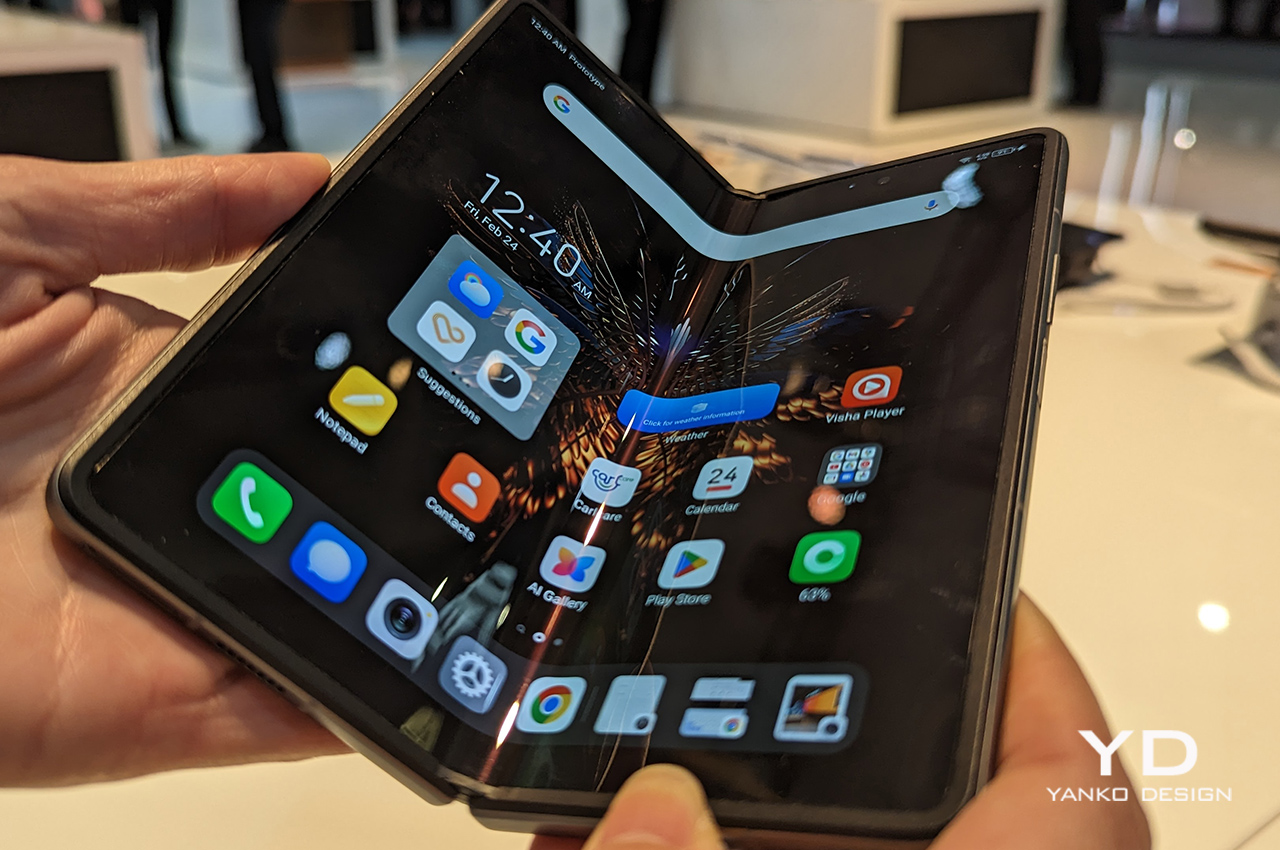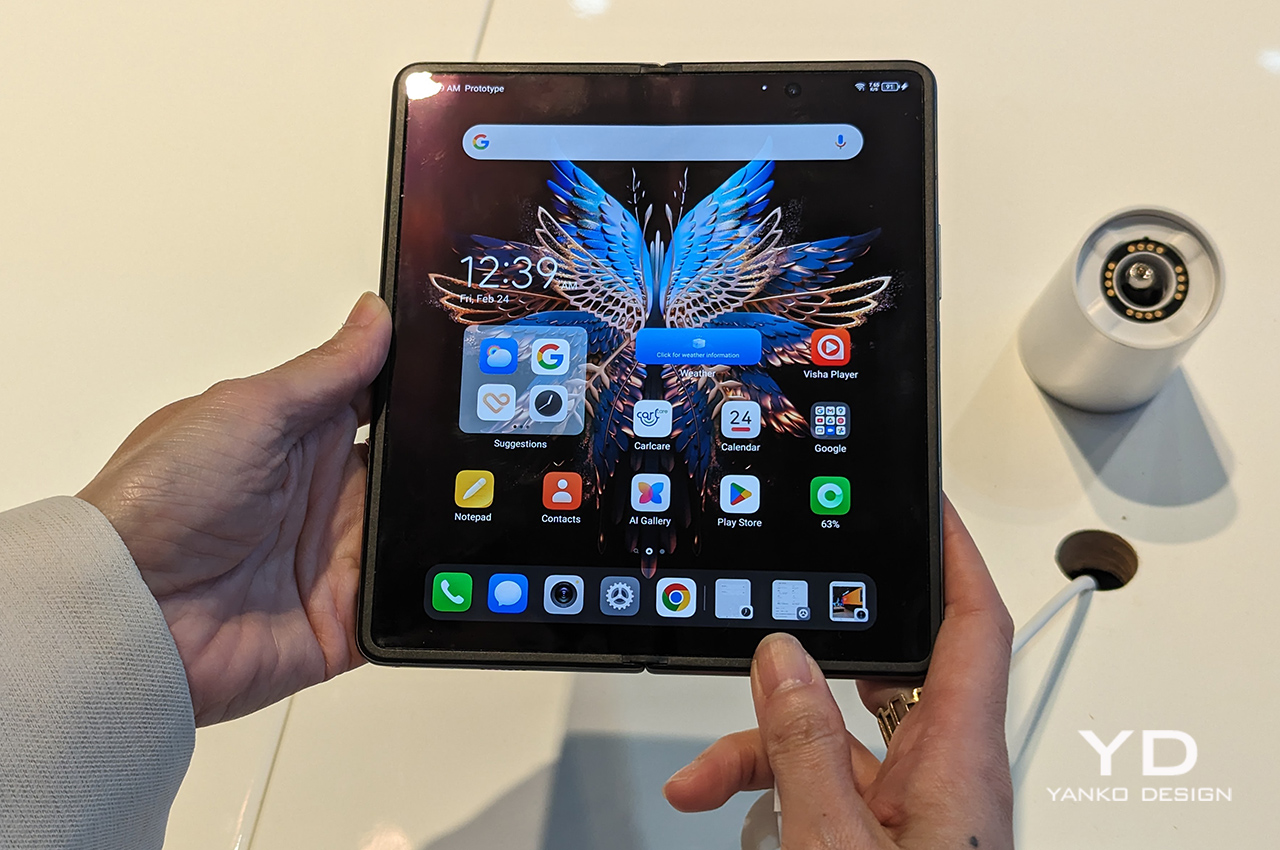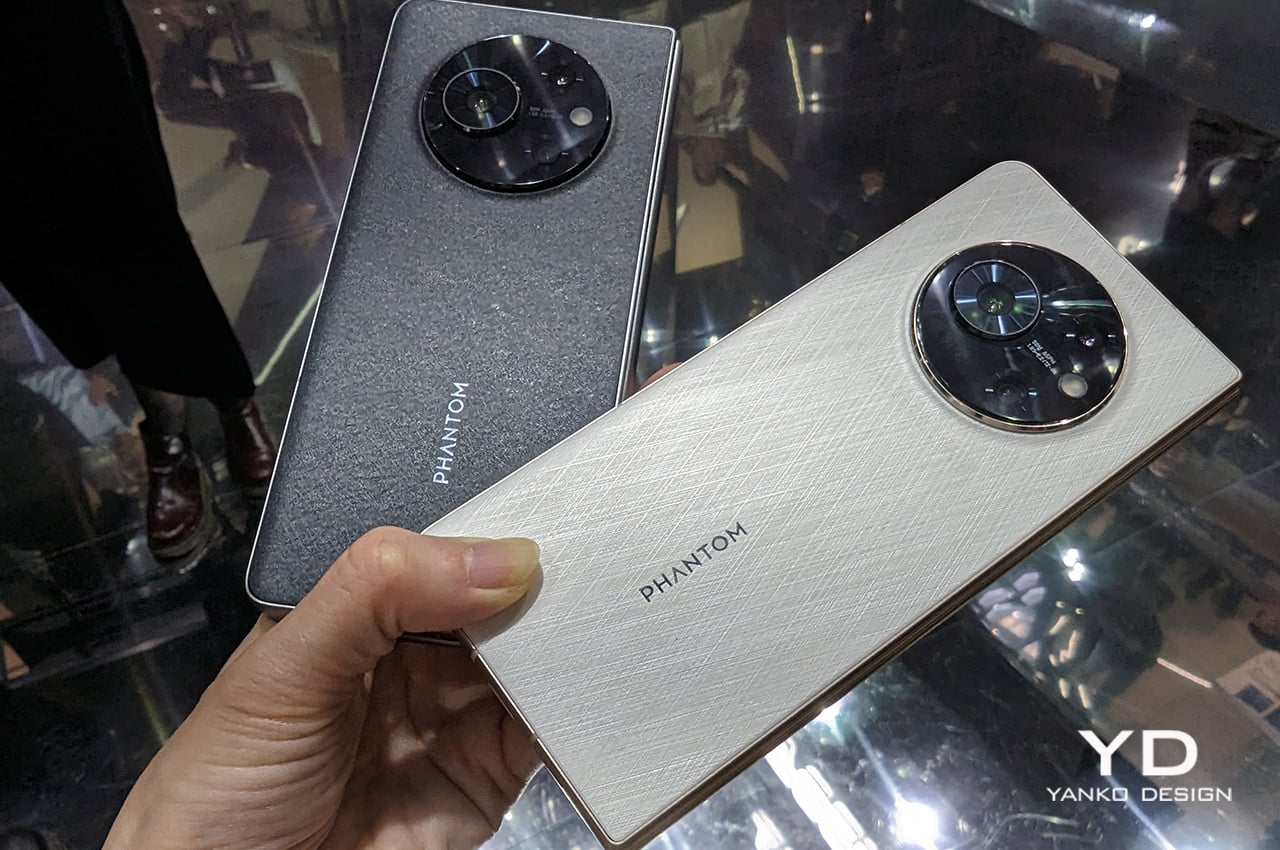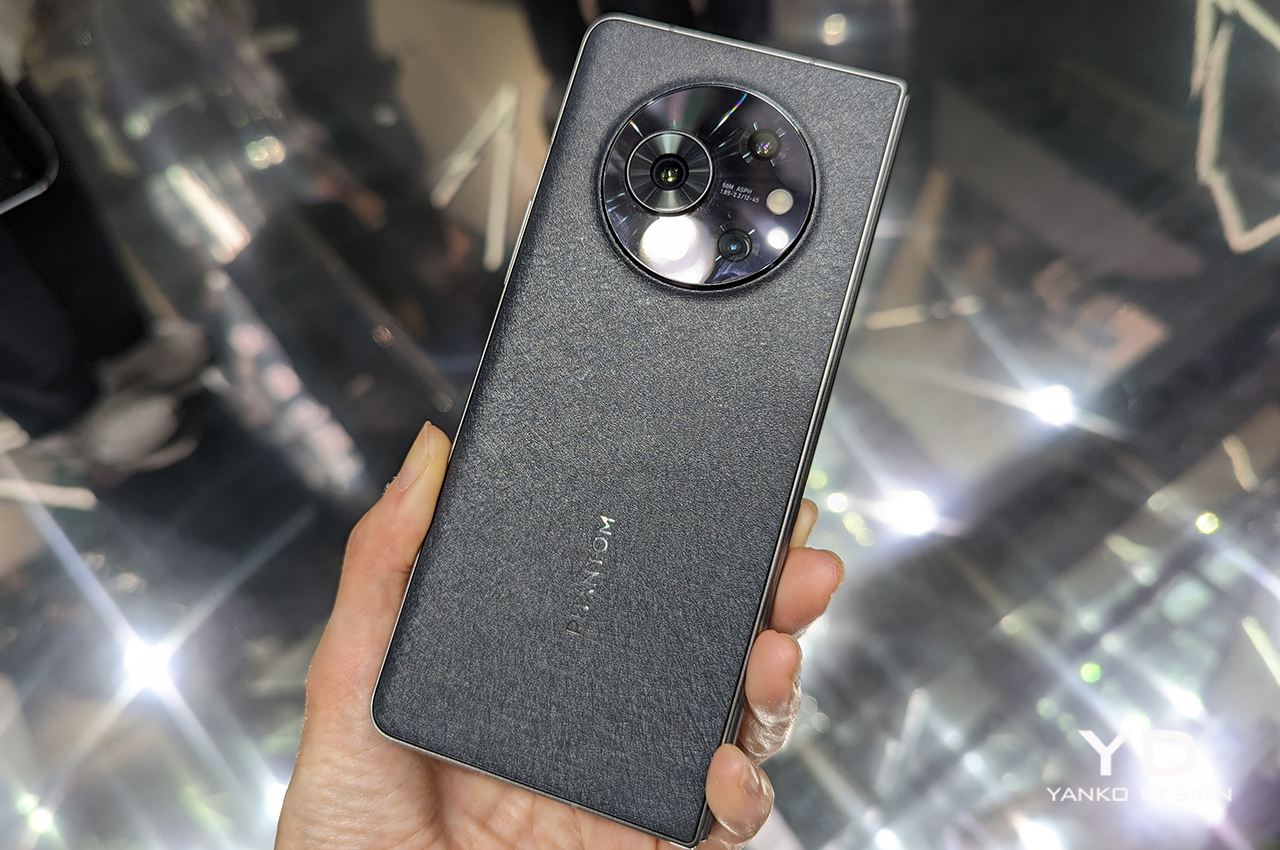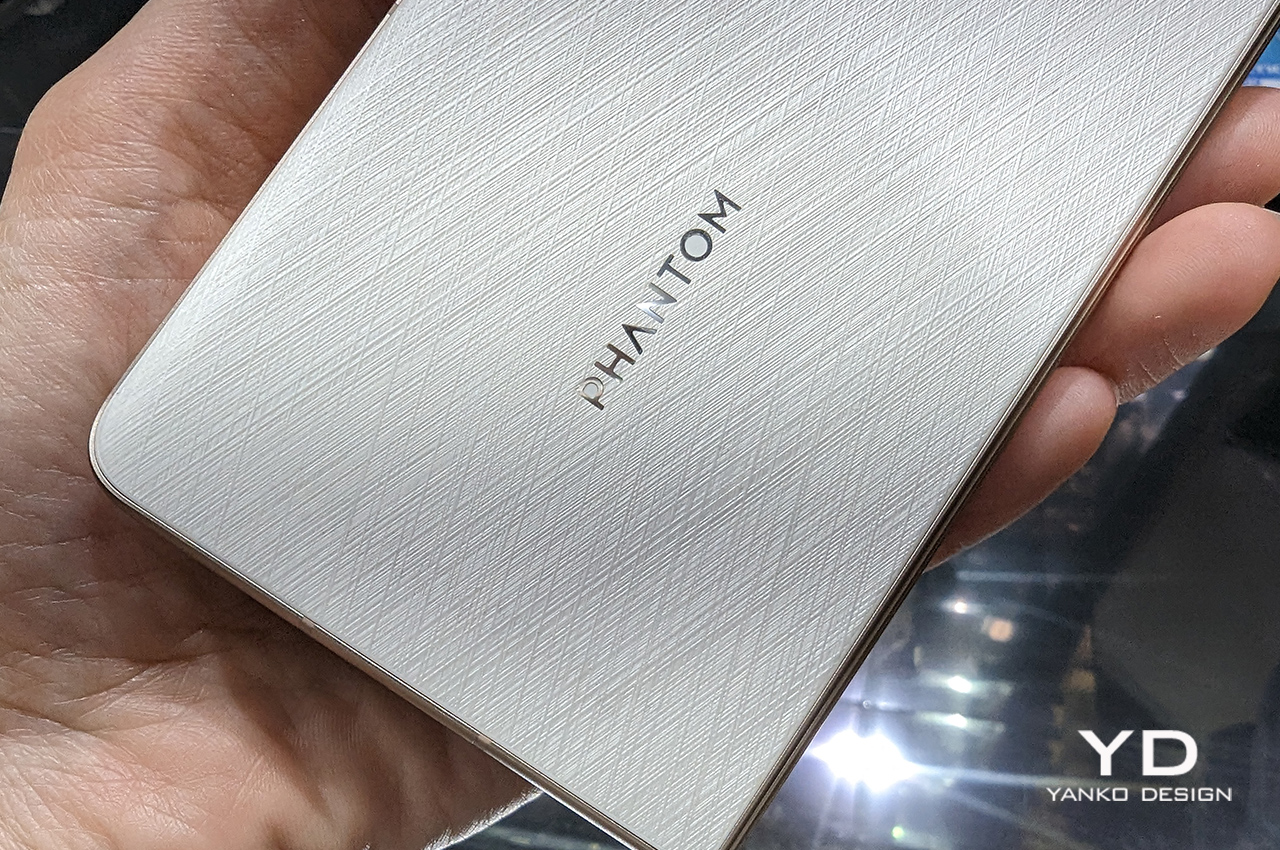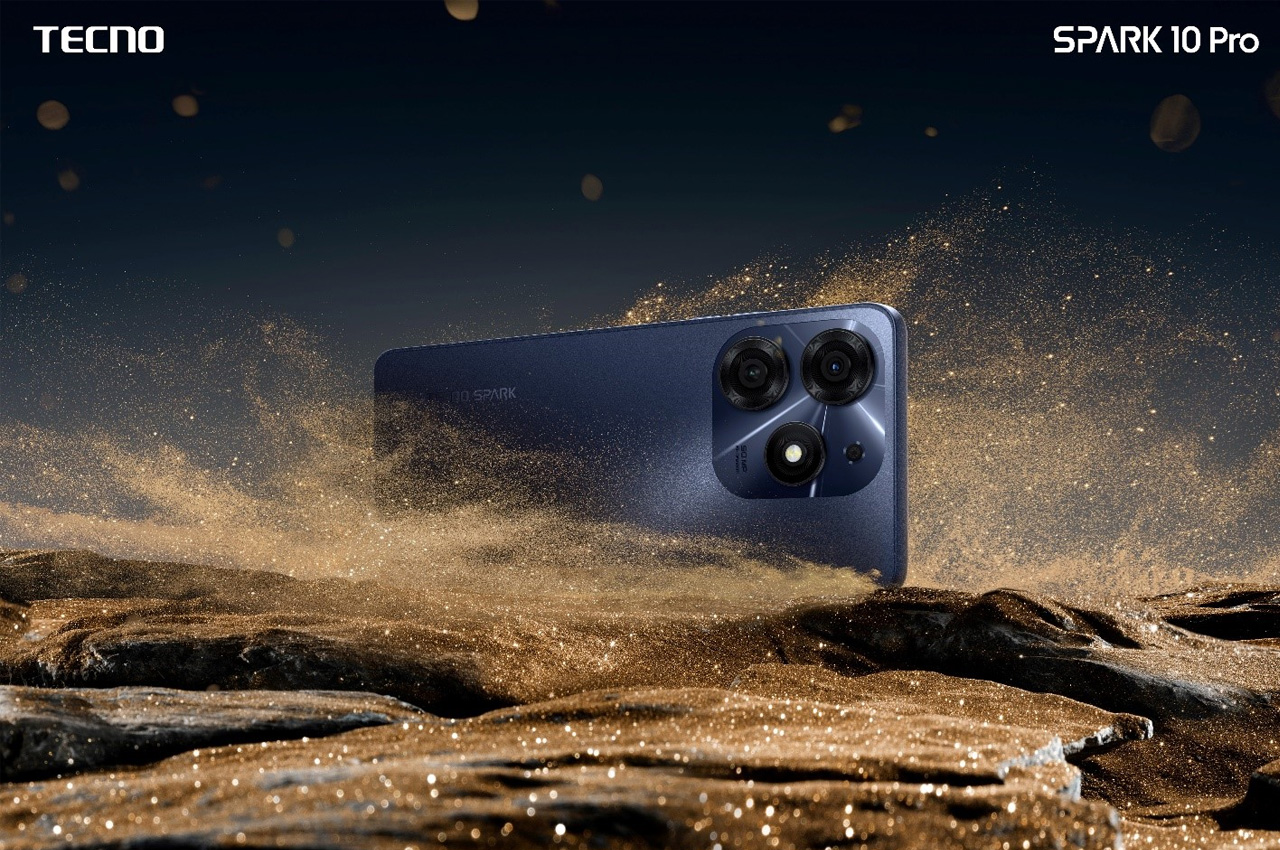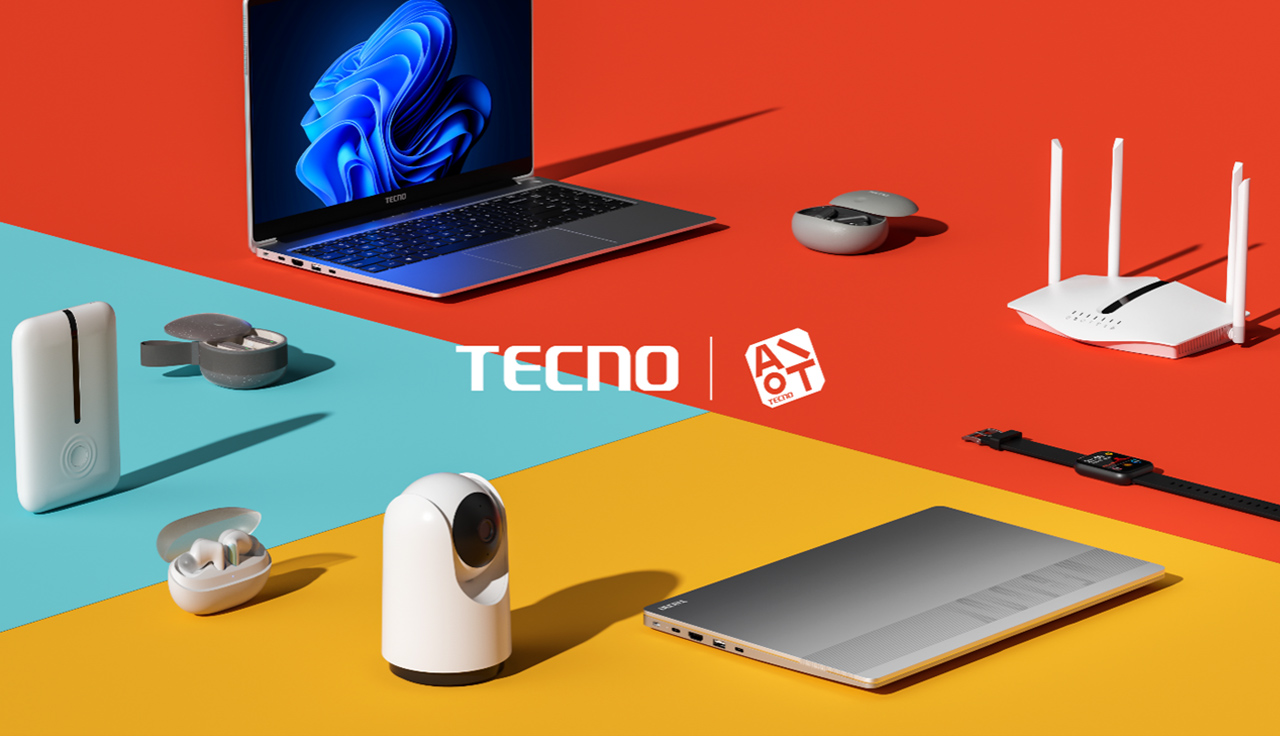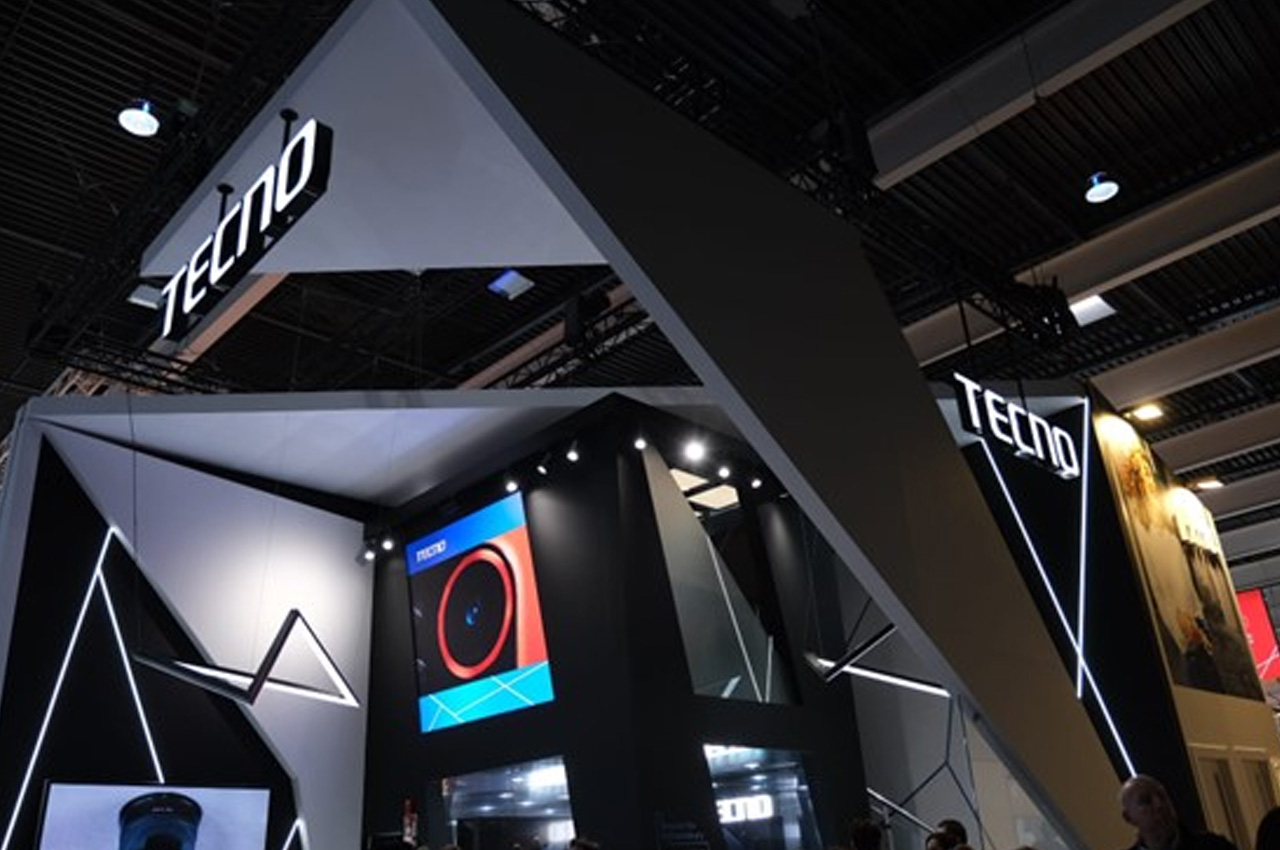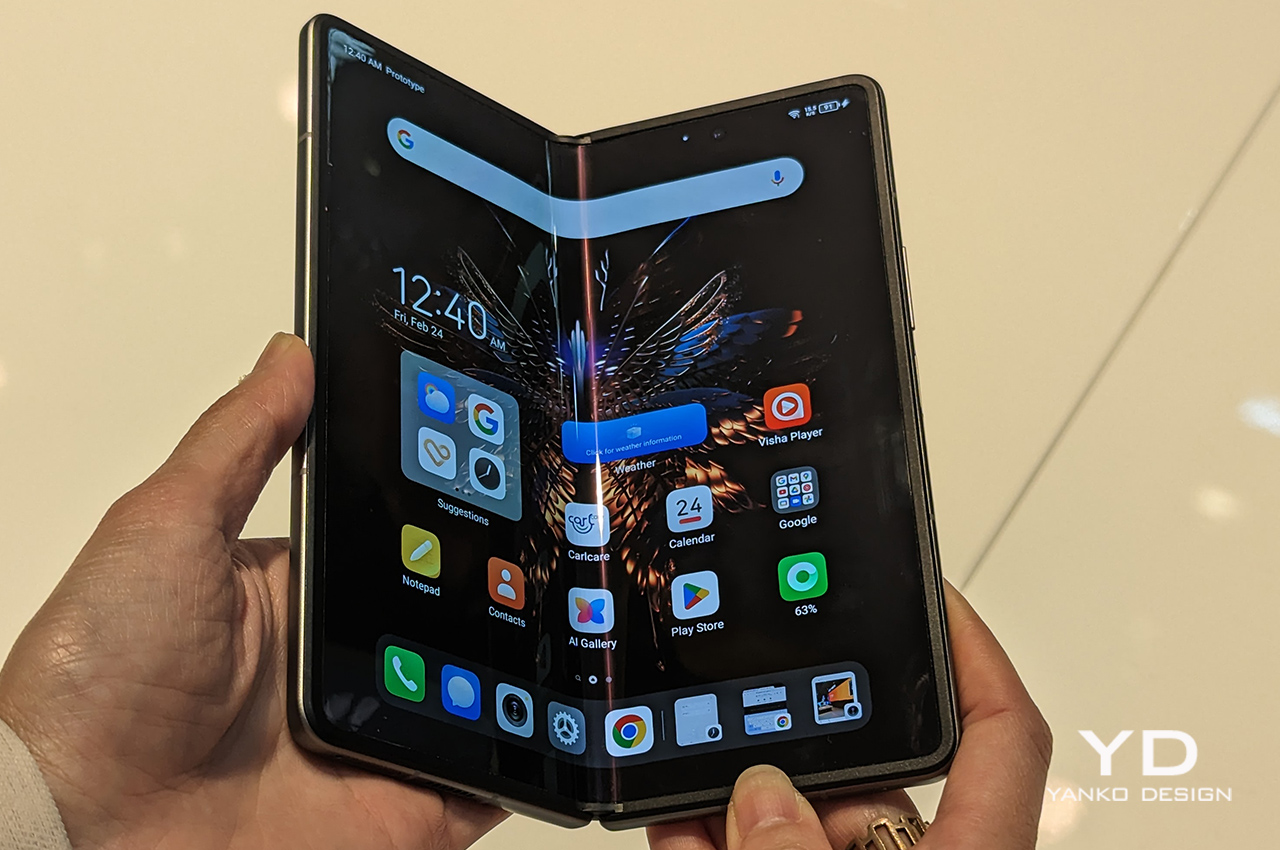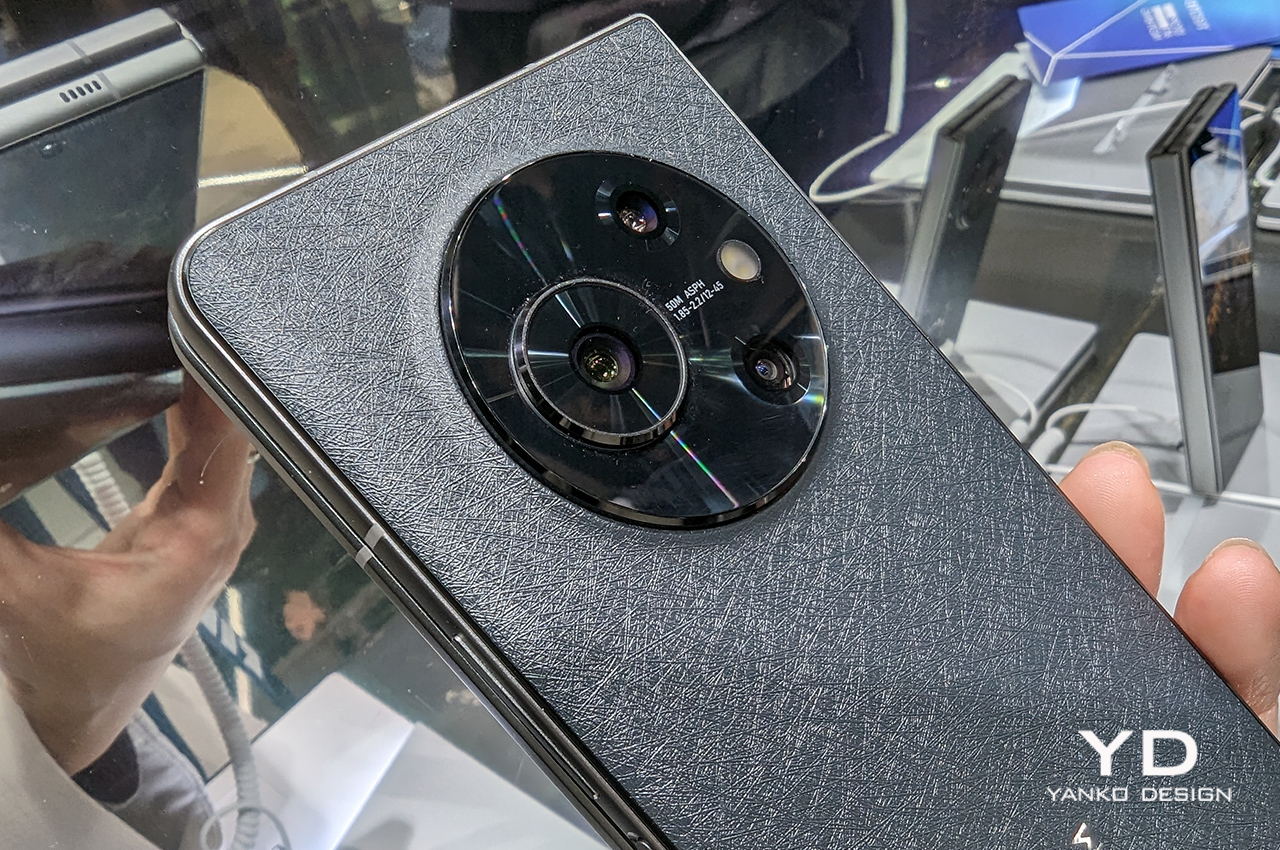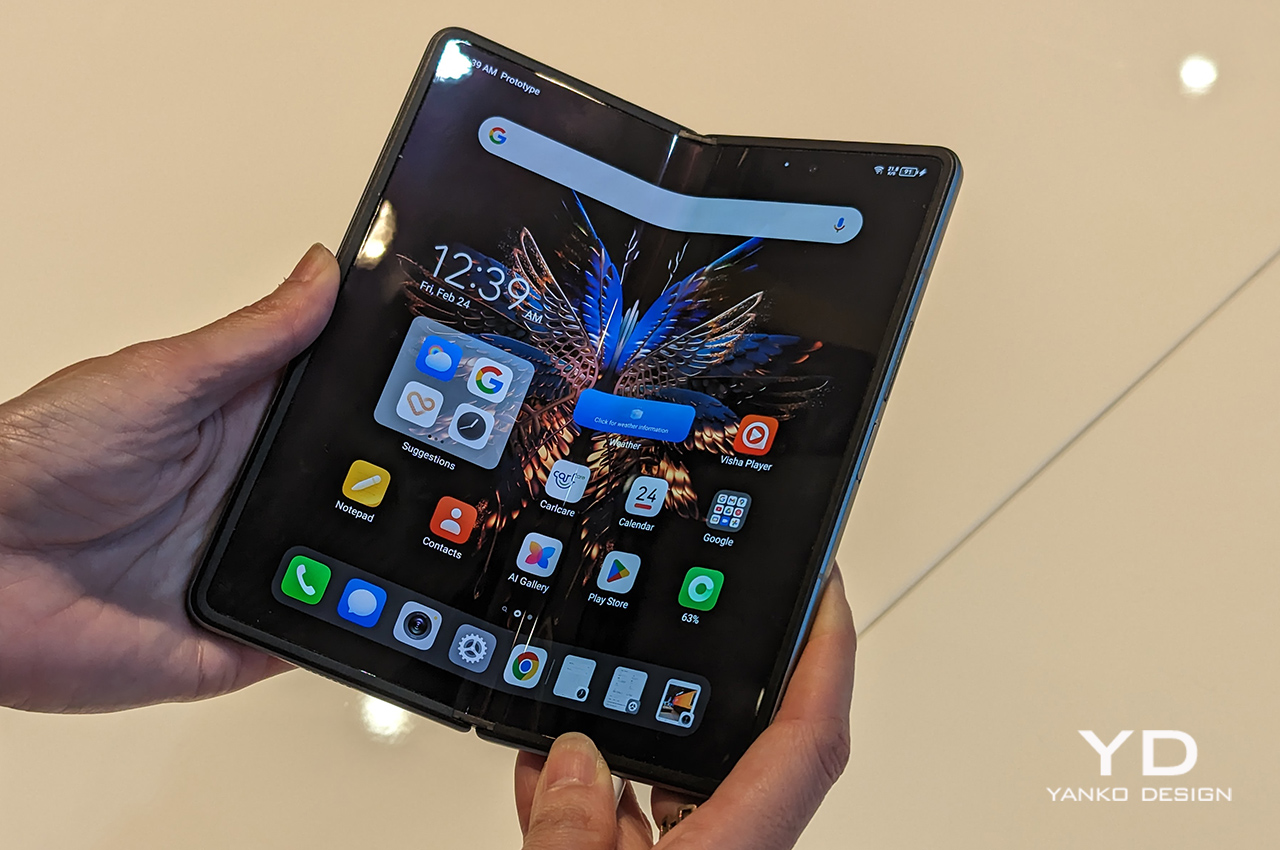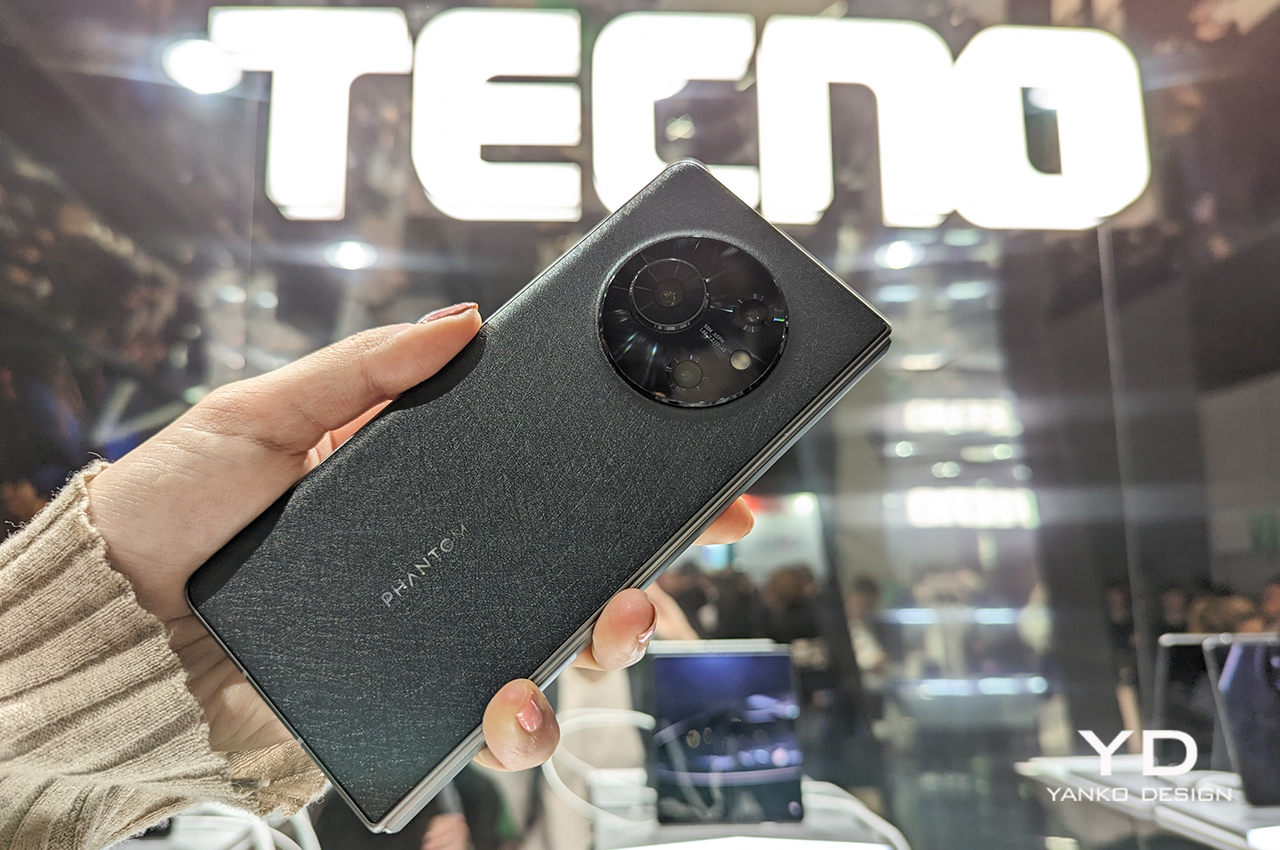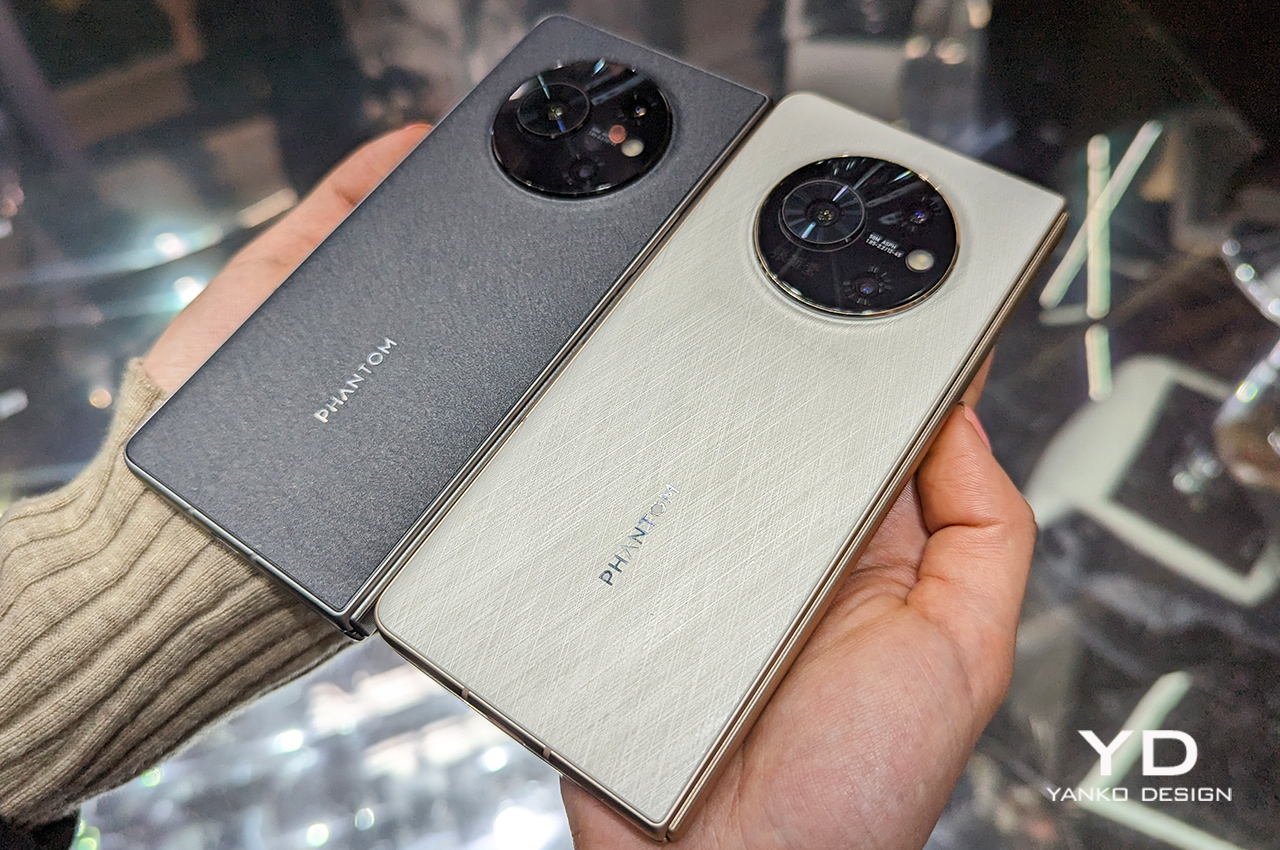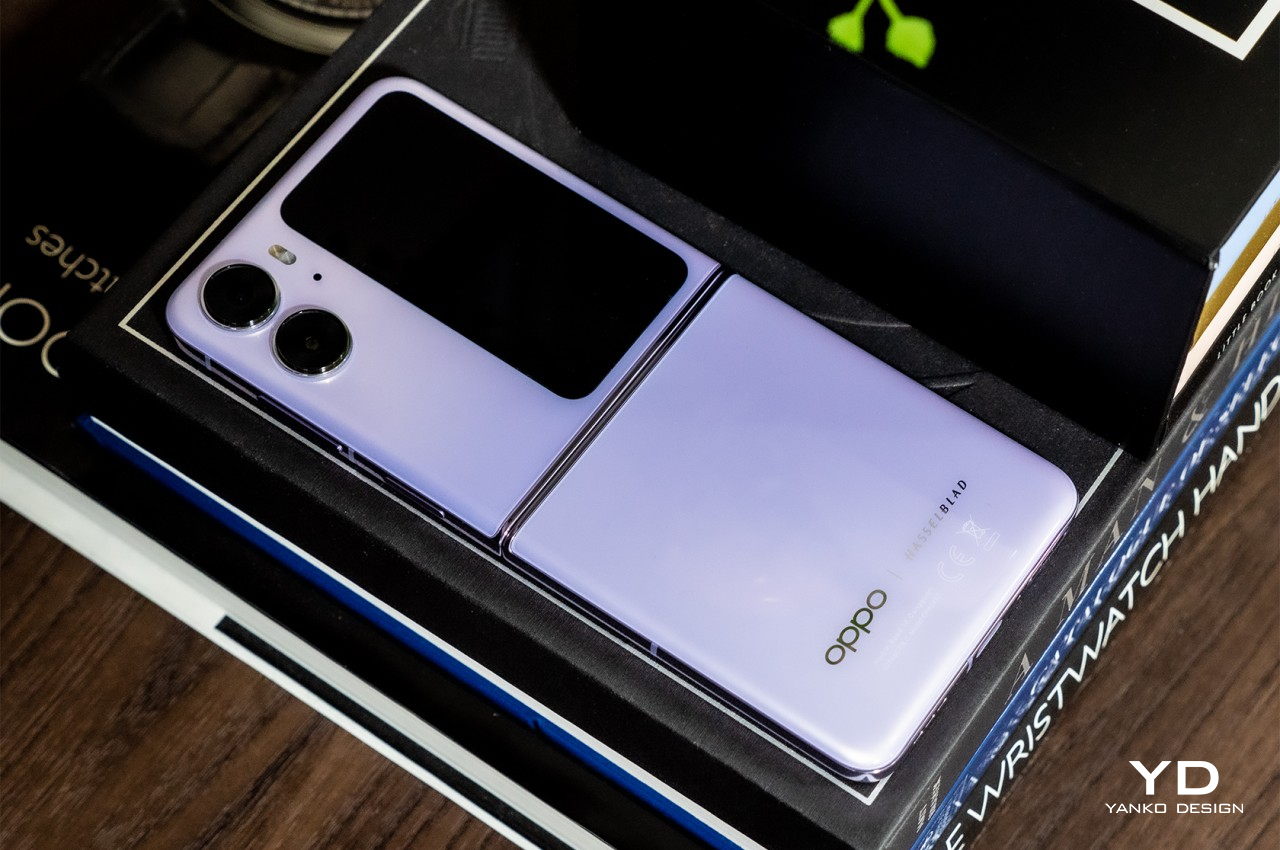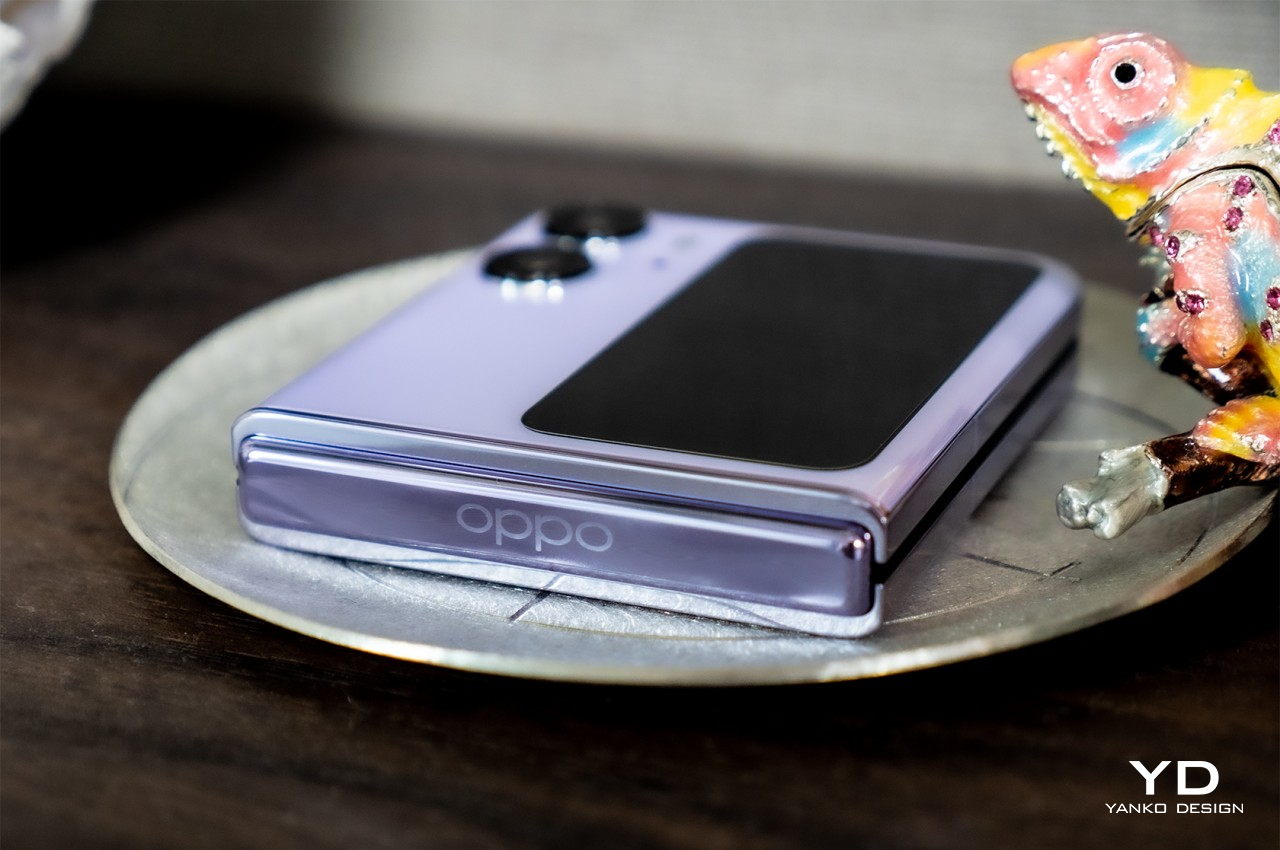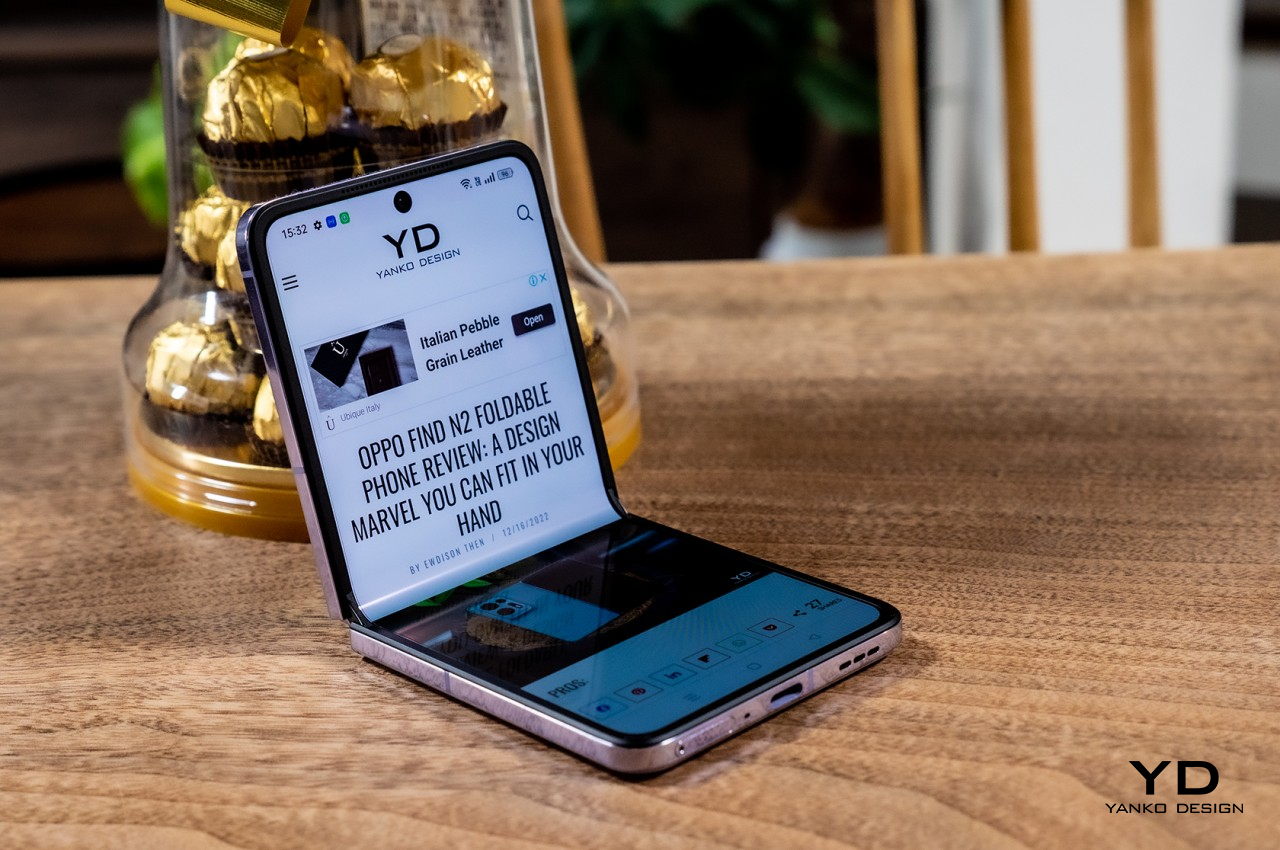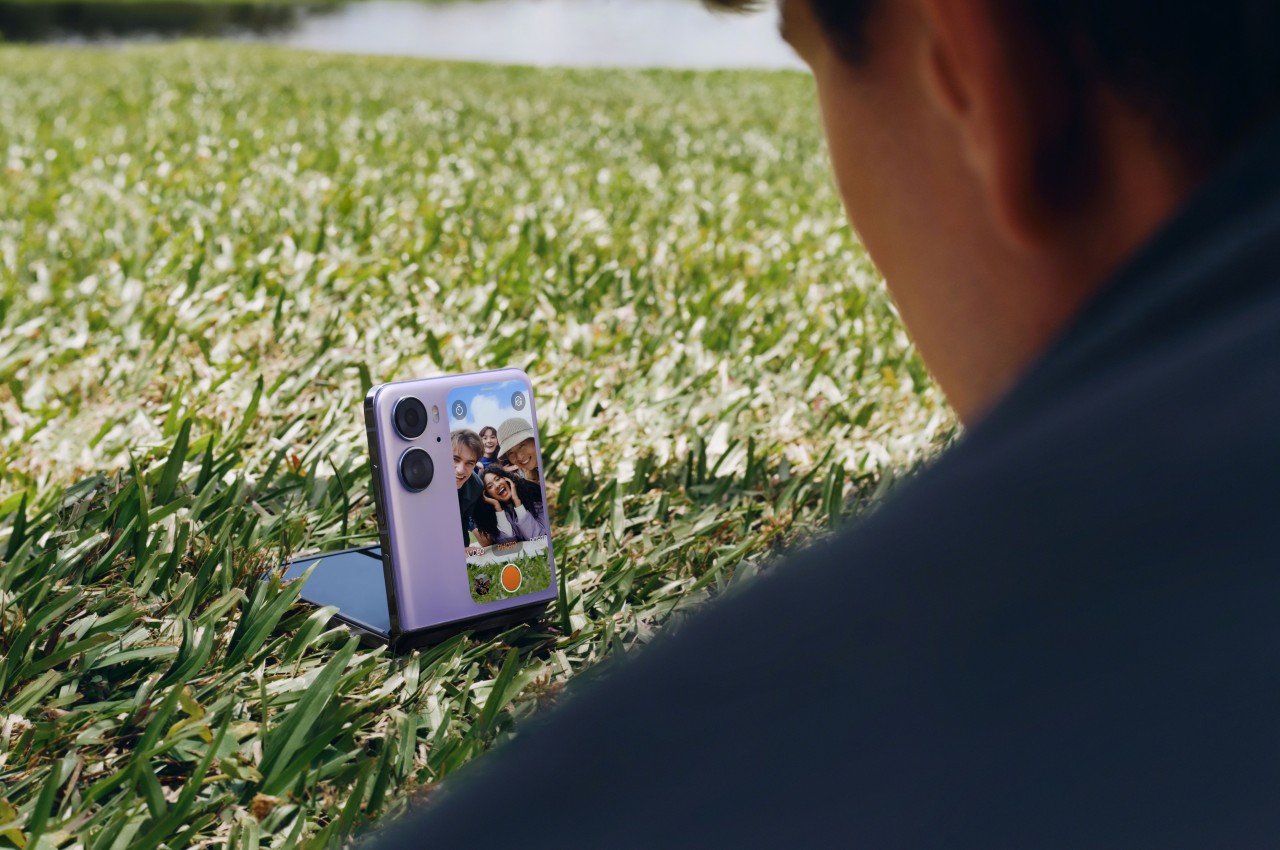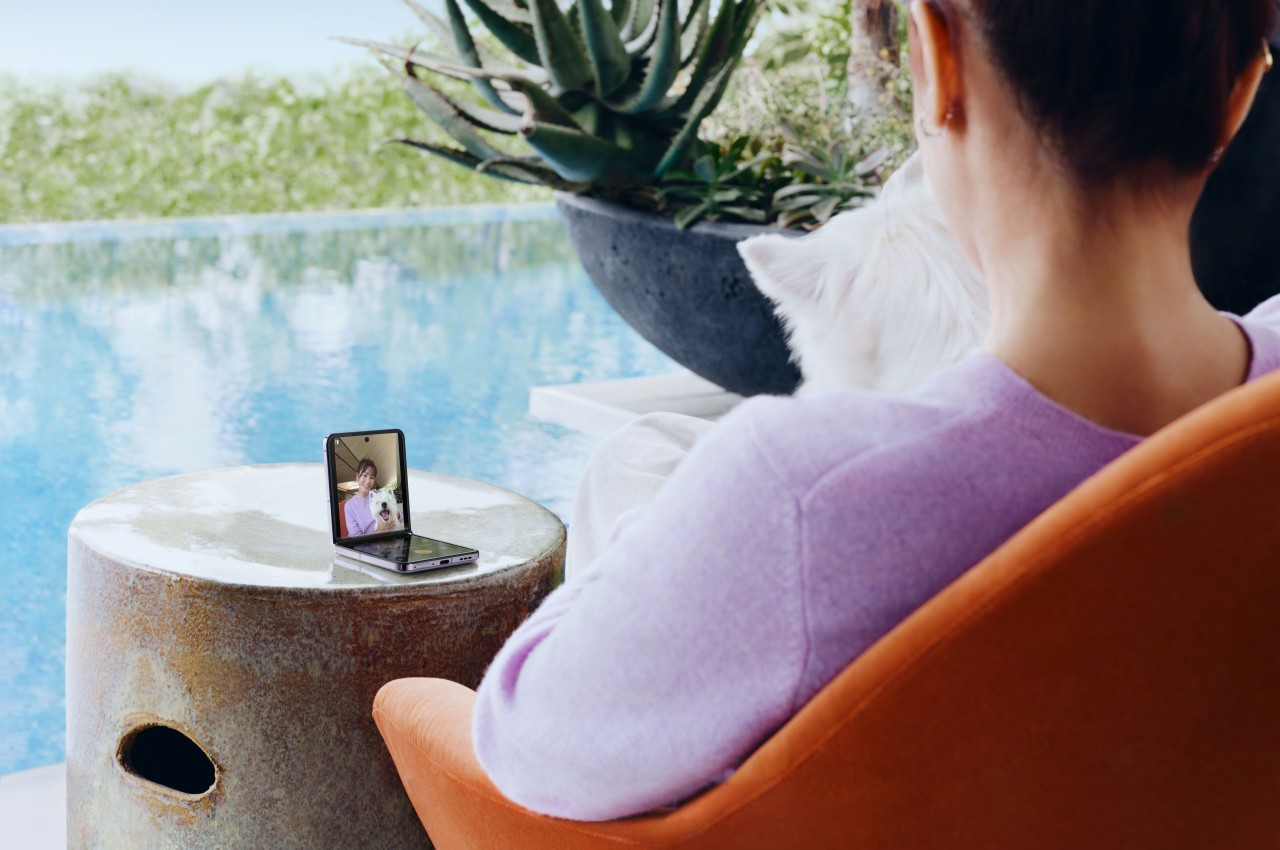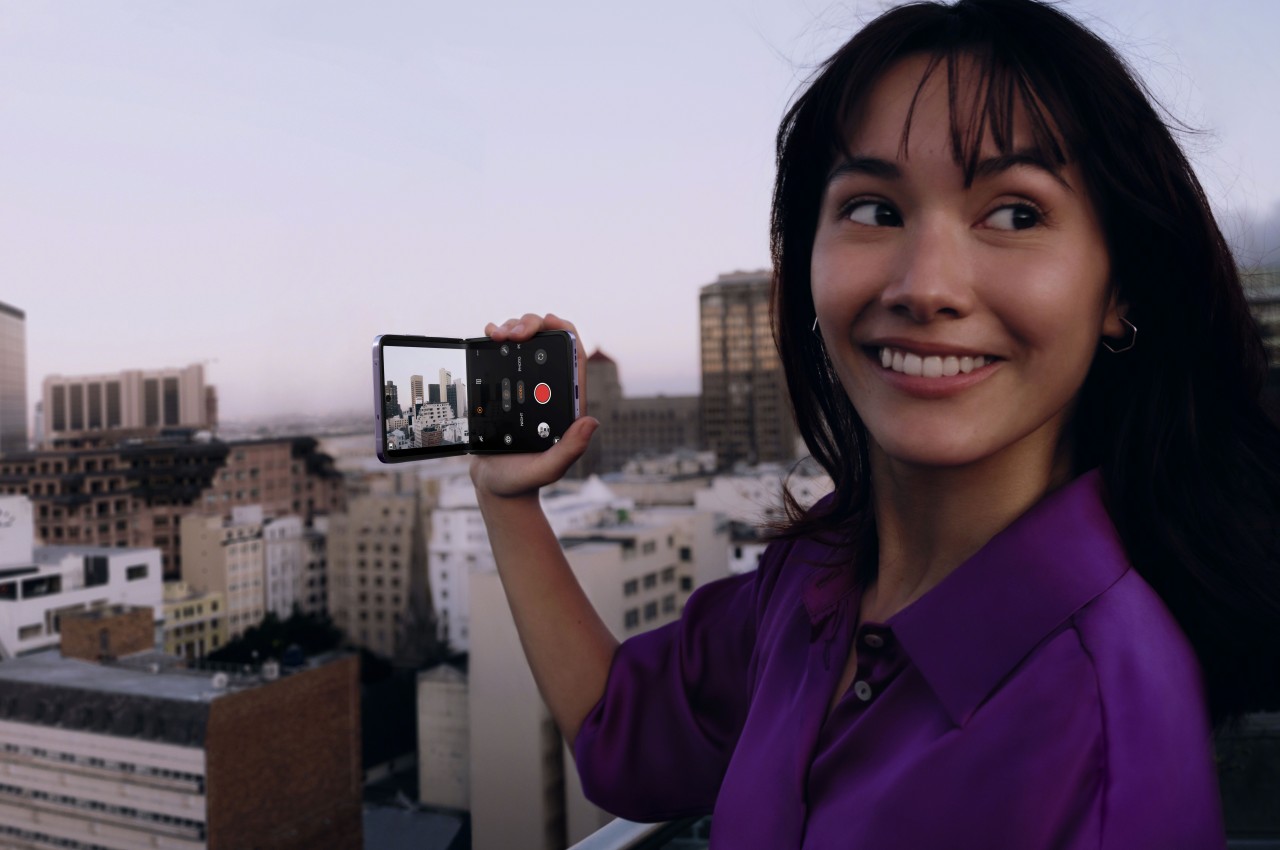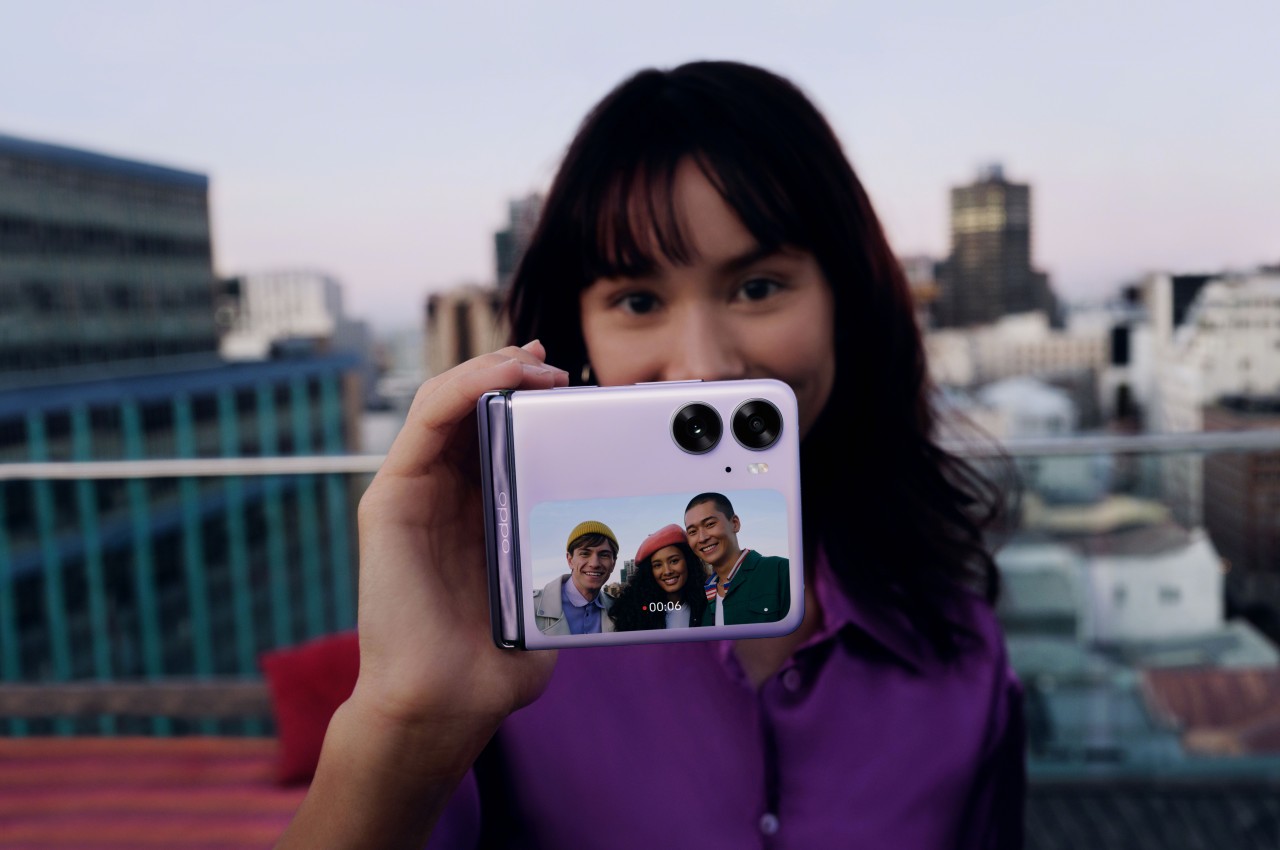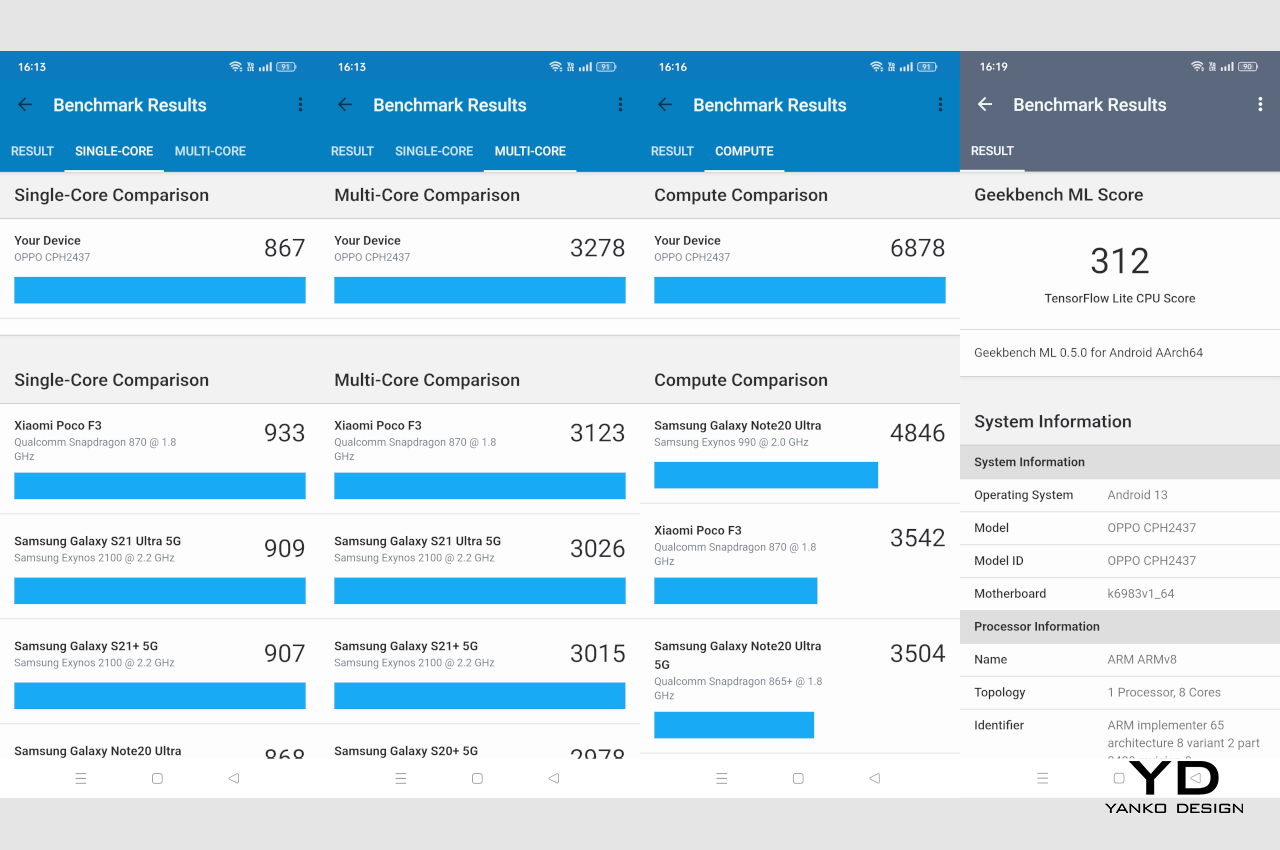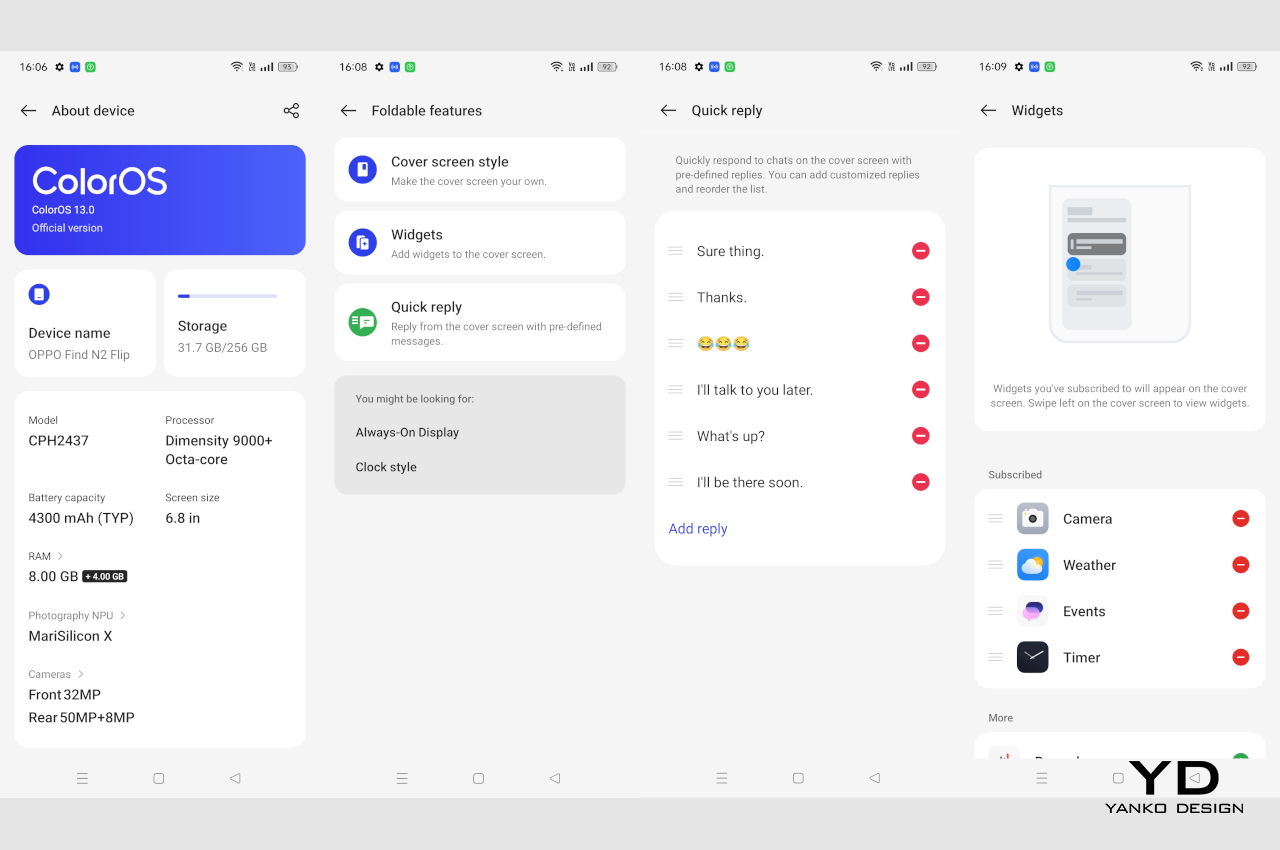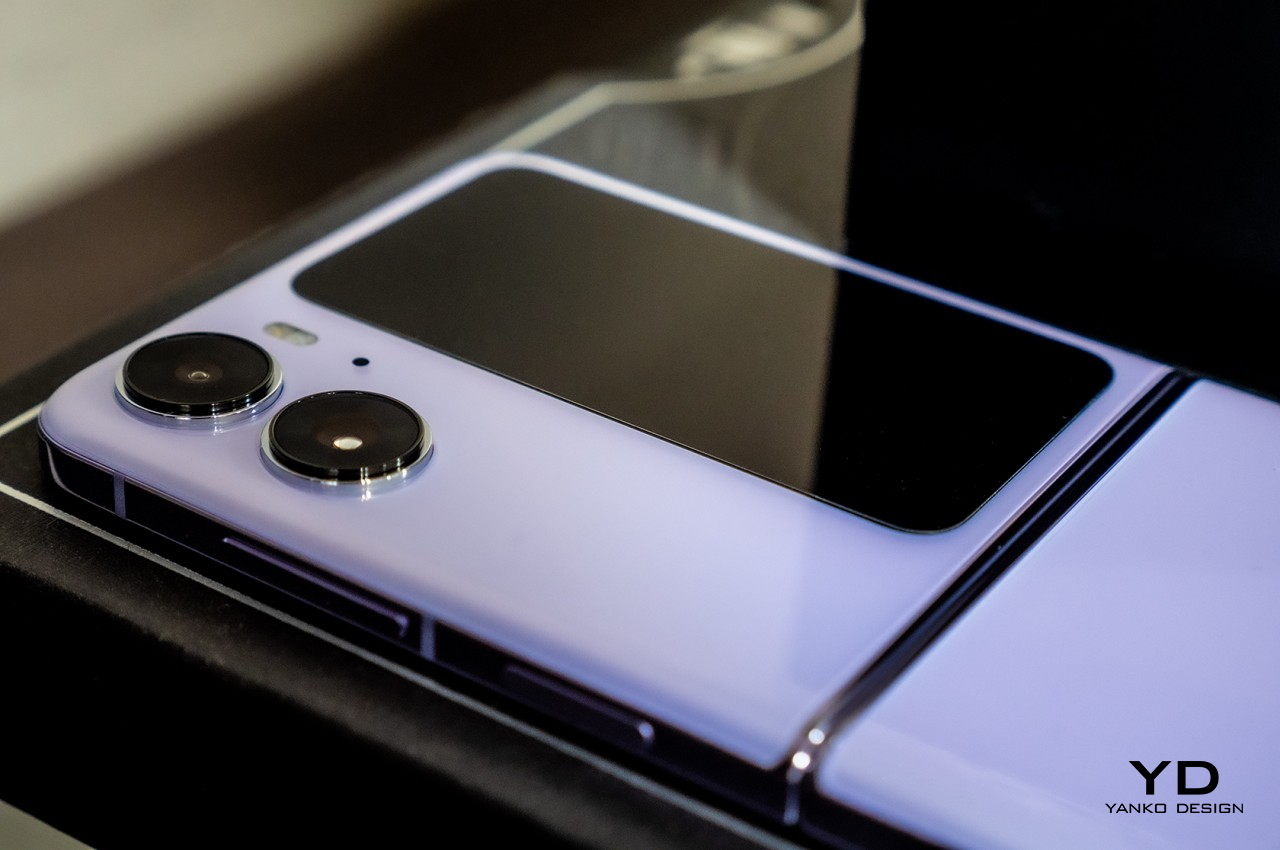
PROS:
- Excellent camera experience
- Largest battery among clamshells
- Sleek design with unique charm
- Almost invisible crease
CONS:
- Limited cover display functionality
- No wireless charging
- No IP rating
The market for foldables is still marginal, but the demand for foldable phones is steady, backed by the number of sales. 2023 seems to be a year for foldables phones, with iterations of foldable phones from familiar brands and inaugural foldables from big and not-so-big brands. Vivo released its first clamshell foldable Vivo X Flip in China along with the second generation of book-style foldable Vivo X Fold2. We checked out the Vivo’s first attempt at a flip phone.
Designer: Vivo
Aesthetics
Vivo X Flip sports a large 3.0-inch horizontal cover display. With bezel extended to the entire back of the device horizontally, the cover display is nicely integrated into the design, rather than the vast cut-out of display we’ve seen in the OPPO Find N2 Flip. The design also gives you the illusion of the cover display being bigger than it actually is.
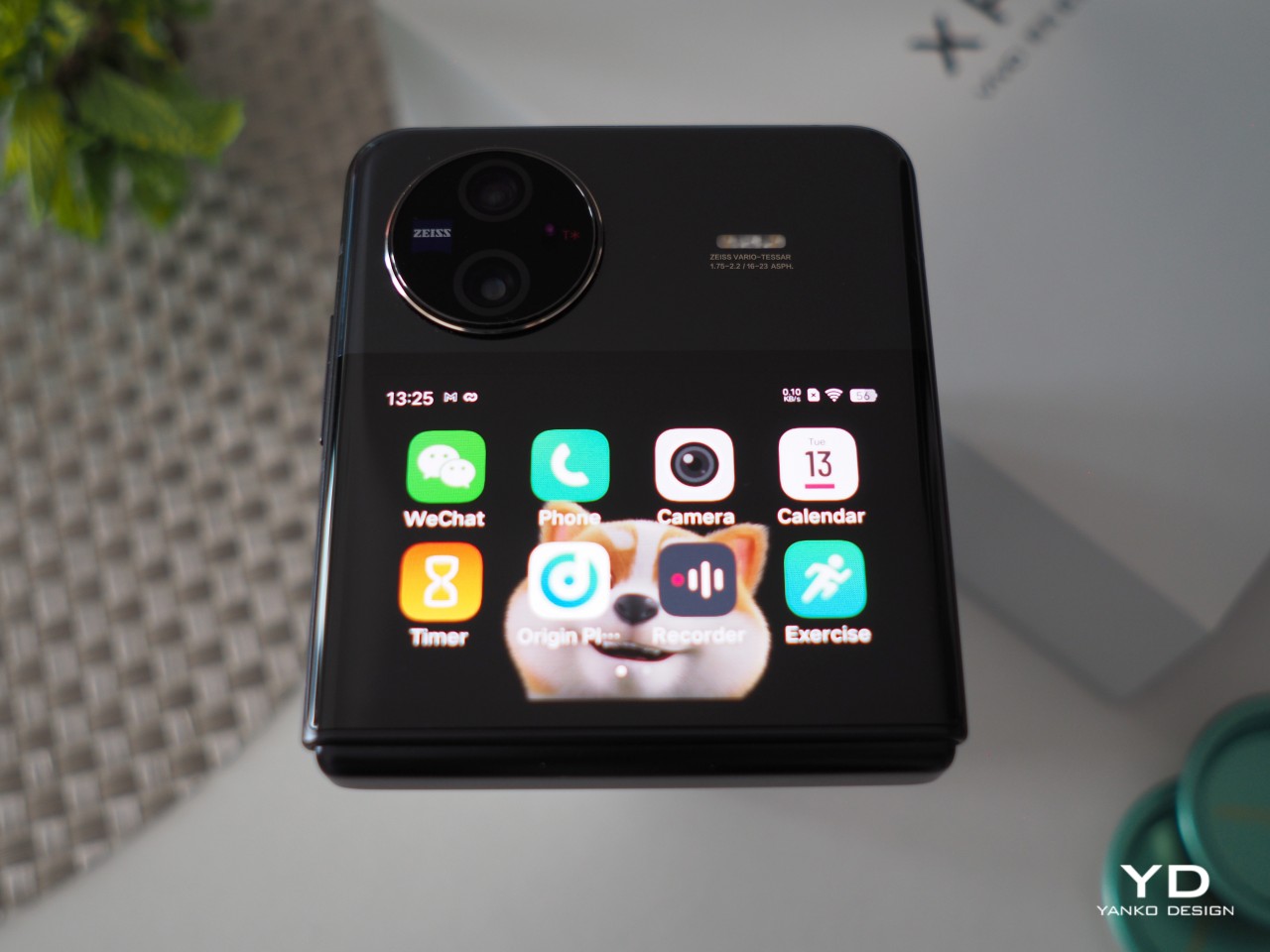
On the left upper corner, sitting atop the cover display, is a circular camera bump adorned with a Zeiss logo. The circular camera bump design echoes Vivo’s other foldable released on the same day, the Vivo X Fold2. Vivo did not compromise aesthetics for the form factor. Unfortunately, the rather big, attention-seeking Vivo logo placed on the bottom spoils the sleek and premium design of the phone.
X Flip comes in three color options: Rhombic Purple, Silk Gold, and Diamond Black. While each colorway offers unique charm and character, the eye-catcher of three is Rhombic Purple, with its quilt-like vegan leather cover inspired by luxury bags.
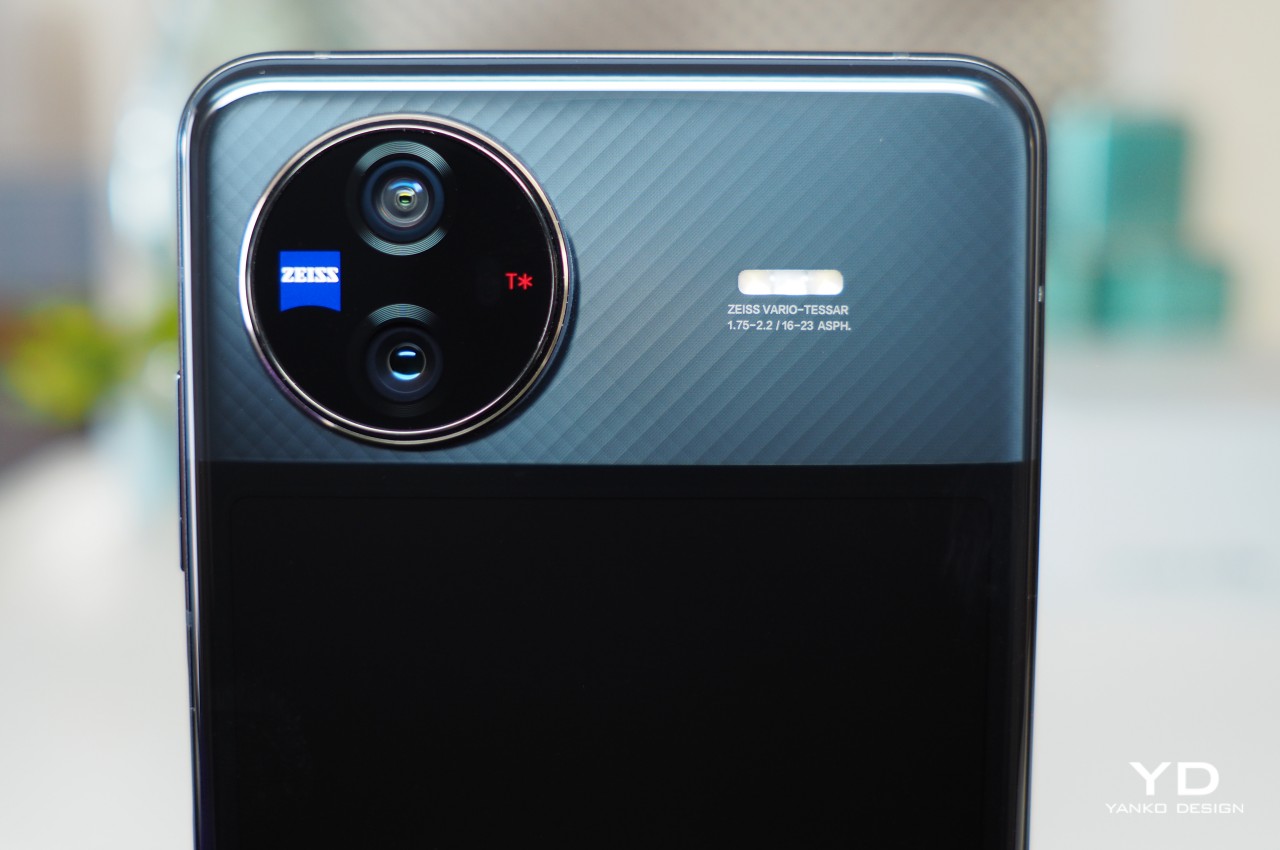
More subtle Silk Gold and Diamond Black variants feature a glass back cover. The Diamond Black we got is beautiful with a small diamond pattern reflecting light, but we find the shiny, glossy glass attracts fingerprints and smudges. The phone comes with a transparent plastic case, but that, too, is a fingerprint magnet.
Ergonomics
Vivo X Flip size varies slightly between the colorways, but the largest Rhombic Purple measures 86.40mm x 75.25mm x 17.56mm when folded or 166.42mm x 75.25mm x 8.19 mm when flipped open. It is practically the same size as the OPPO Find N2 Flip. The Vivo X Flip closes all the way flat and has absolutely no gap when closed. When unfolded, the phone looks and feels like a regular smartphone. The crease is barely noticeable for the eyes and very subtle for the fingertips thanks to the 5.3mm waterdrop hinge structure.
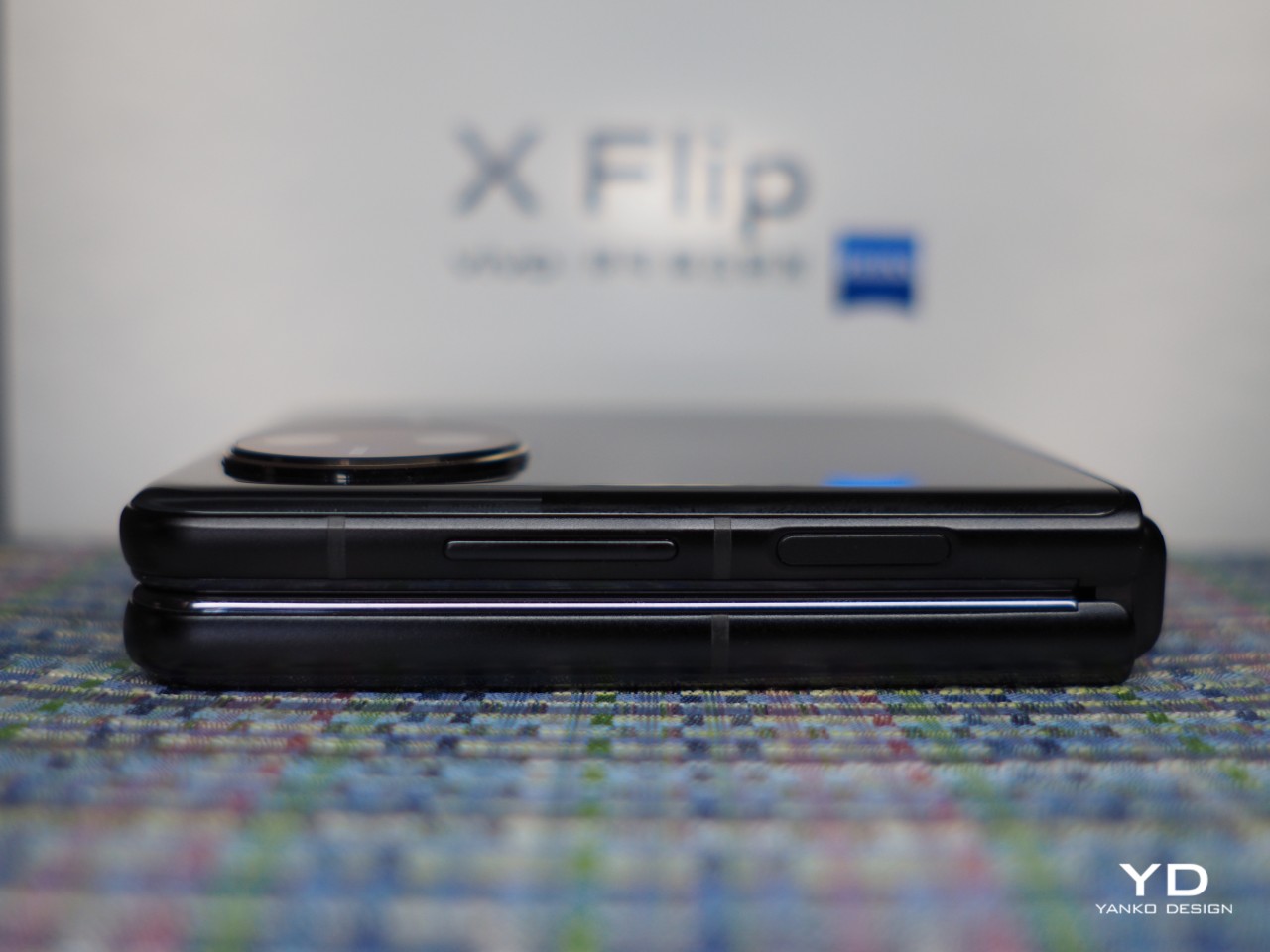
The phone feels comfortable to hold in your hands. The build quality of X flip feels premium and gives you satisfaction each time you open and close the phone. The Vivo X Flip is certified by TUV Rheinland to endure up to 500,000 folds, so there is no need to worry about durability.
The X Flip can stay stand steadily on its own at the range of somewhere between 60 to 120-degree angle. Try to sit the phone at an angle wider or narrower than that, and it will slowly close or open.
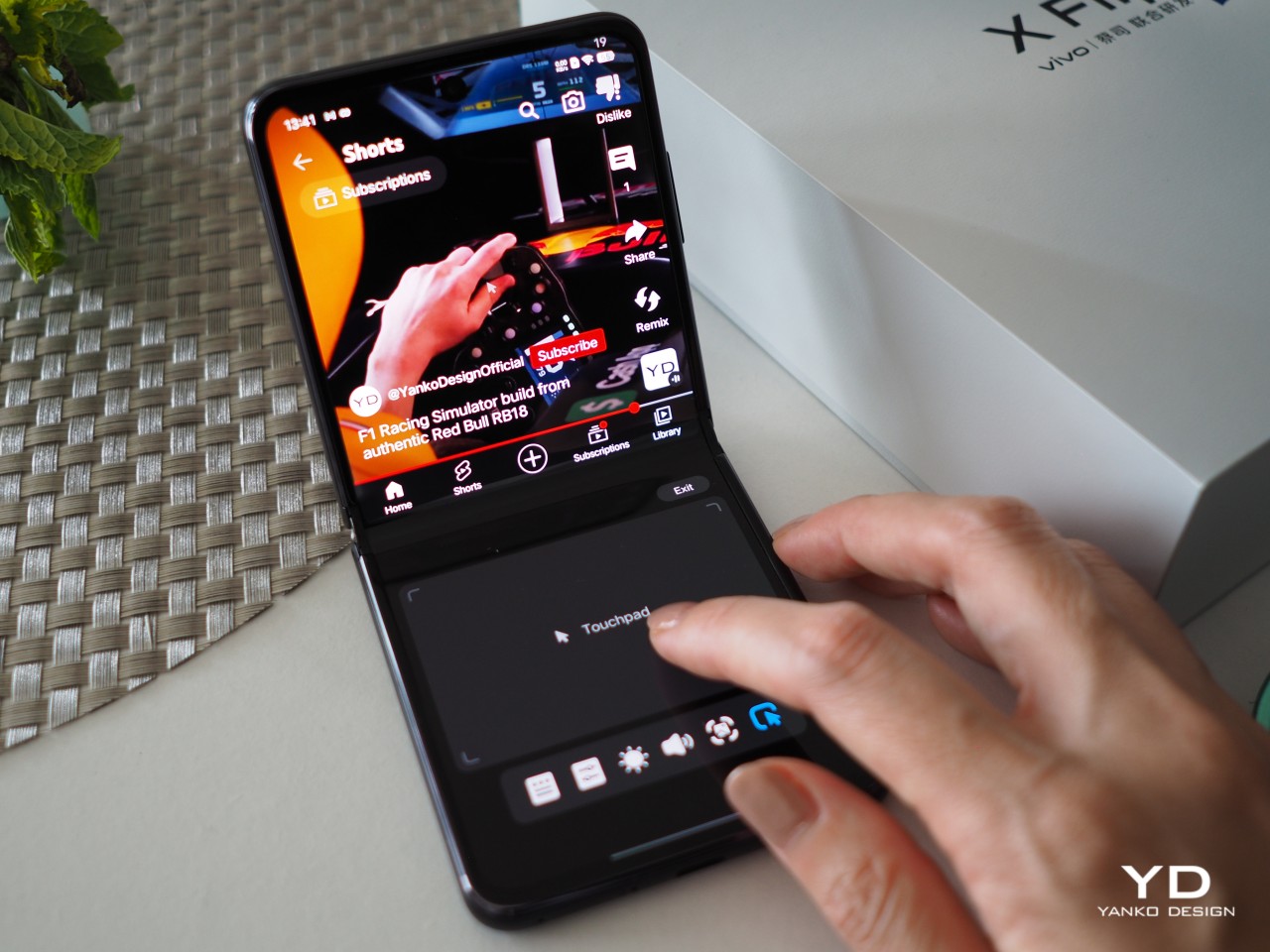
Performance
Vivo X Flip is powered by Snapdragon 8 Gen 1 and comes with 12GB of ram that can be expanded by up to 8GB and either 256 GB or 512 GB of storage. It’s not the latest high-end Qualcomm chip, but plenty powerful. The clamshell runs Origin OS 3 on top of Android 13.
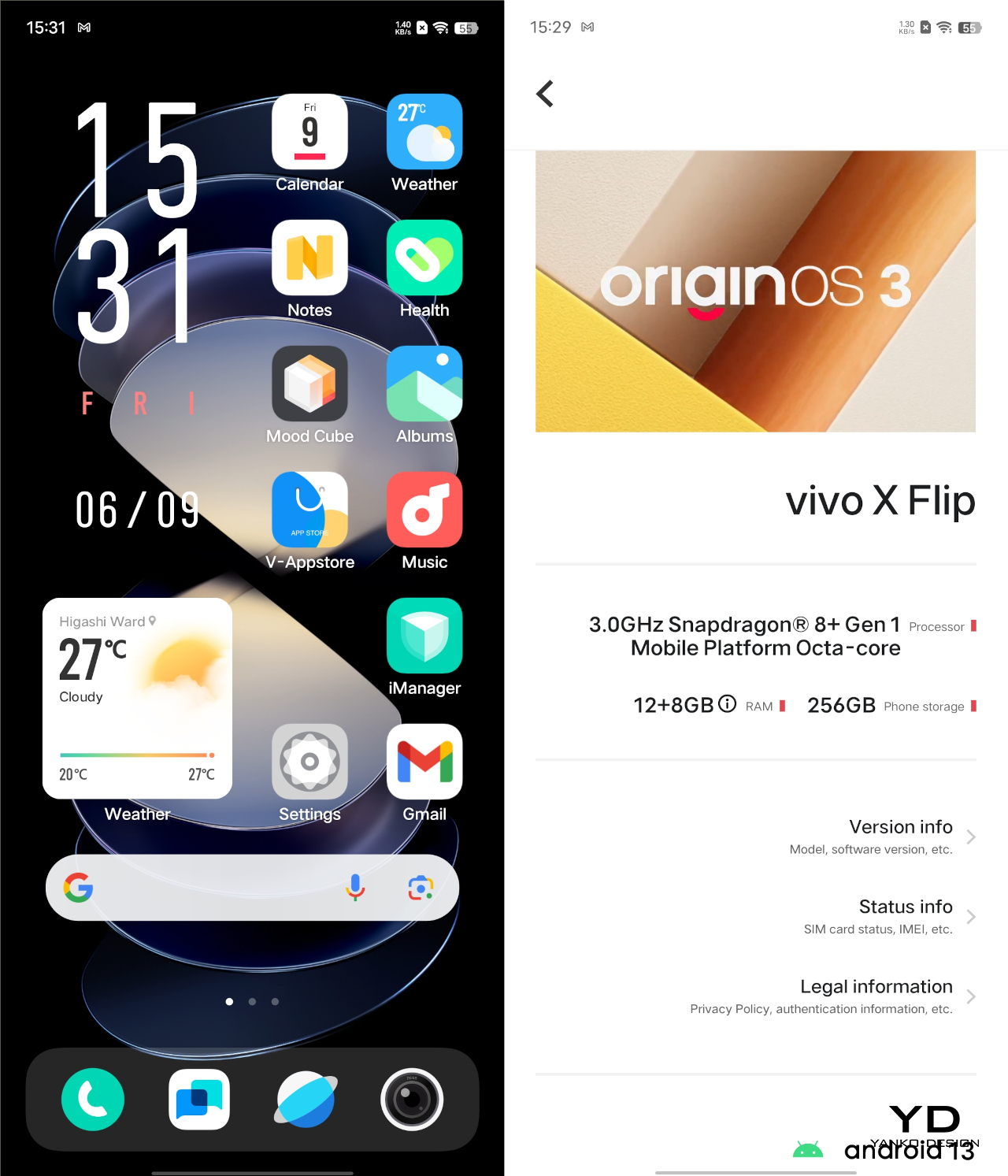
The X flip features a 6.74-inch screen with a 2520 x 1080 resolution. It has a 21:9 aspect ratio and an LTPO 120 Hz refresh rate. No official peak brightness figure is provided, but the main screen is bright enough under harsh sunlight. Unlocking the phone can be done using the impressively fast and accurate fingerprint sensor on the side.
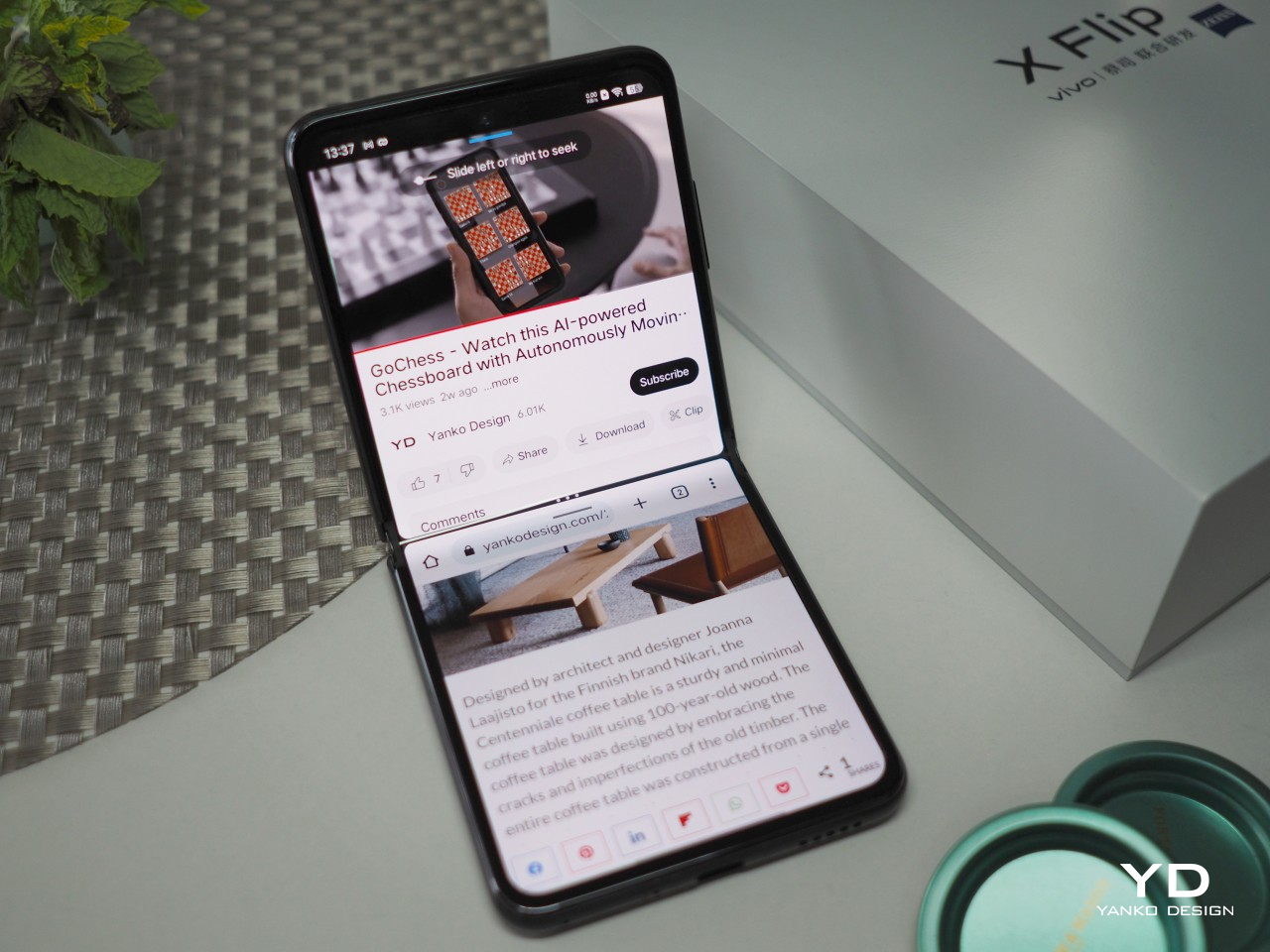
As for the 3.0-inch cover screen, it offers a broader range of possibilities compared to Samsung Z Flip4 or OPPO Find N2 Flip. You can swiftly access quick settings, check notifications, make and receive calls, take pictures and videos, record audio, check the weather, and set a timer. You can use WeChat with full keyboard input, use a navigation app, watch videos, or even lock/unlock your car on the cover screen. But these are limited to Chinese apps. Vivo didn’t give X Flip the freedom to run any app on the display screen, and it may not be a big issue since this is a China-only phone, at least for now.
However, it feels like a missed opportunity for the phone to have a large 3.0-inch of canvas to play with, yet we’re limited in what we can do with it. If Vivo wanted it, we could run the entire phone without ever having to open it.
It’s no secret that foldable phones lag behind premium camera phones when it comes to mobile photography. But Vivo’s well-regarded improvements in imaging software in recent years are present in X Flip, and the clamshell can produce excellent pictures. X Flip boasts 50MP main camera that employs IMX 866V with 1/1.149”. It has an f/1.75 aperture and features OIS. The 12MP ultrawide camera with f/2.2 aperture also is equipped with autofocus. And there is a 32MP selfie camera.

Ultrawide

Wide

2x Zoom
X Flip’s main and ultrawide angle capture images with nice details and great dynamic range. The color rendered is on the warmer side, but nothing unnatural. Green, notably lighter green, tends to be more vibrant than it actually is. Zeiss mode produces images with softer green.

Normal 1x

ZEISS 1x

Normal Macro

ZEISS Macro
Low-light photos the X flip capture are impressive too. Vivo employs aggressive shadow brightening while ensuring good white balance and color saturation. Different light sources are adequately exposed, and the details are retained. It seems Vivo is proud, and rightly so, of its night mode and decided to apply it to low-light photography by default.

Regular Mode

Night Mode
One advantage of a flip phone is that you can prop it up as its own tripod or let your subject see the framing as you take photos. And you can see Vivo puts significant consideration and care in this area. The preview mode shows the cropped view of the framing. Vivo added a dual-preview letting your subject see the cropped picture along with the entire framing by splitting the cover screen into two. This lovely function allows your subject to check the whole composition of the photo and not just the zoomed view of the photo you usually get with flip-cover displays.
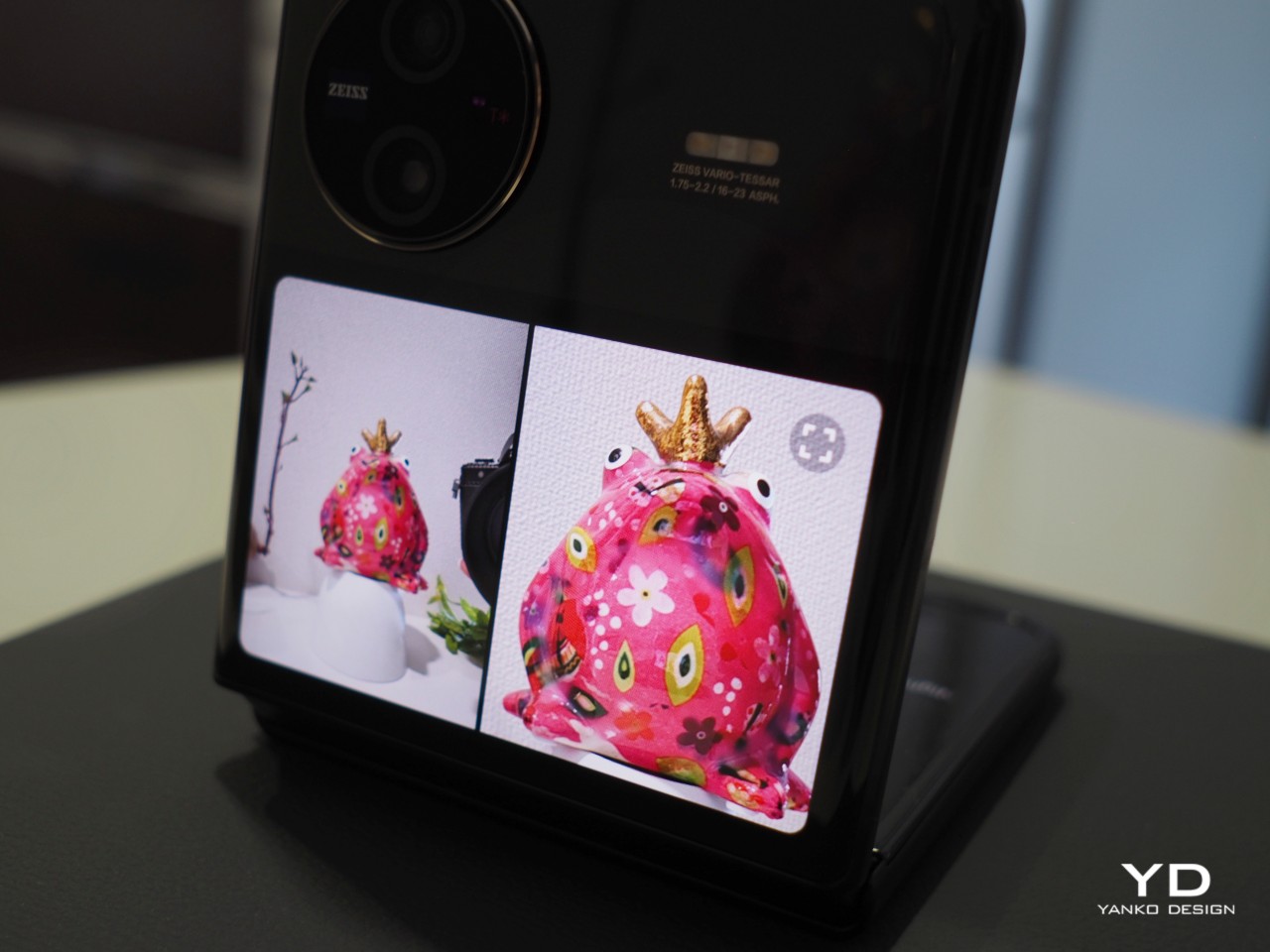
You can take selfies with the rear cameras by launching the camera directly from the cover screen or switching to Rear HD Selfie mode from internal camera mode. You can access camera settings like camera timer, aspect ratio, and shutter release mode. For Portrait and video, filters and beauty modes can be applied via the cover display. What’s fun is that you can pinch in to access the ultrawide’s 0.6x on Portrait and Photo via the cover display.

Of course, you can shoot selfies with the internal camera. But with the ability to take selfies with the superior rear cameras, the internal camera will likely be left for video calls only.
As for video recording, Vivo X Flip can shoot up to 4k 60fps with the main camera and up to 4k 30fps with the ultrawide. Both the main and the ultrawide camera are equipped with stabilization. Weirdly, the preview on the cover screen is not available for video. And what is more puzzling is that recording selfie videos with the cover display is limited to 1080p 30fps, and no stabilization is available.

Macro
Vivo X Flip packs the largest battery for a flip phone at 4,400 mAh and supports 44 W wired charging. The battery is more than enough to get you through the day. Unfortunately, it does not come with wireless charging capability or an IP rating.
Sustainability
While many smartphone manufacturers are putting efforts into being environmentally responsible, it seems they throw it out of the window when it comes to foldable smartphones. Sadly Vivo is no exception here. For example, Vivo makes no mention of using sustainable or recycled materials on the flip phone or its package.
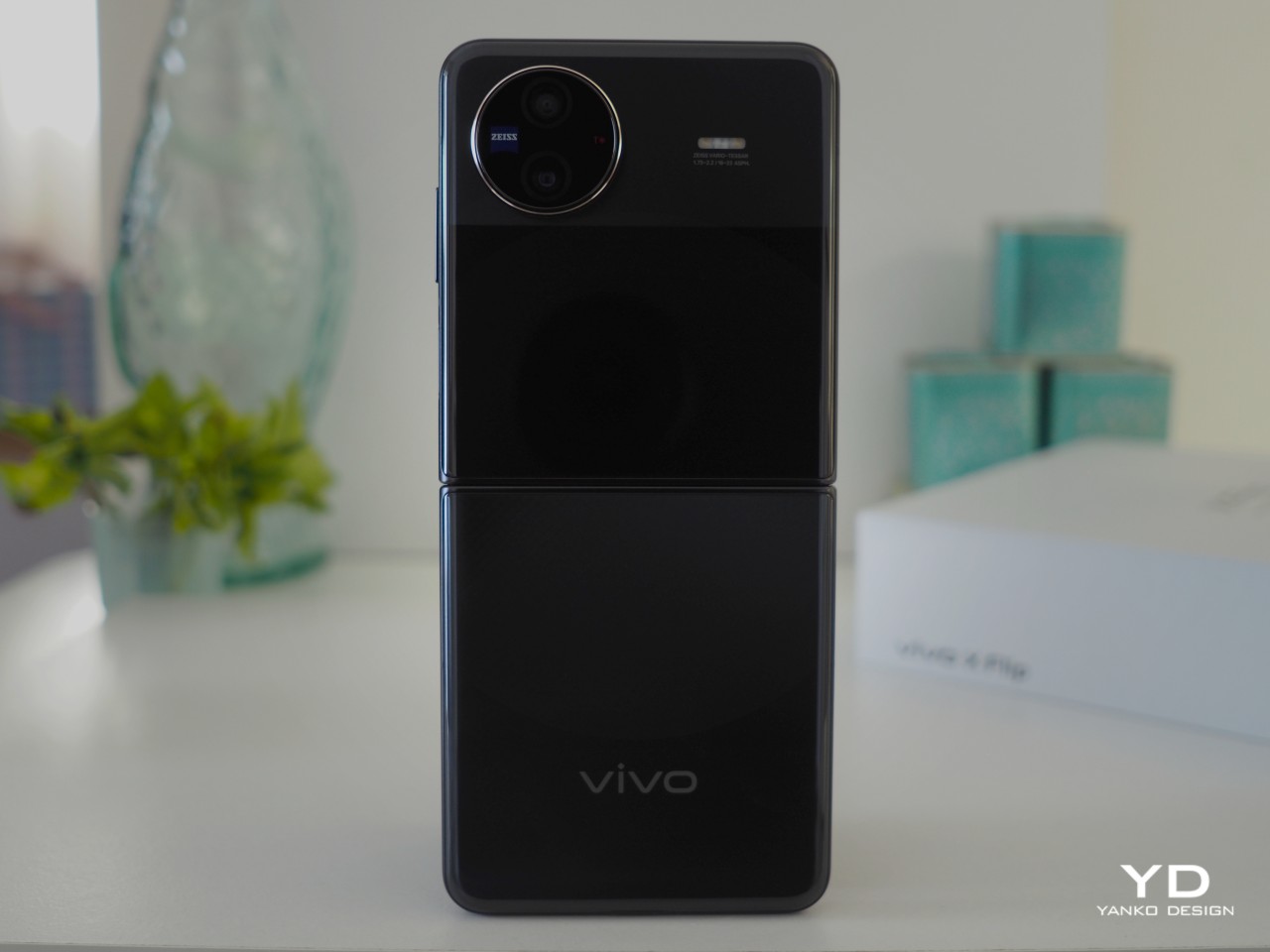
That said, the X flip is built well and rated to withstand at least 500,000 opens and closes, so it won’t die on you too early. At least if you’re careful. No formal IP dust and water resistant rating is given, though, so you’ll need to take extra measure to keep it away from risky environments. It would be great to see Vivo leading the area of sustainability in this form factor segment, but that doesn’t seem to be on its radar yet.
Value
Currently only available in China, Vivo X Flip is priced at CNY 5999 ($838) for 256GB of storage and CNY 6699 ($936) for 512GB storage. The X Flip has a lot to offer as there are only a few competitors for flip phones out there, and X Flip can be one of the top picks when it was launched. But now, with Motorola Razr+ and its larger, fully functional display, as well as the upcoming Galaxy Z Flip5, the competition is getting stiffer. No global availability and limitations on cover display functionality are major drawbacks that won’t help the situation.
Verdict
Even though the limitation on what apps you can run on the cover screen has left us disappointed, Vivo has done so much right with X Flip. With its sleek design, highly customizable Origin OS 3, excellent camera experience, bright main screen amongst flip phones, beefy battery, and a large and responsive cover screen, Vivo certainly left a mark on the clamshell segment. It’s timing, however, leaves something to be desired, and it will be facing tough rivals in the coming months, even in its exclusive Chinese market.
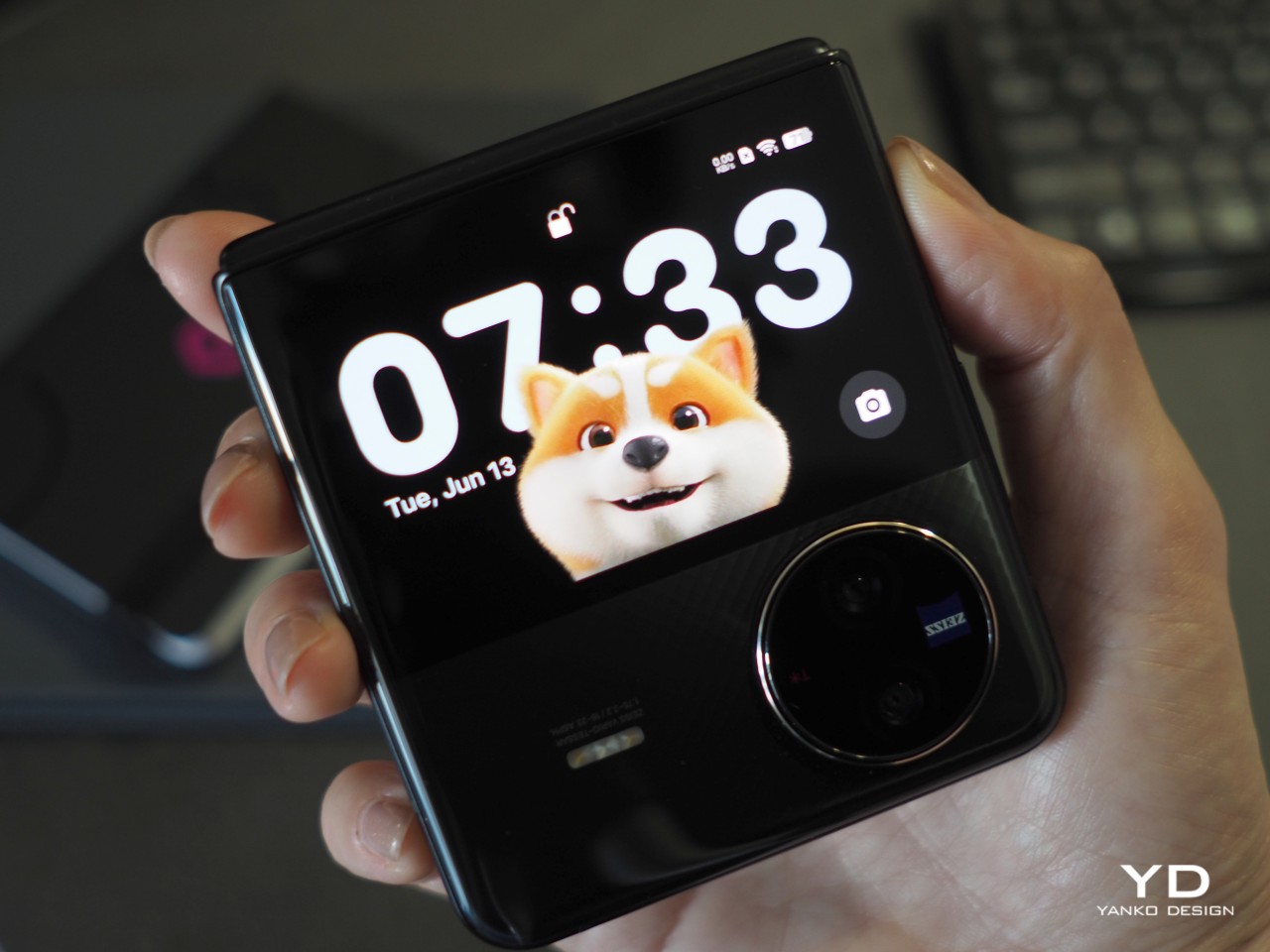
The post Vivo X Flip Review: Playful, practical, almost perfect first appeared on Yanko Design.
